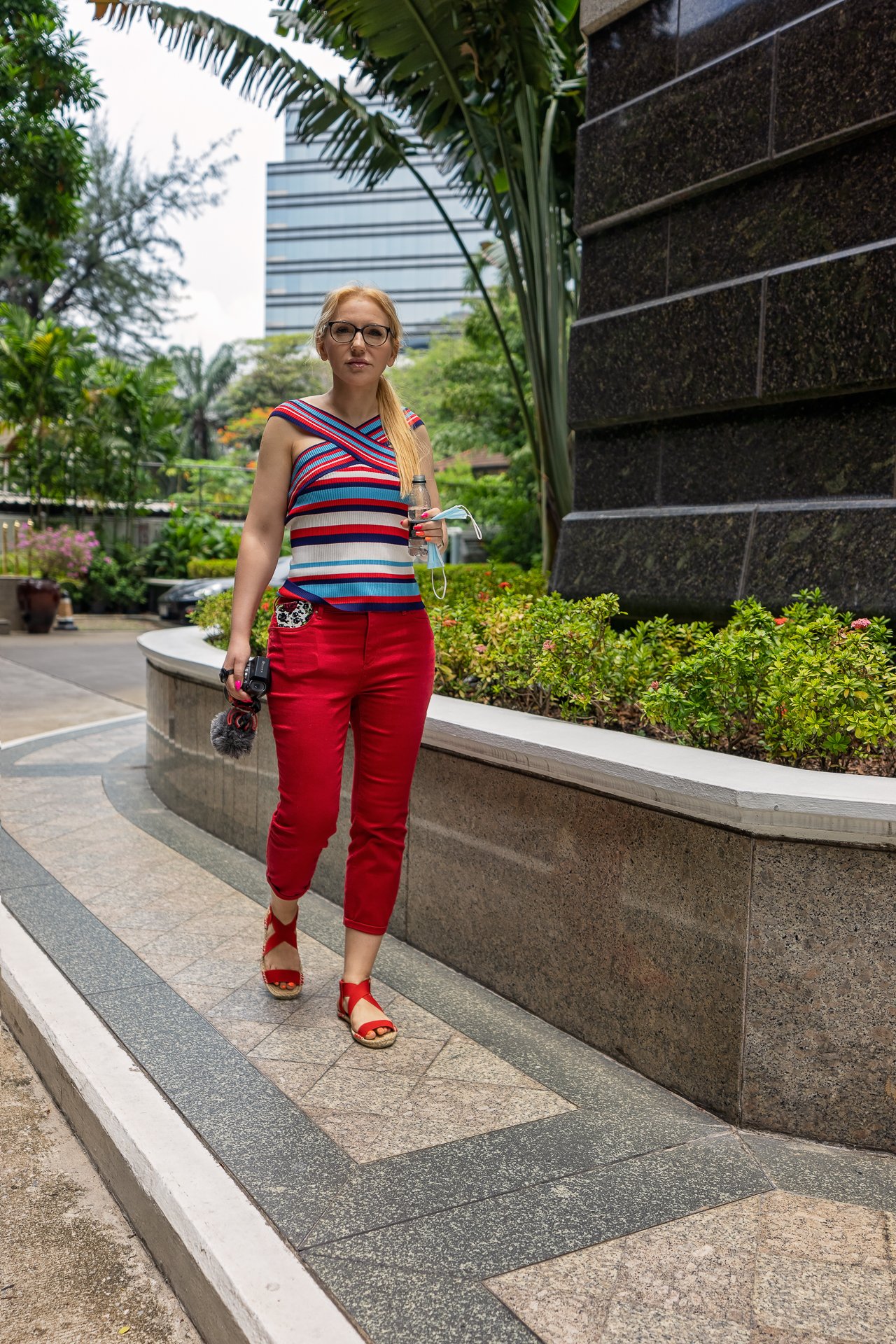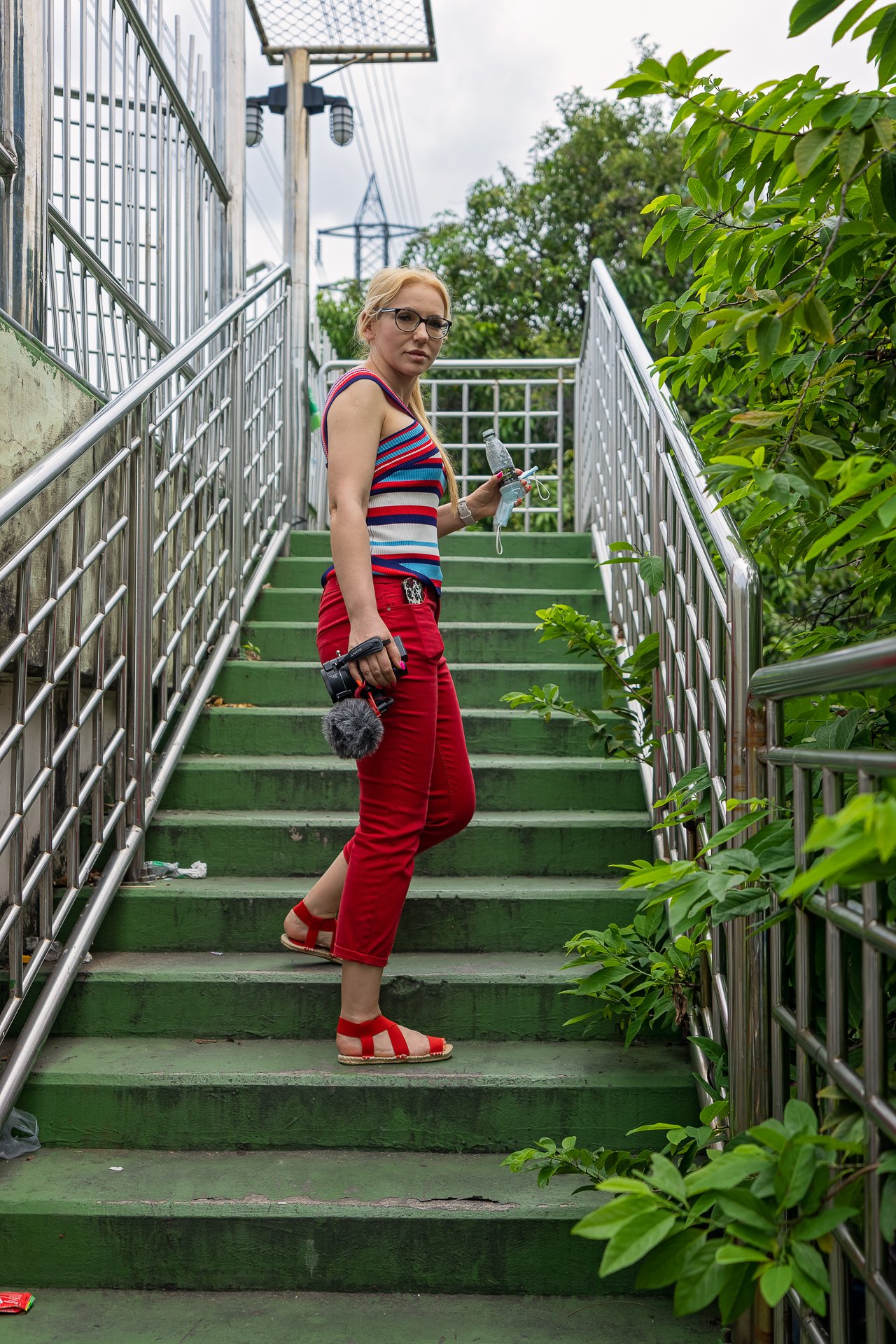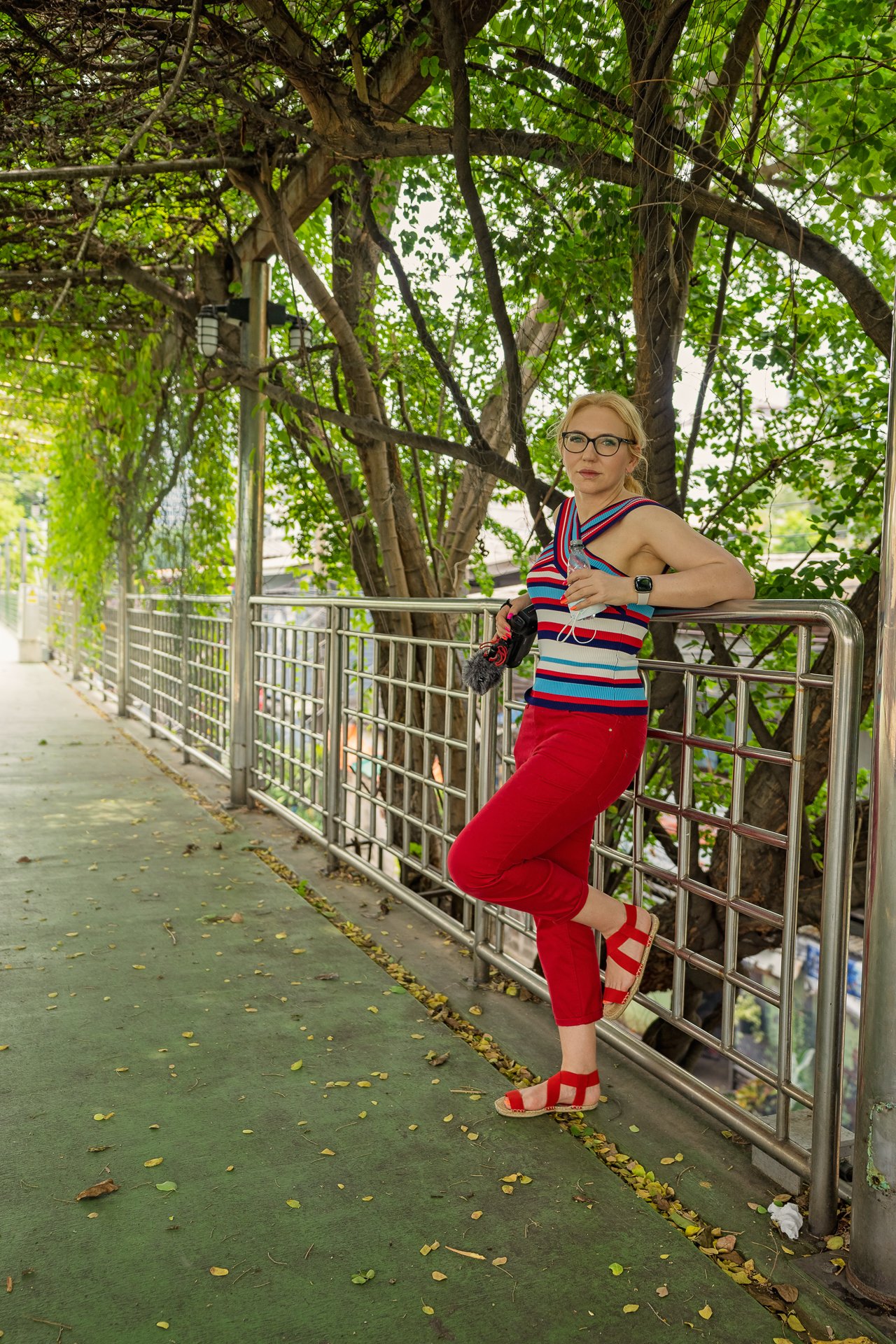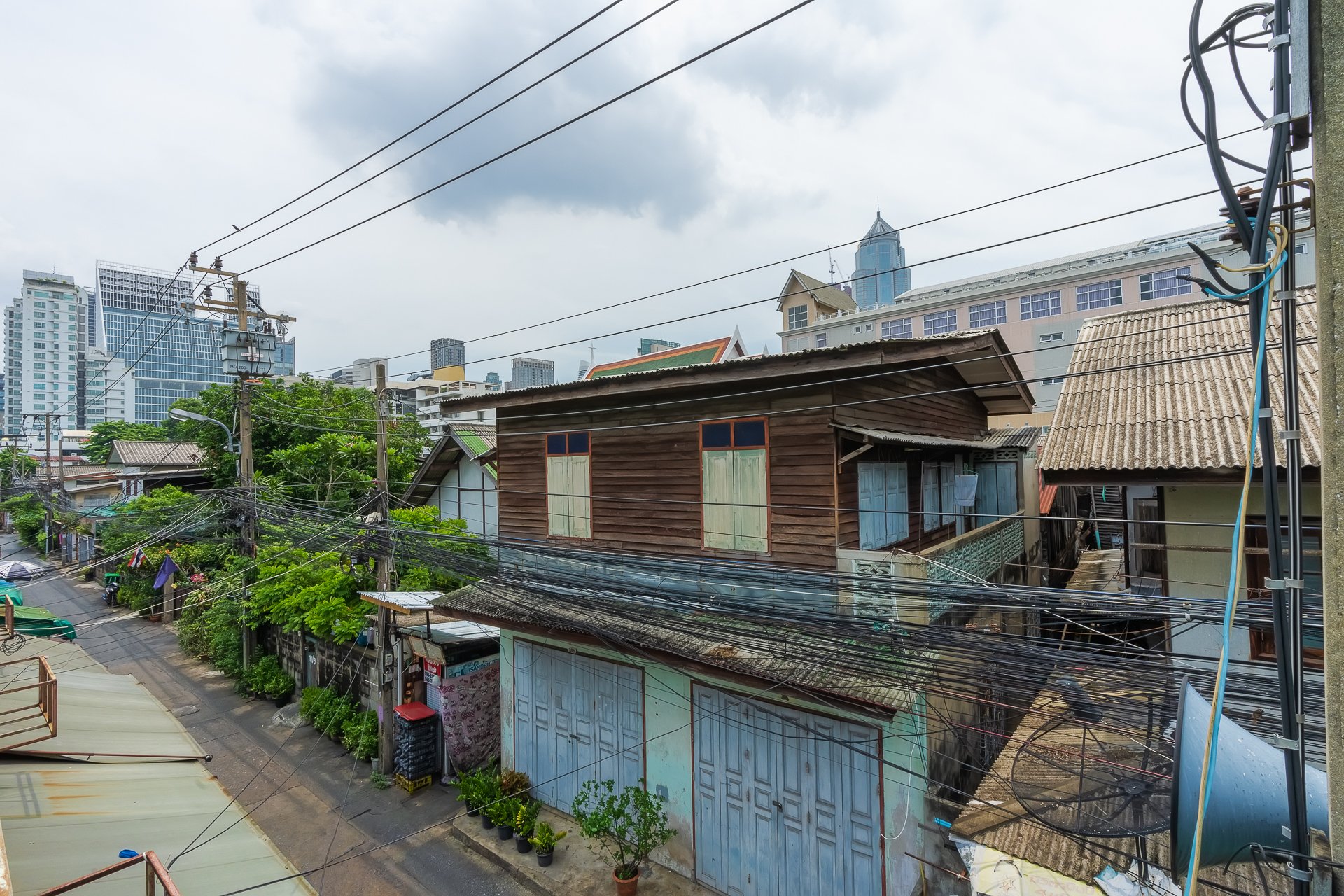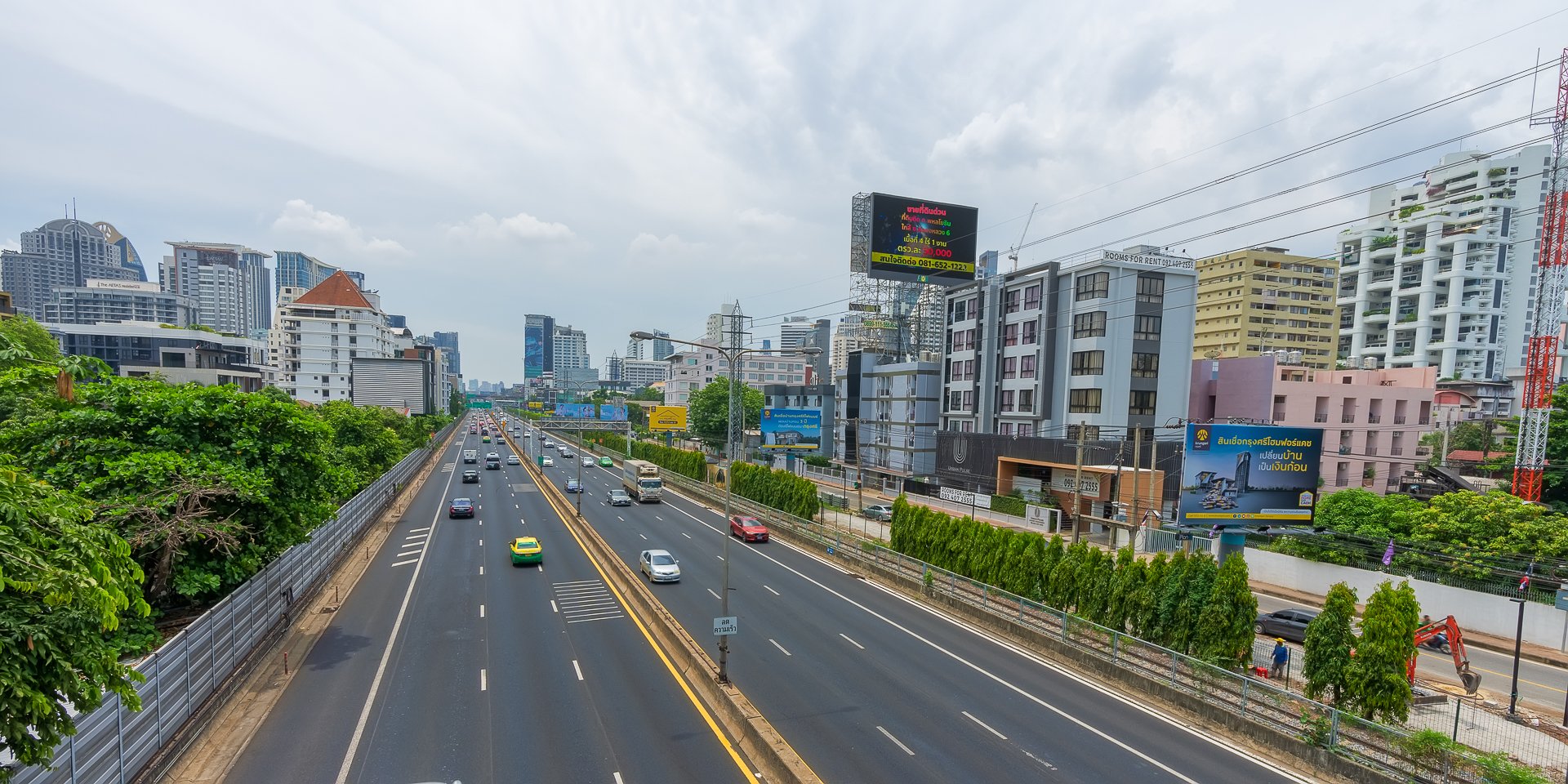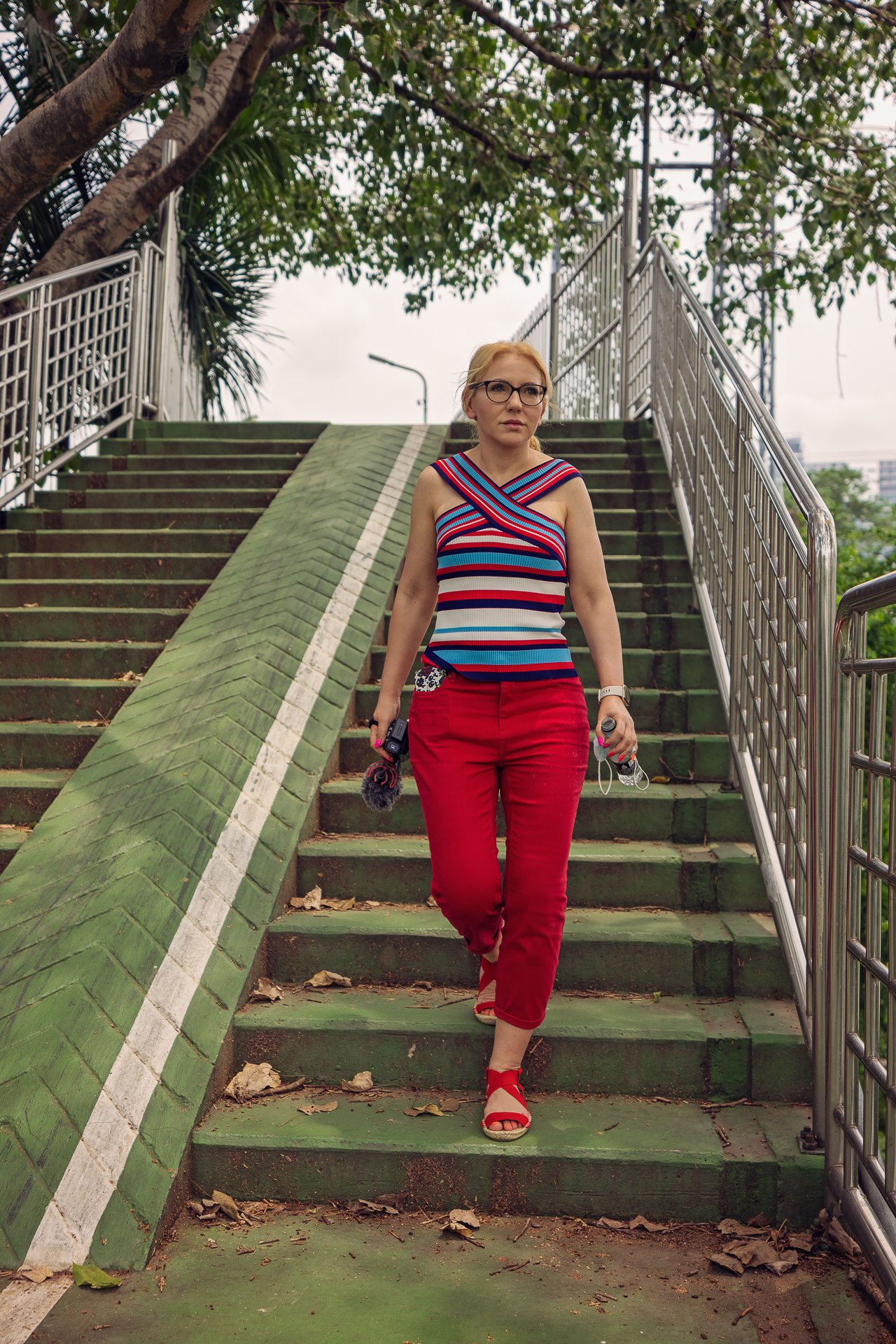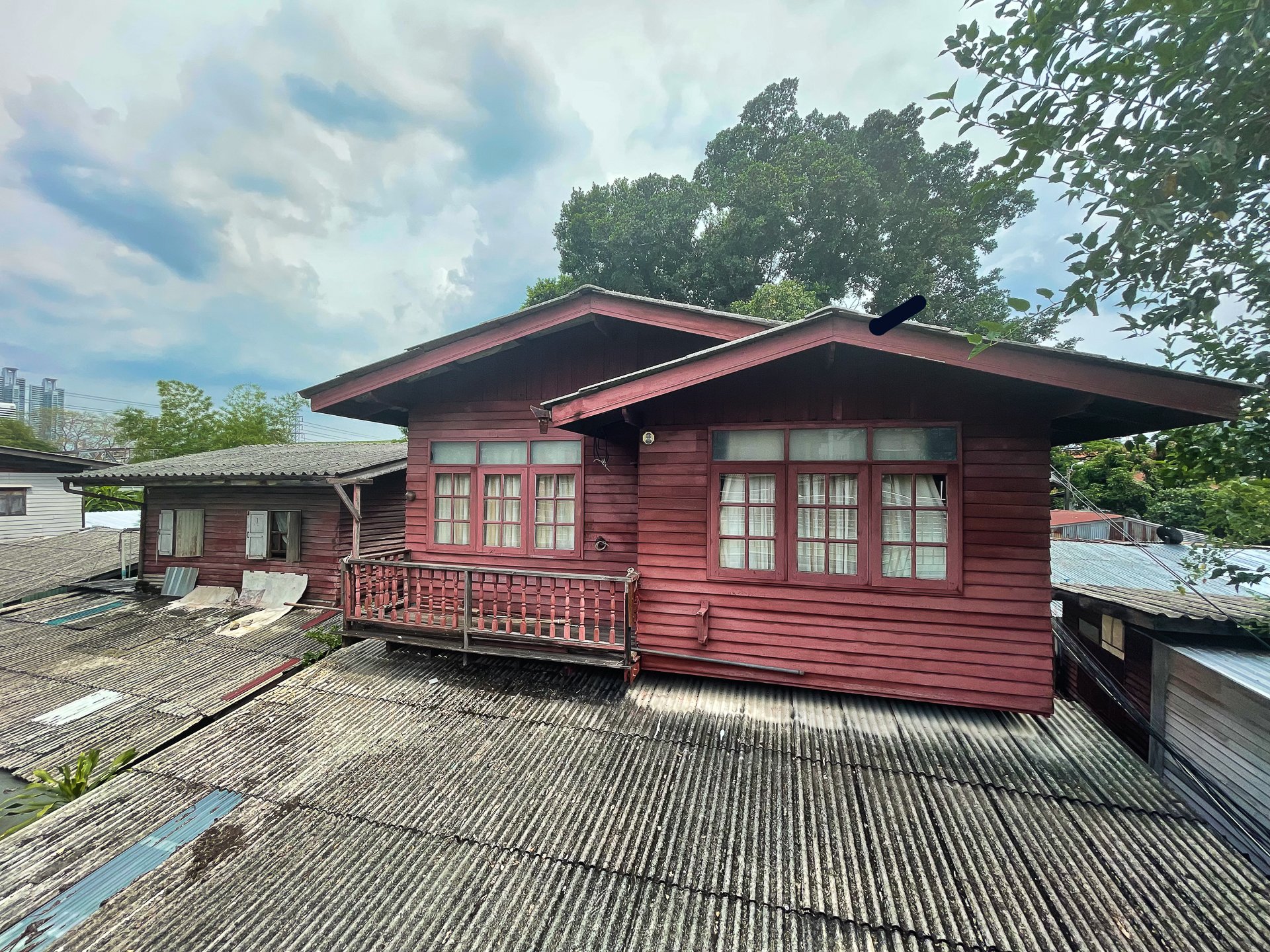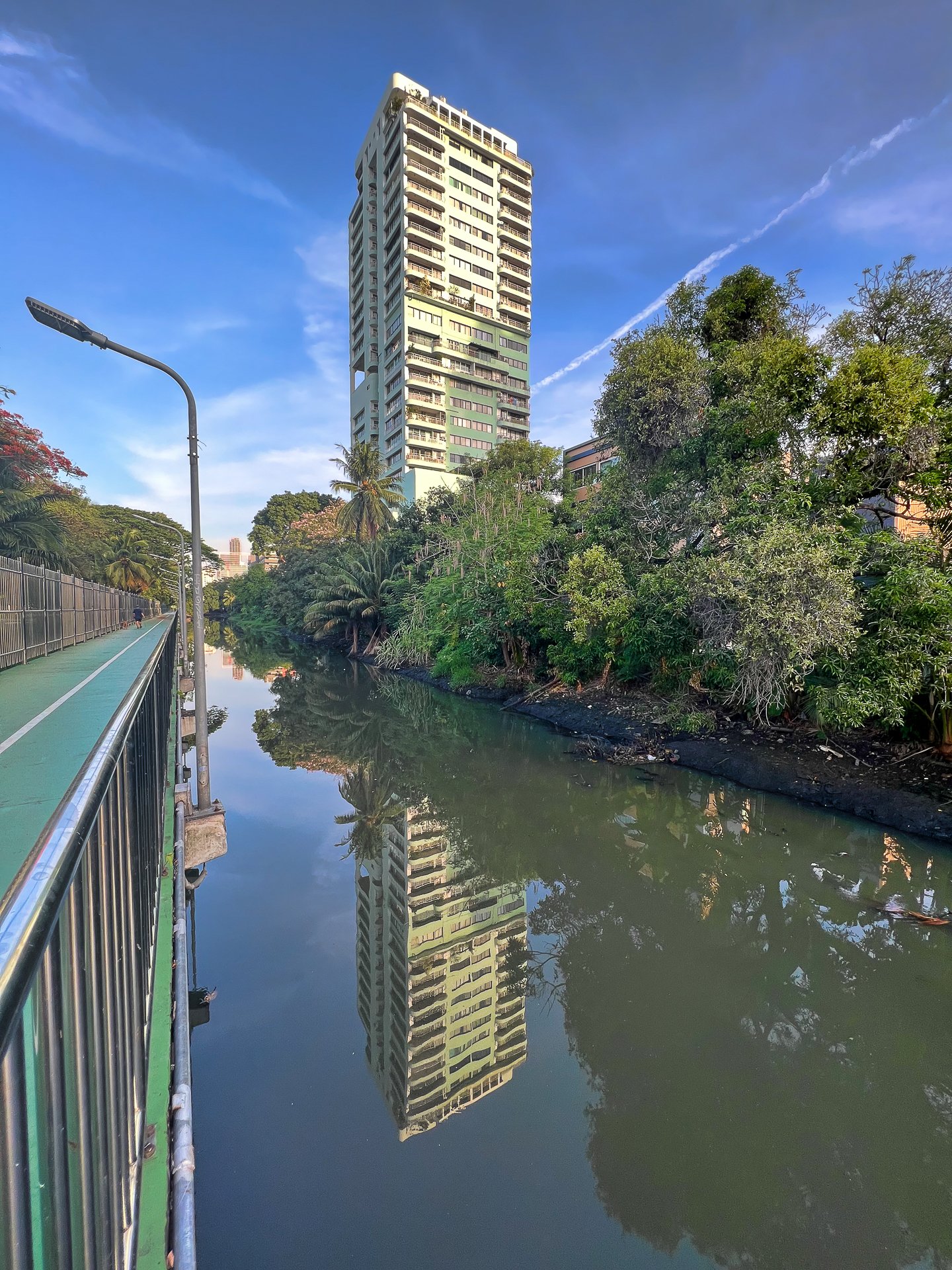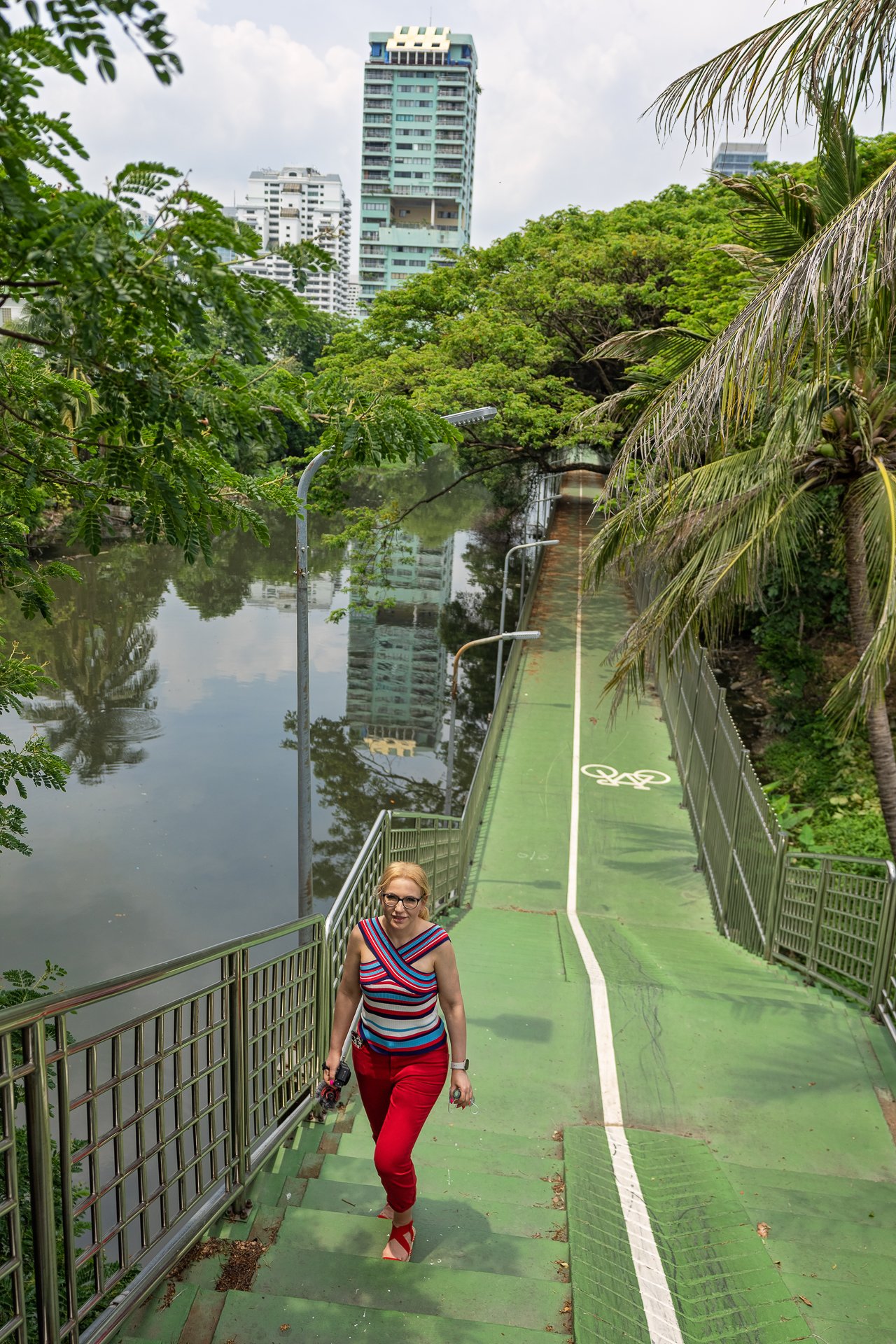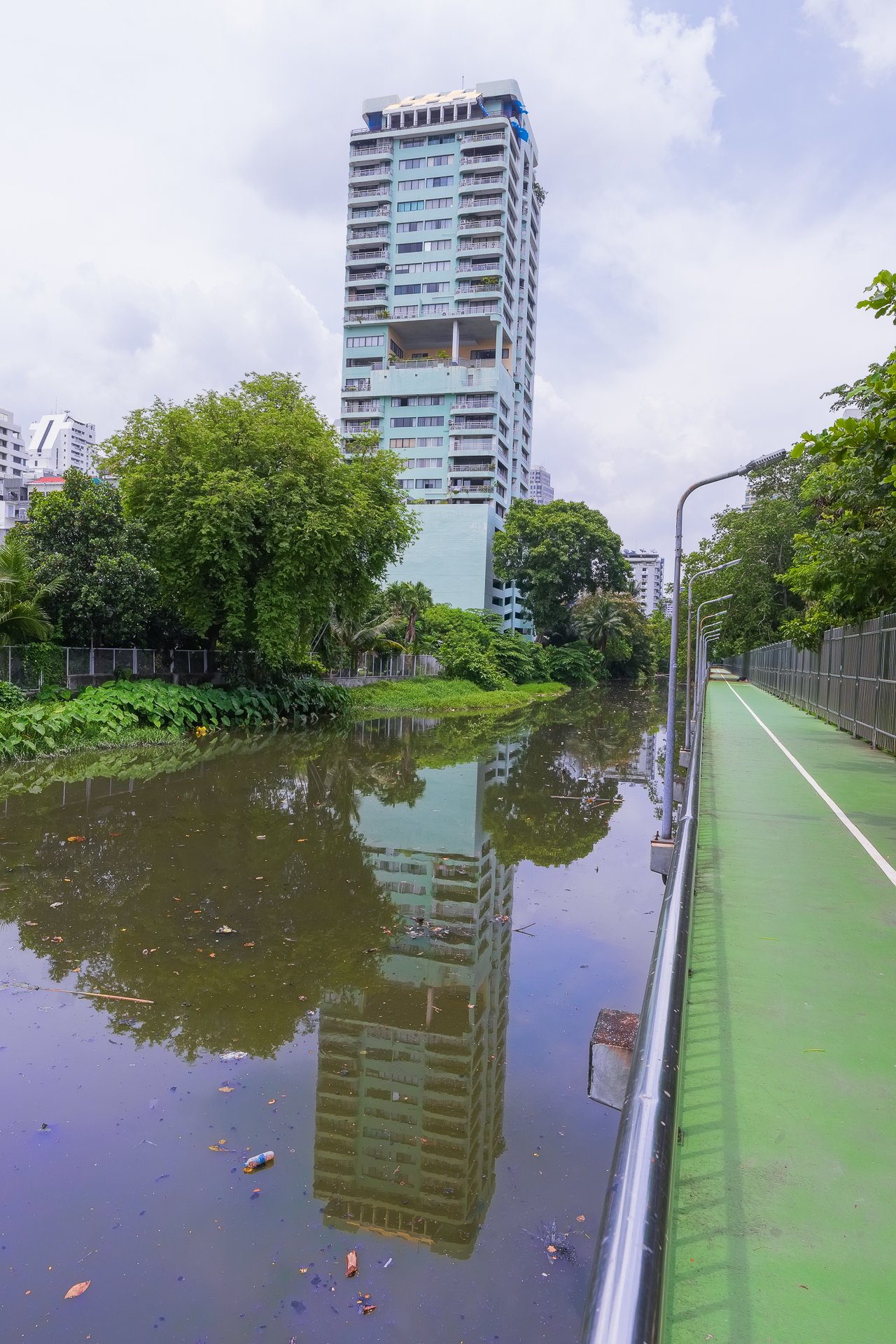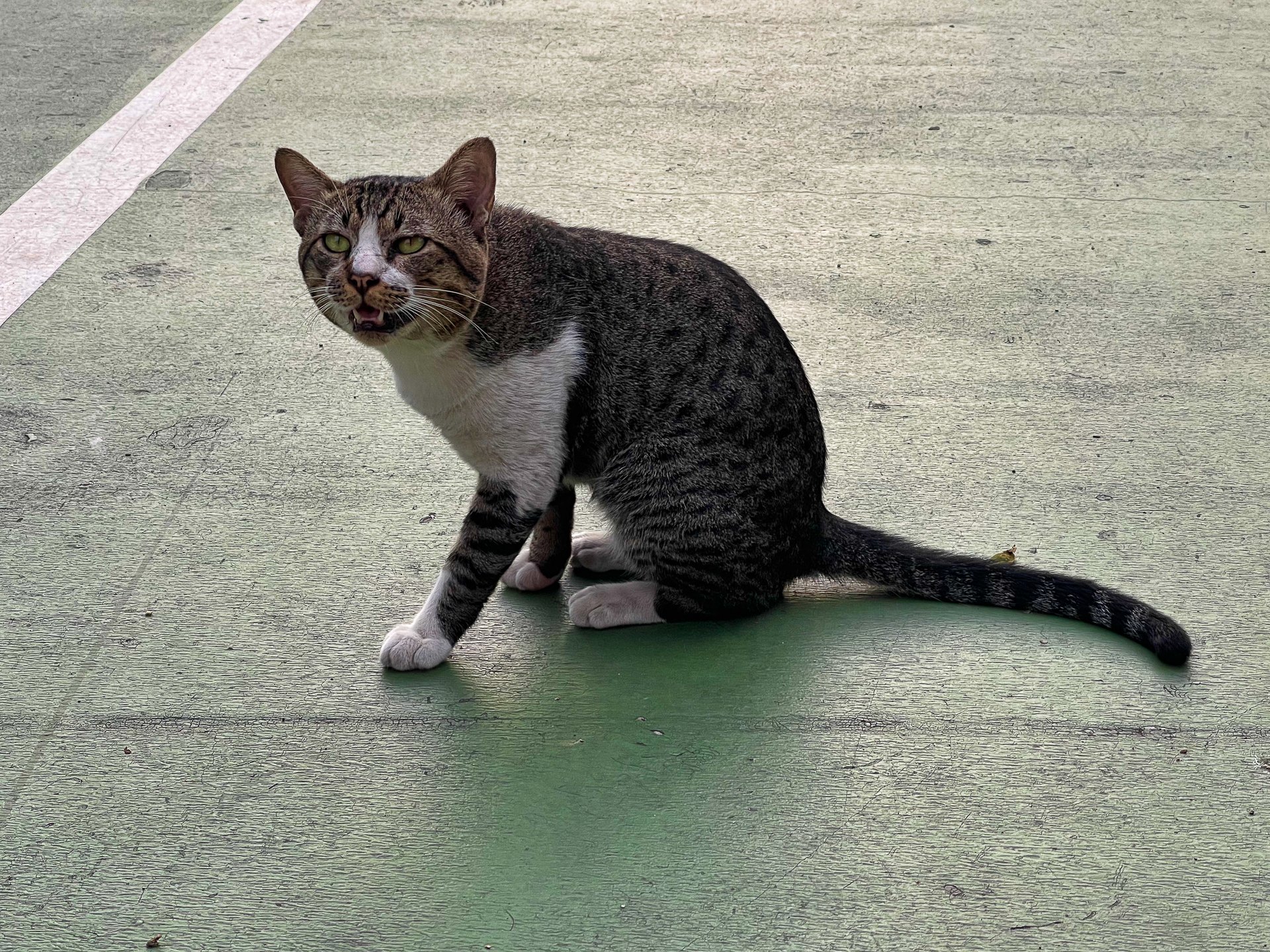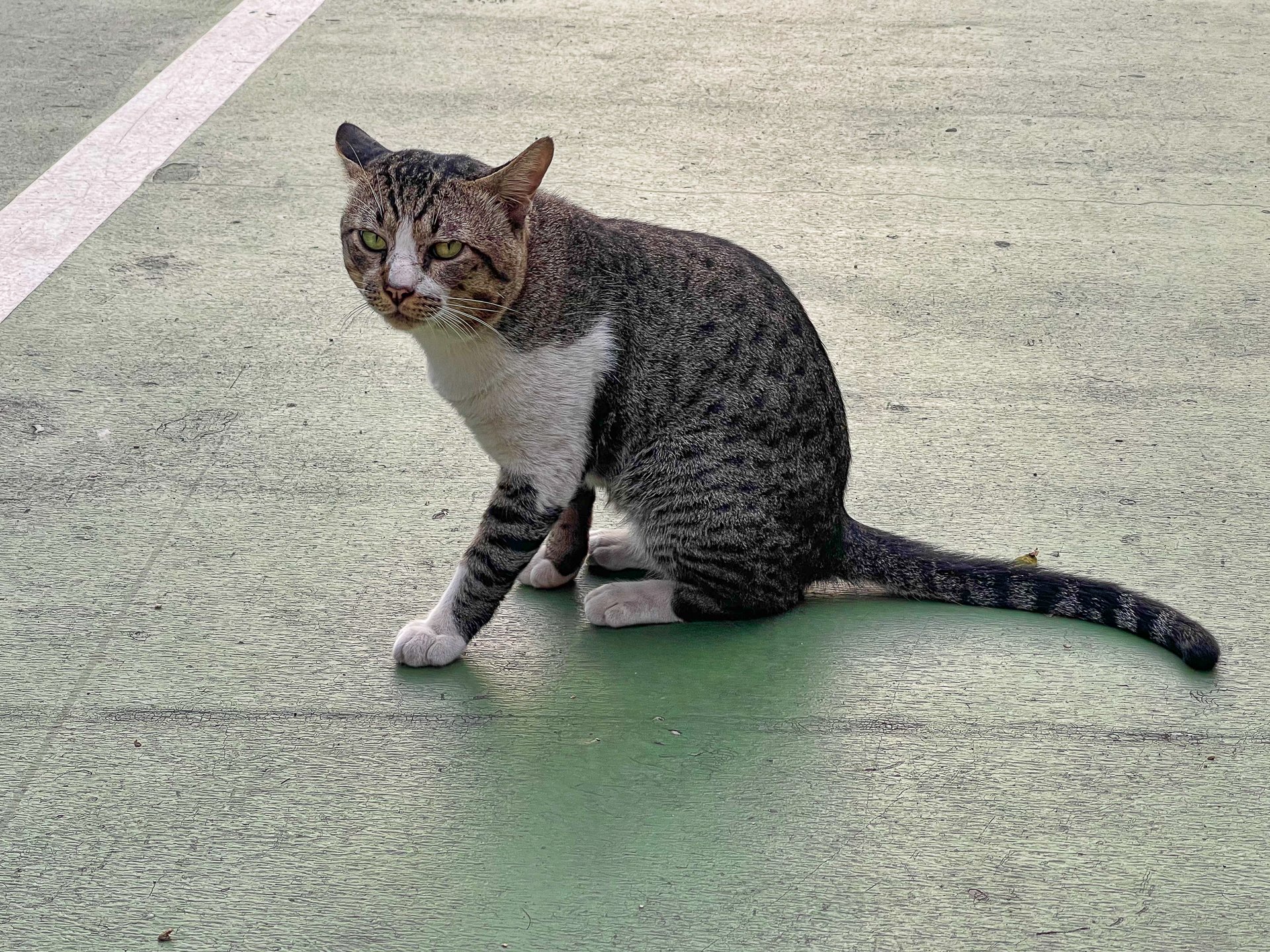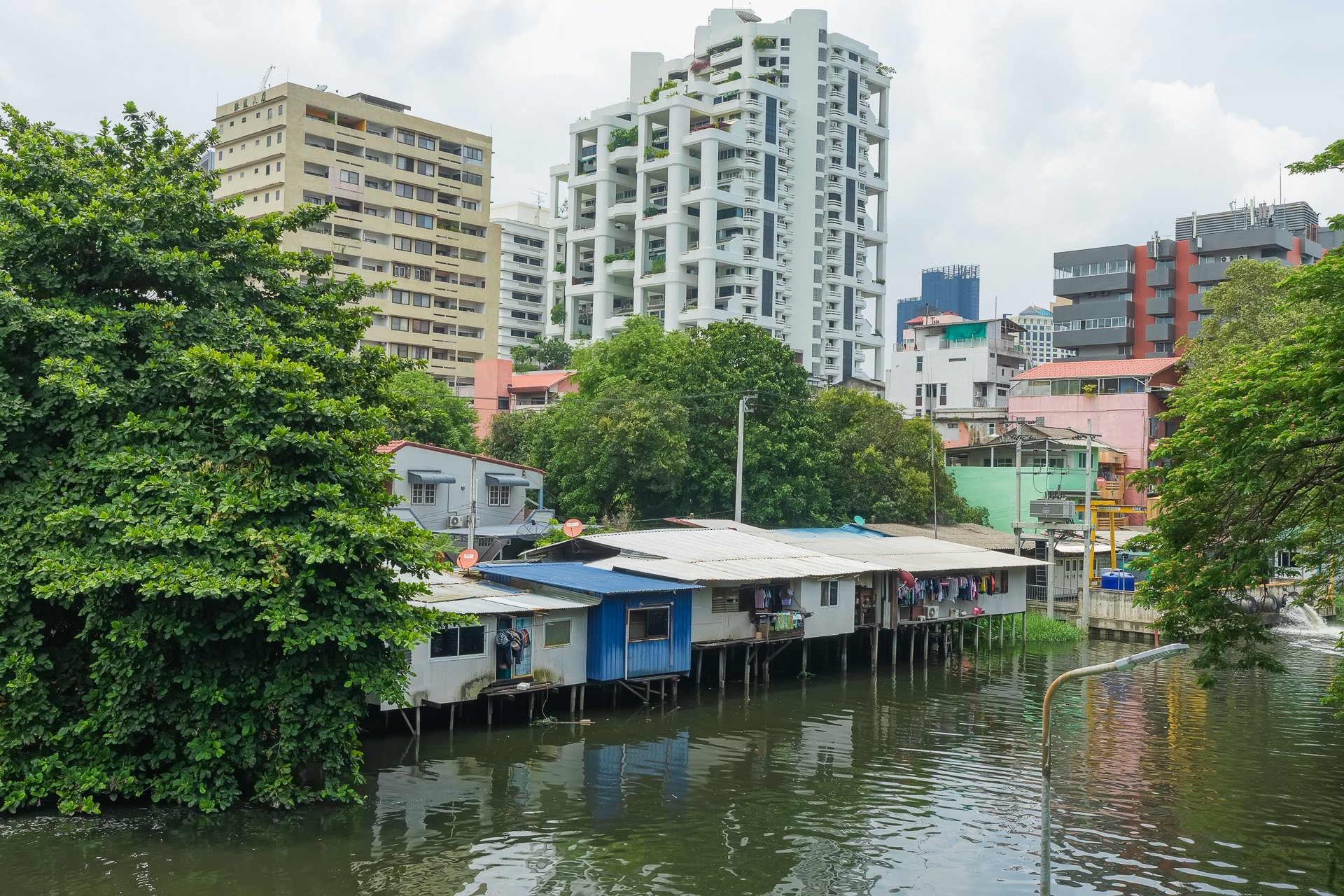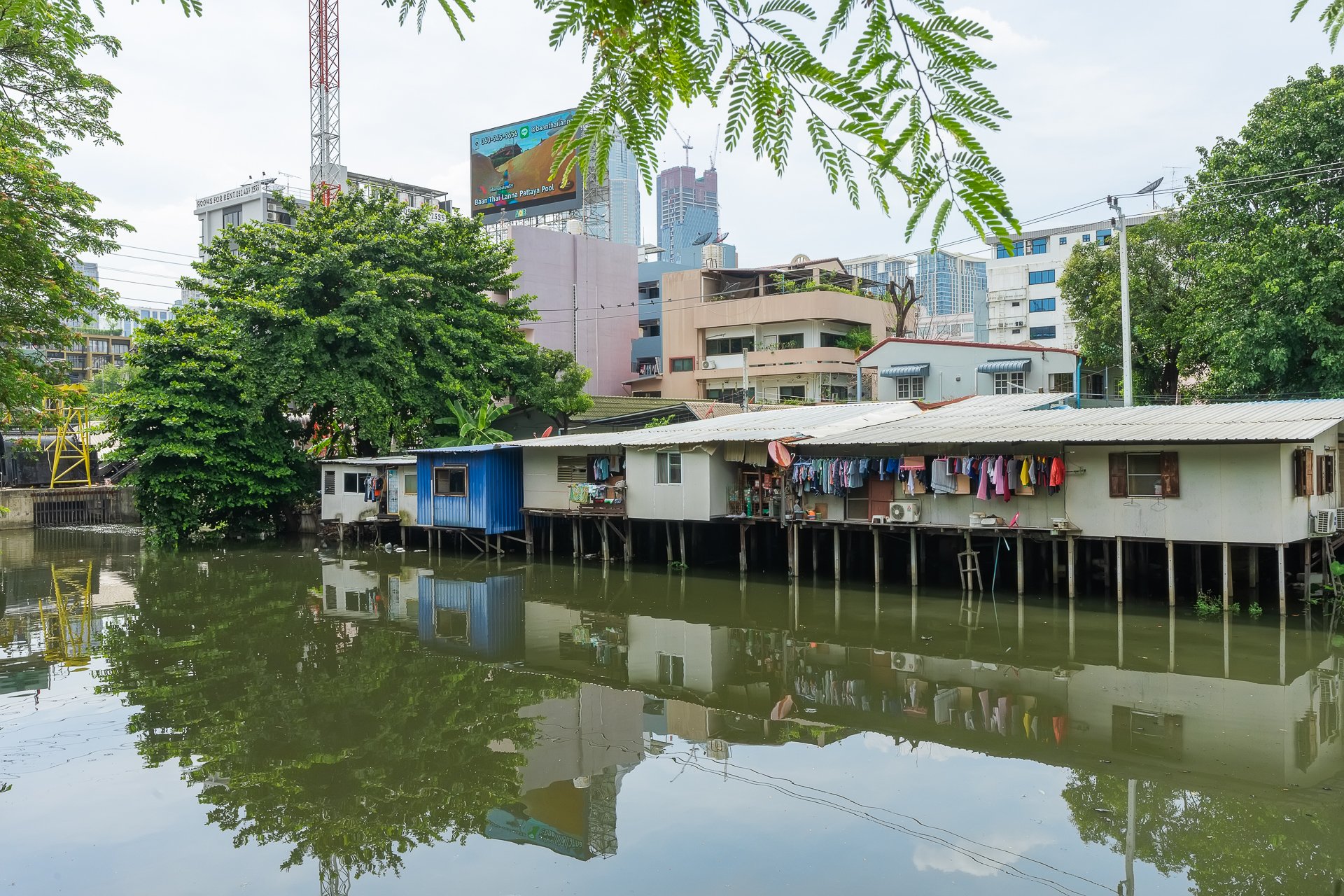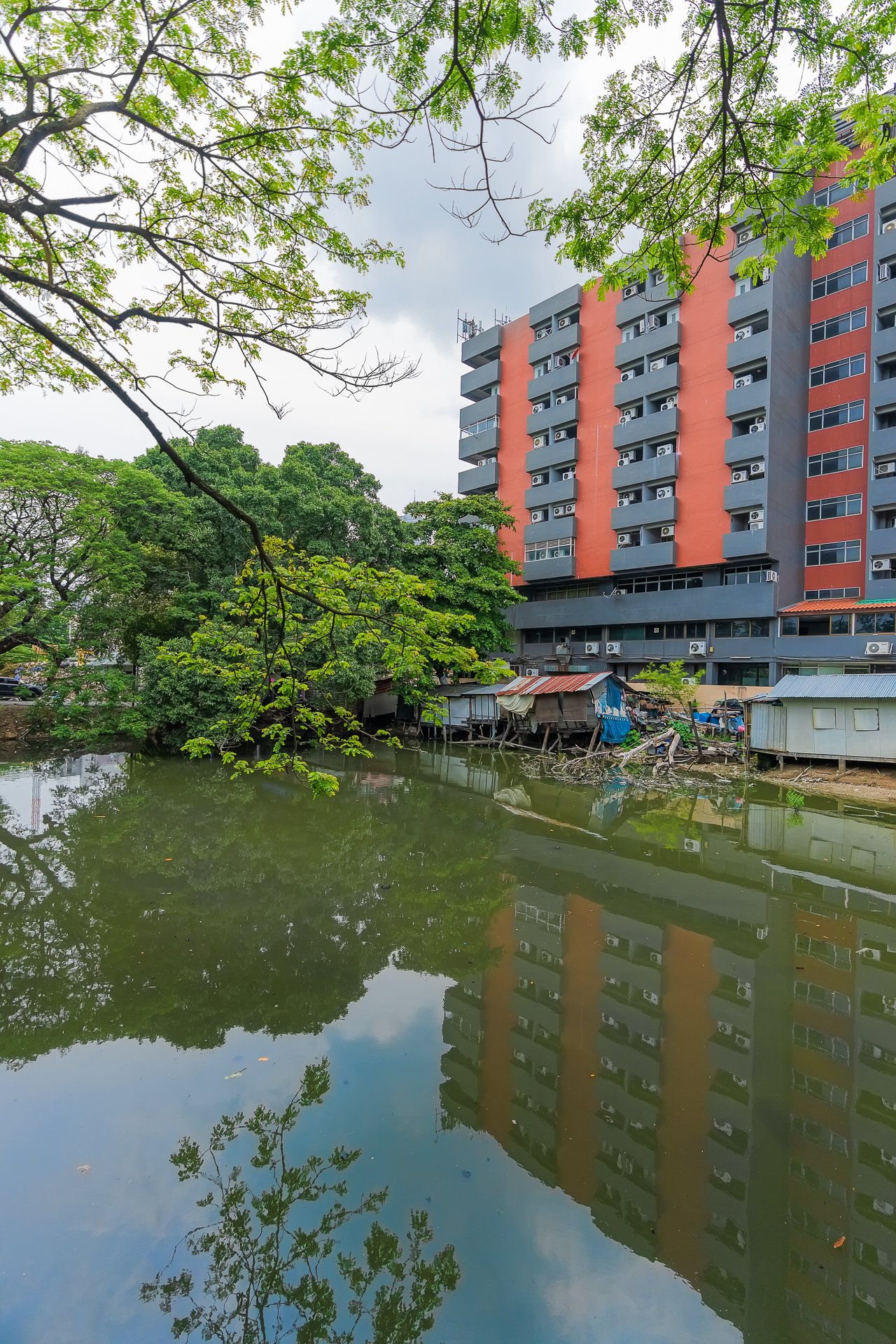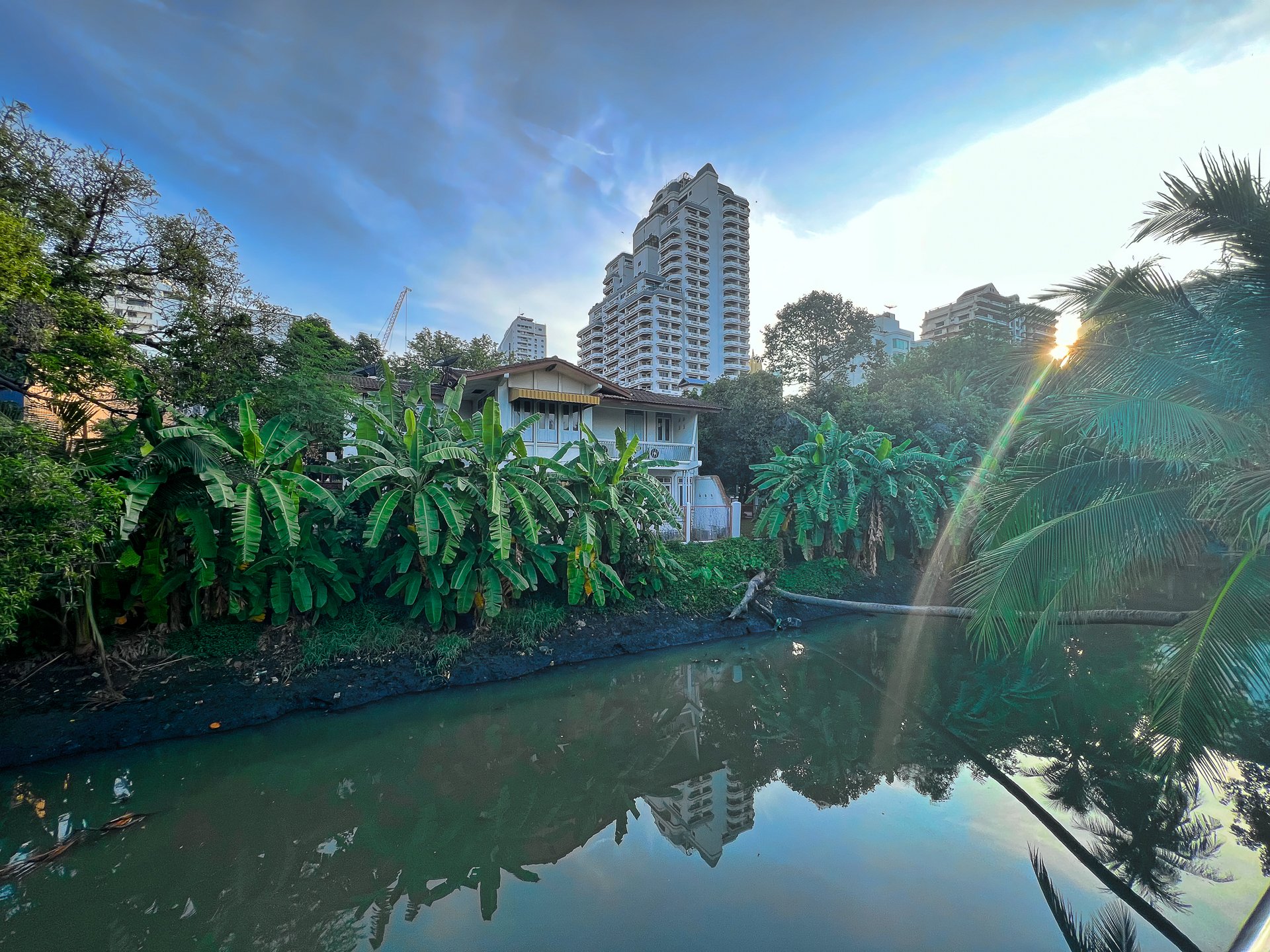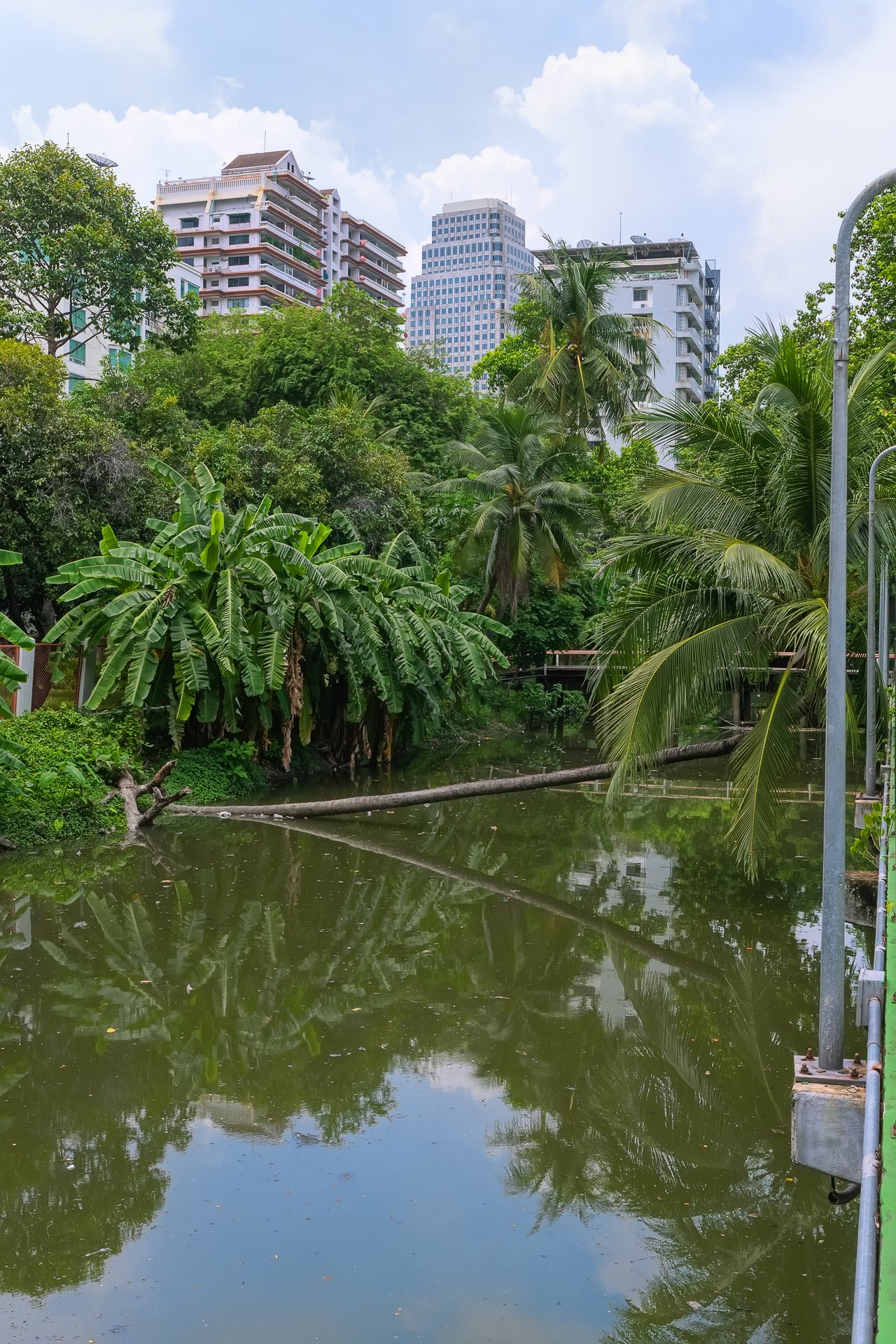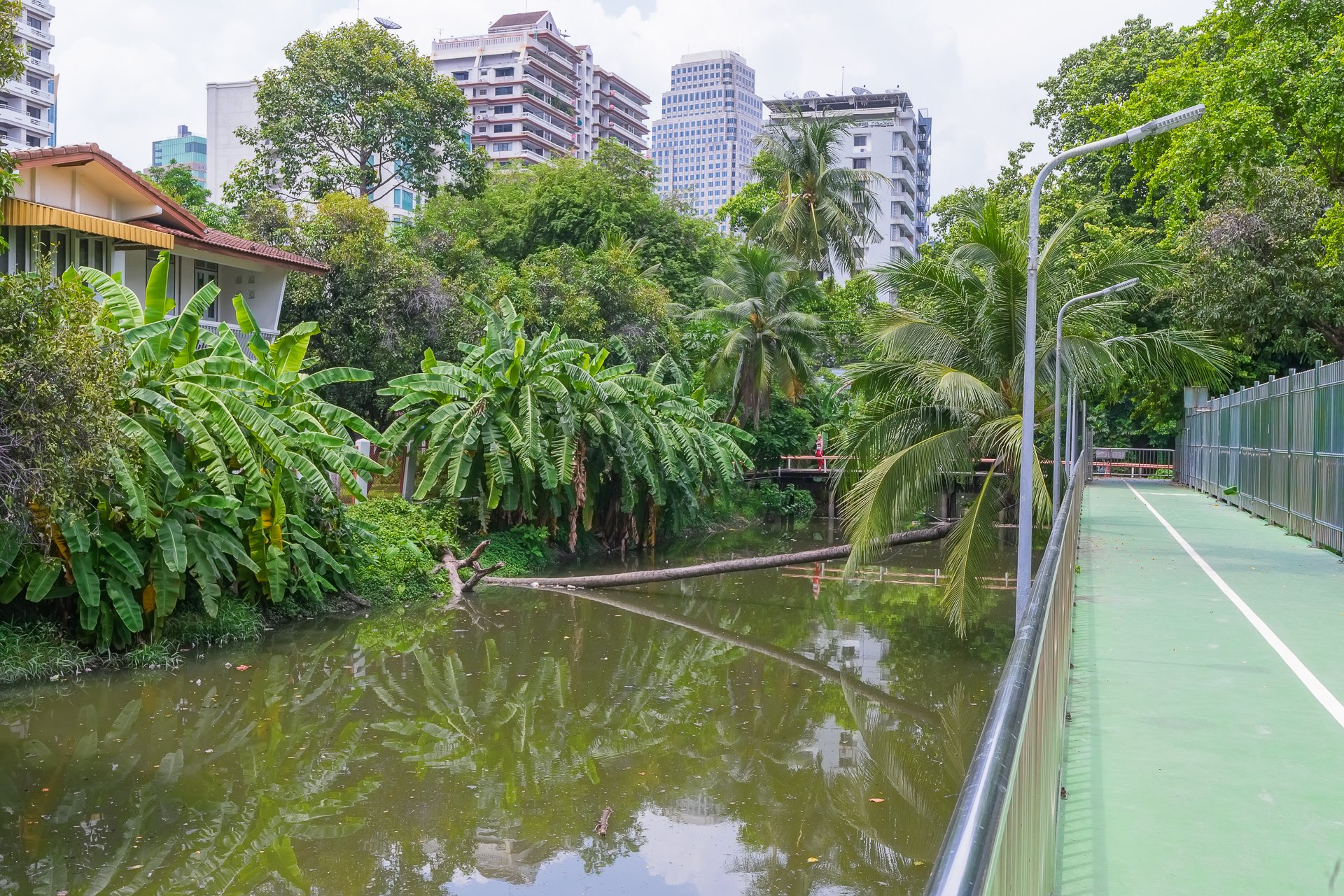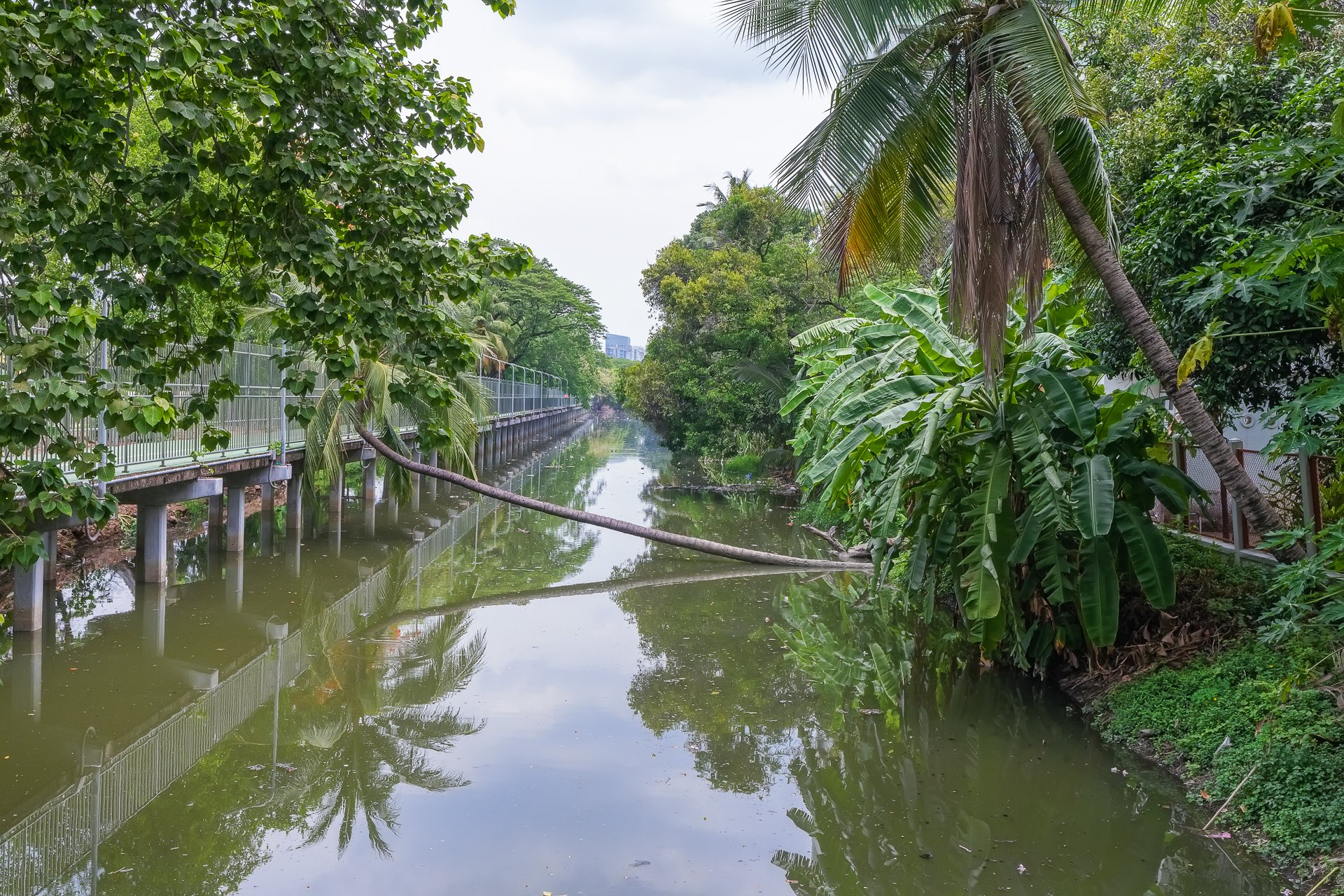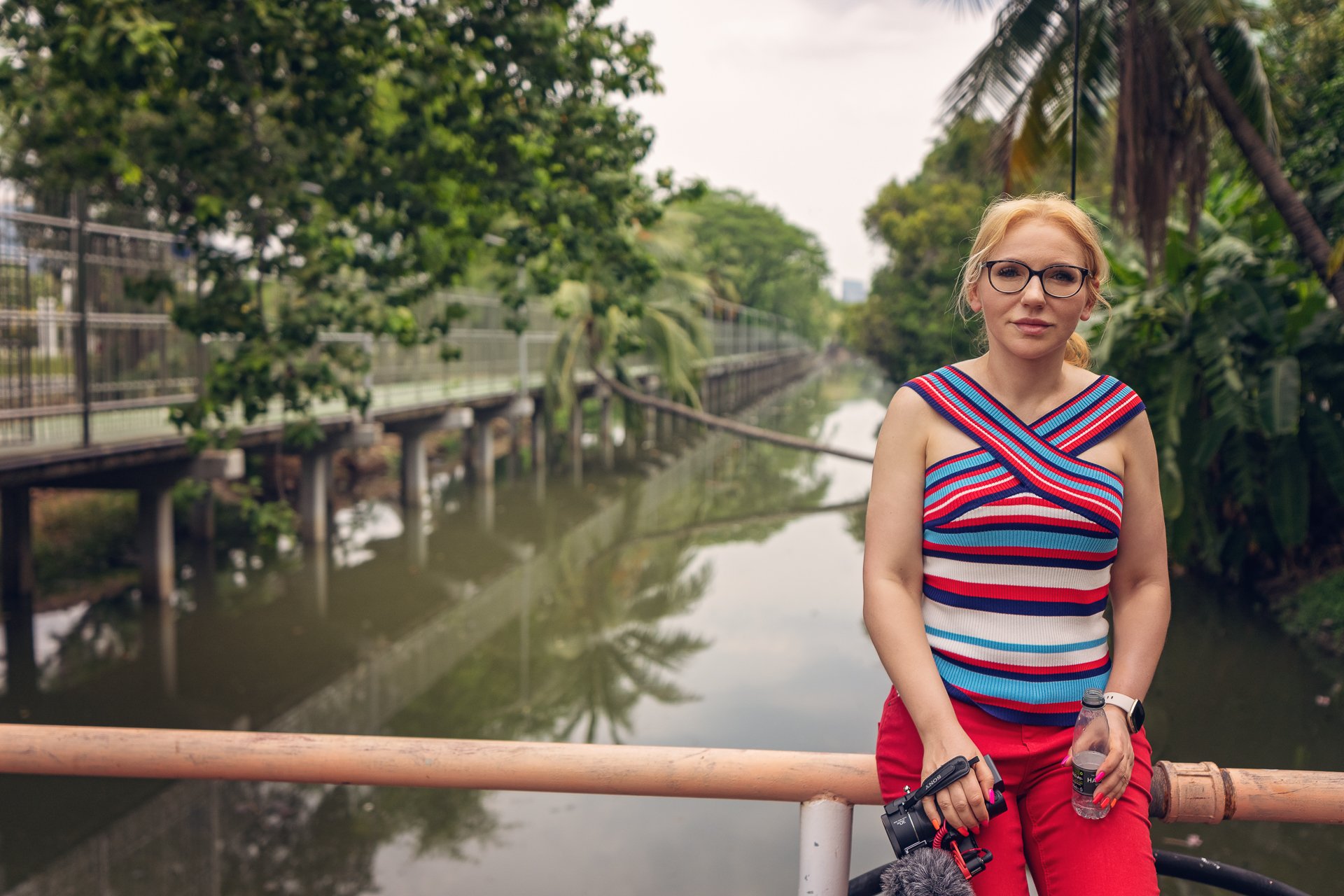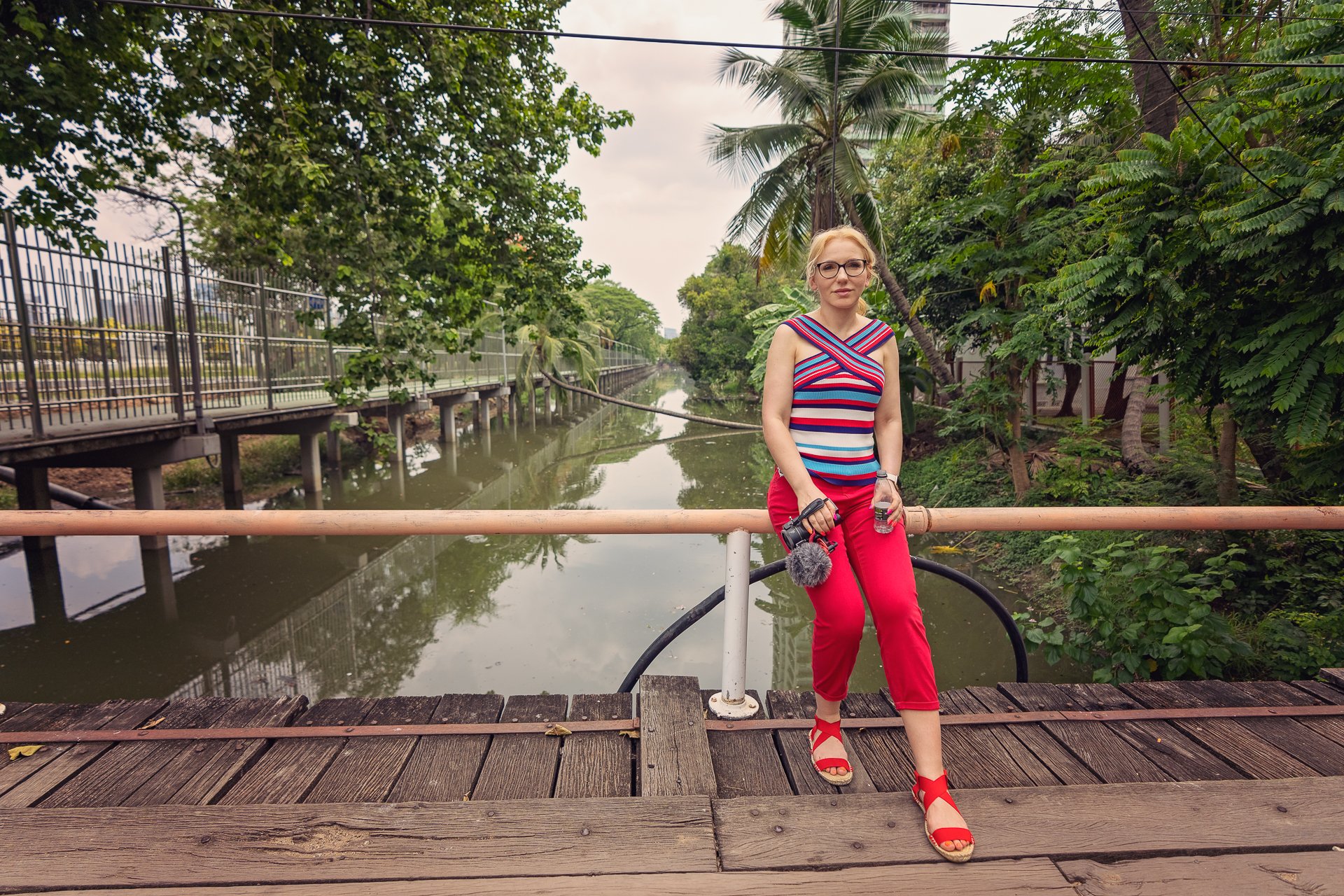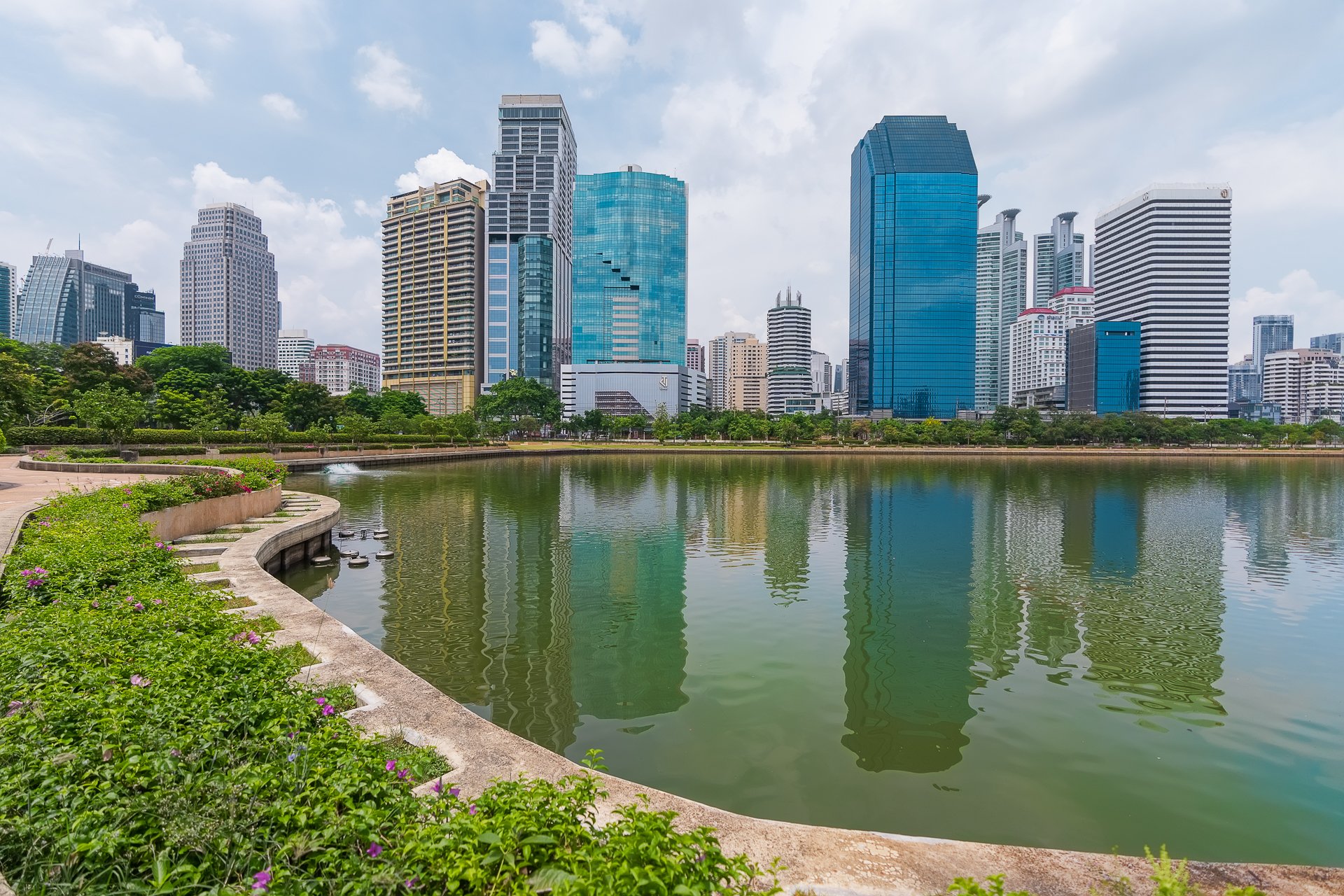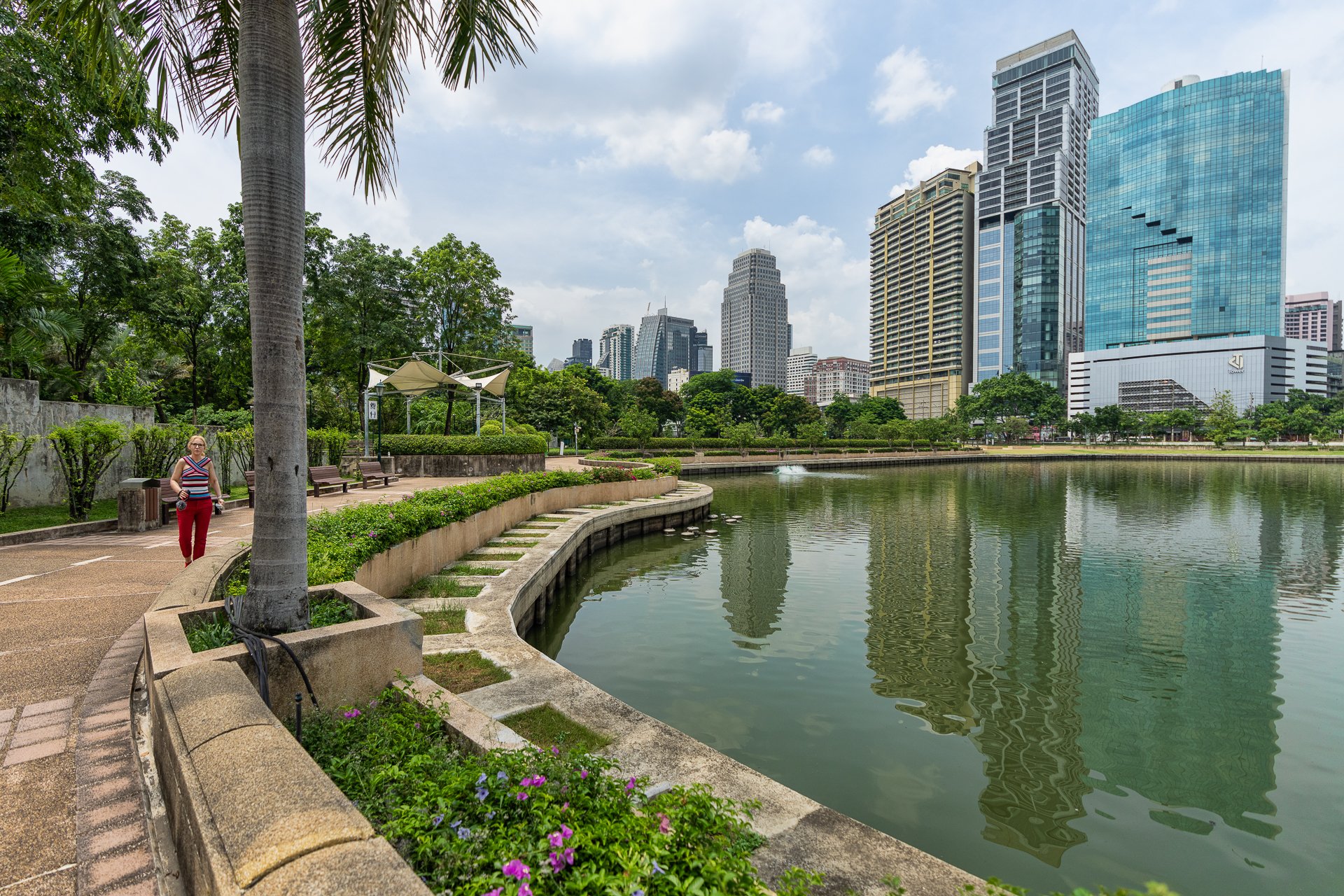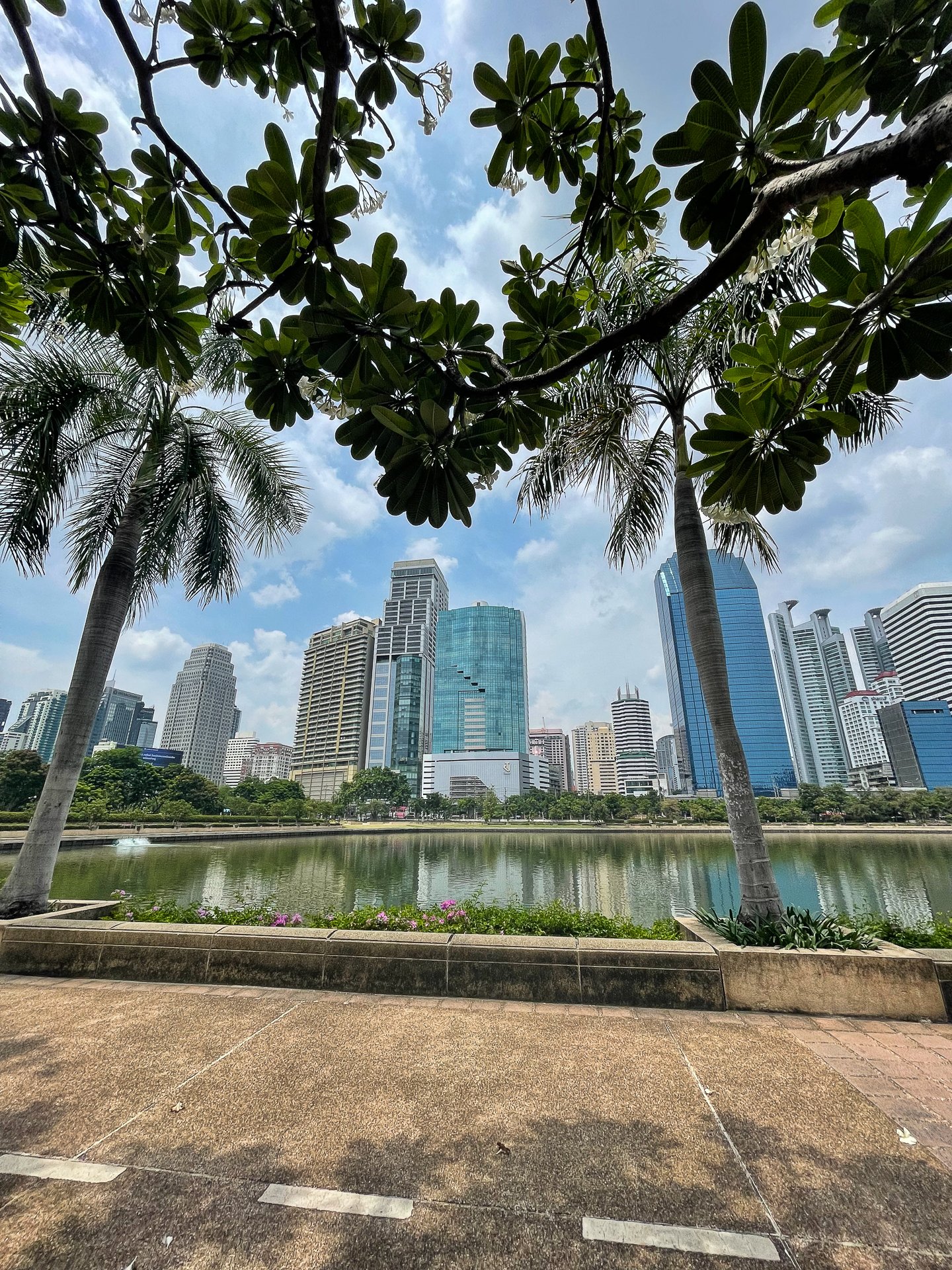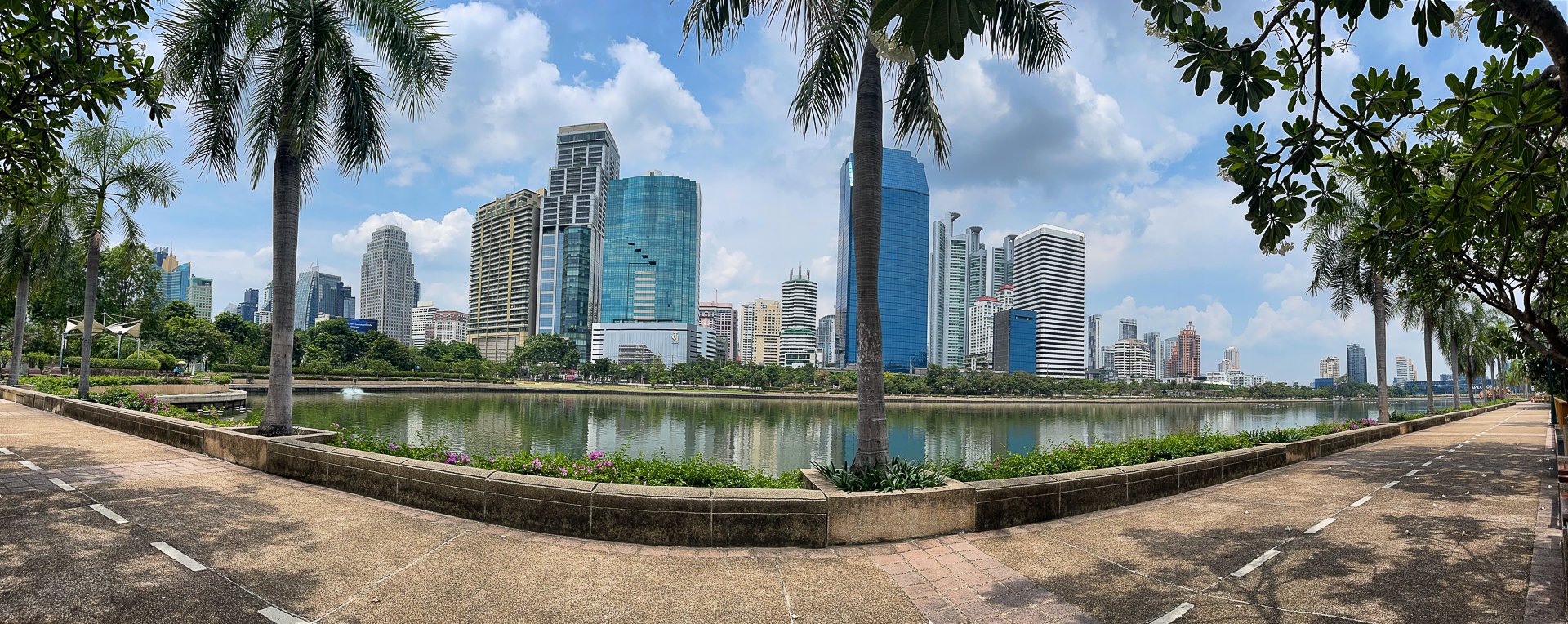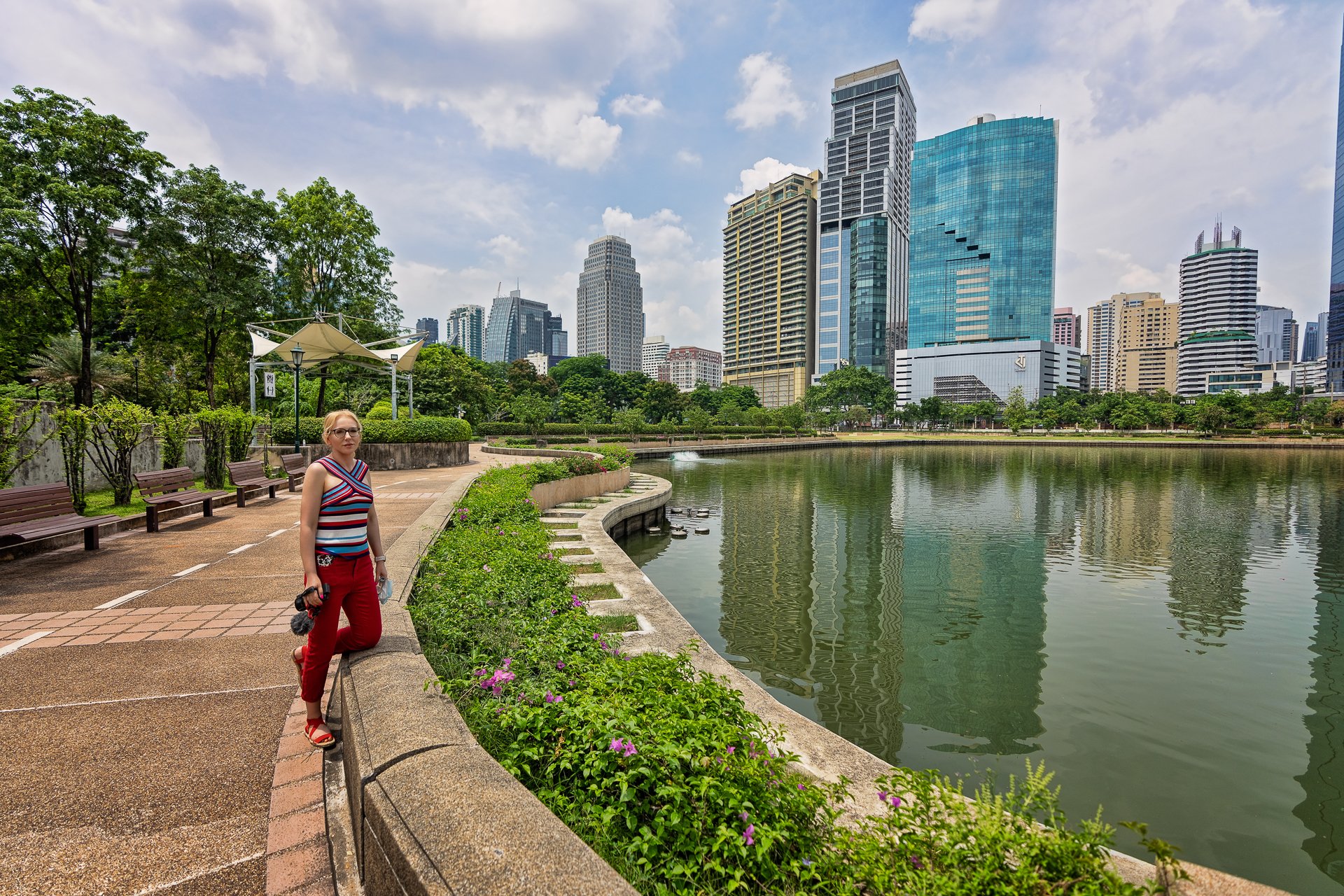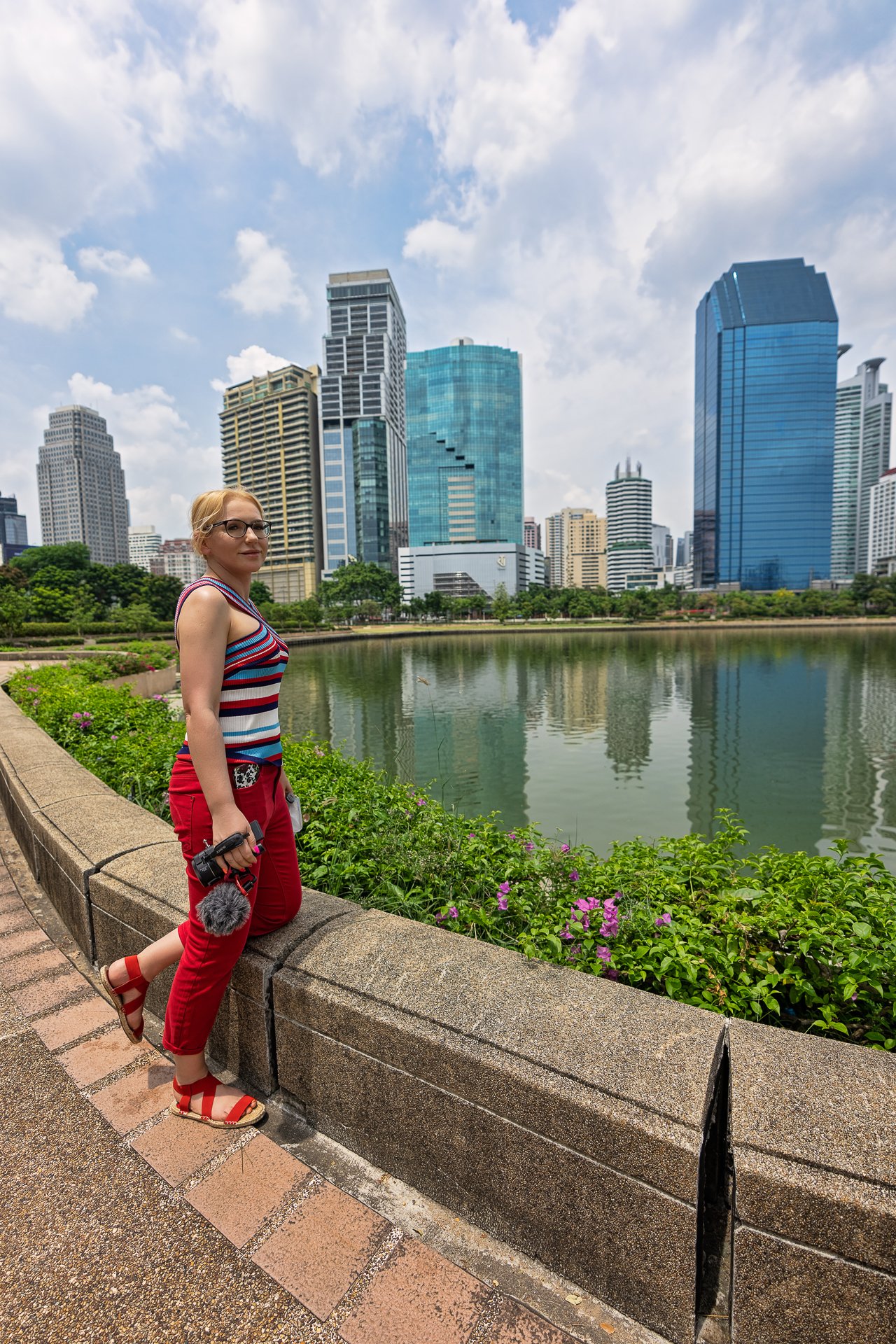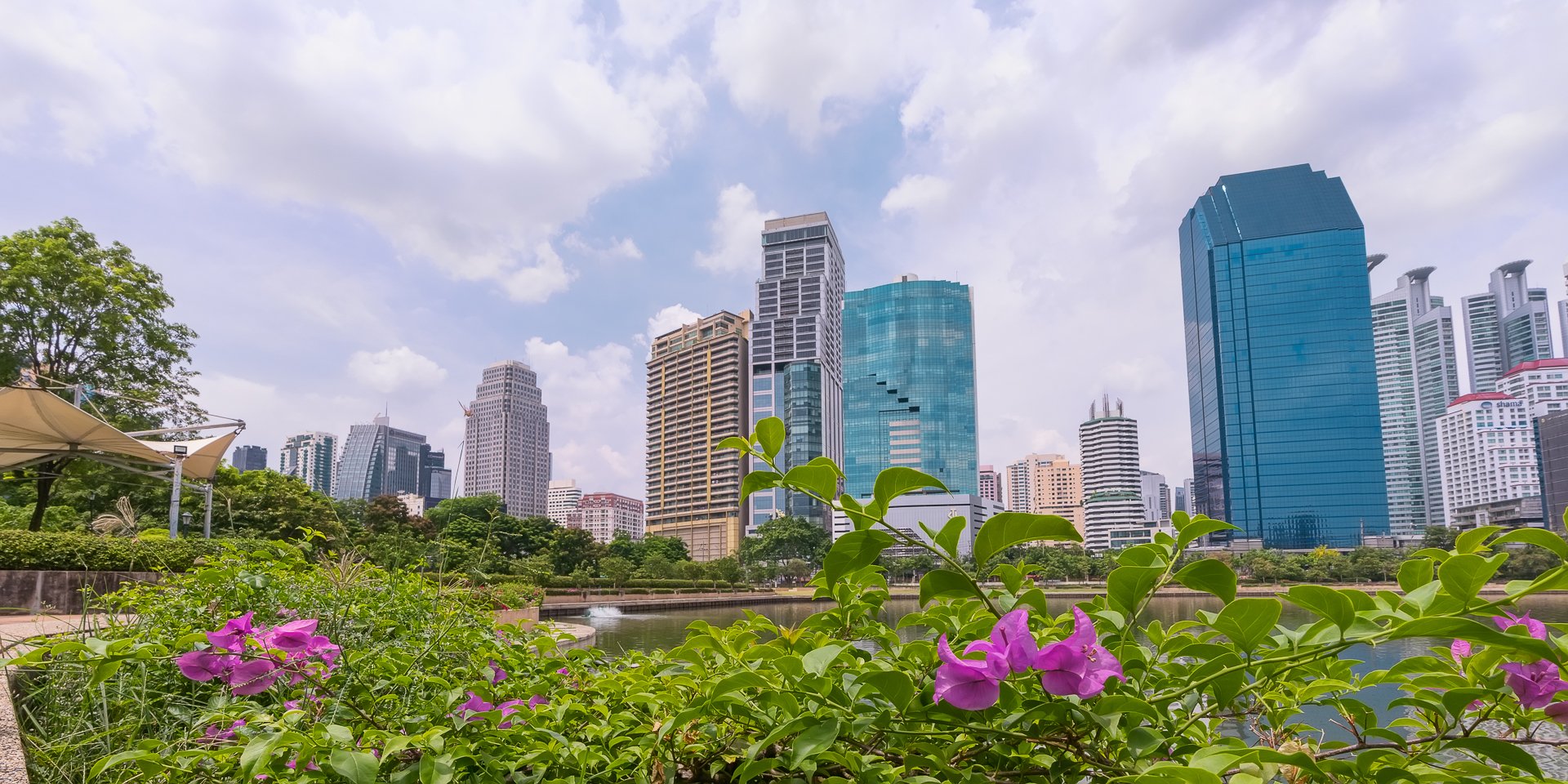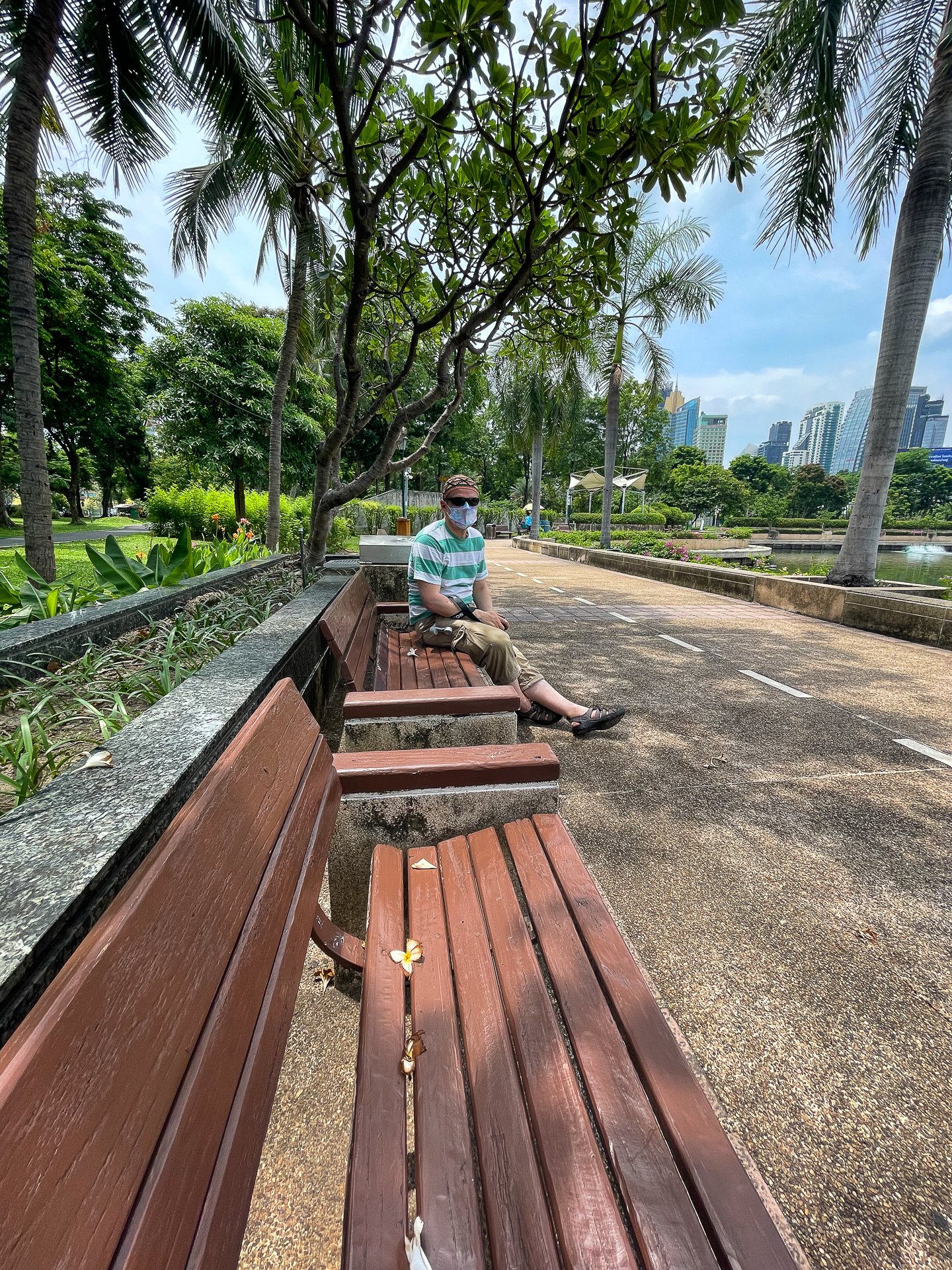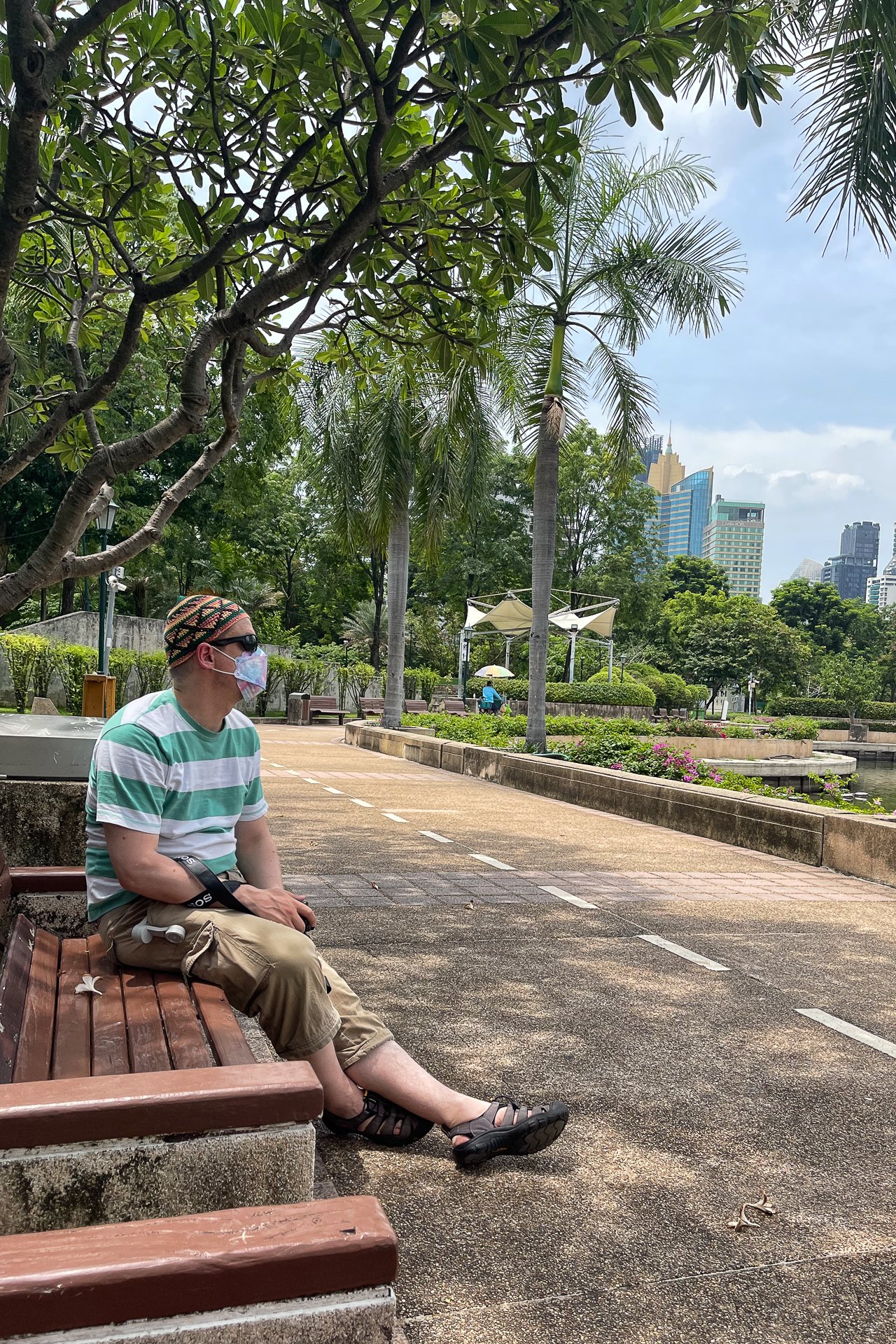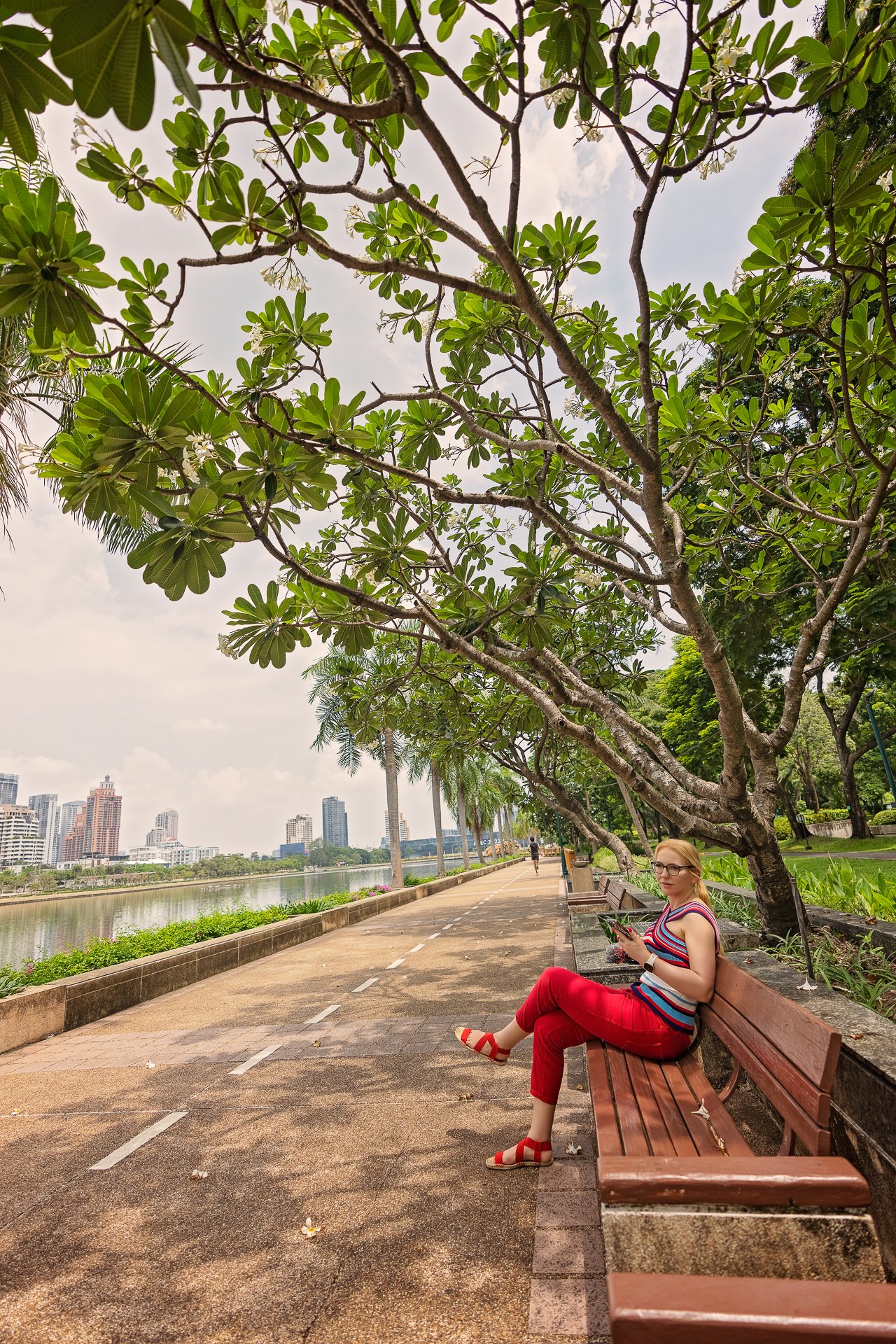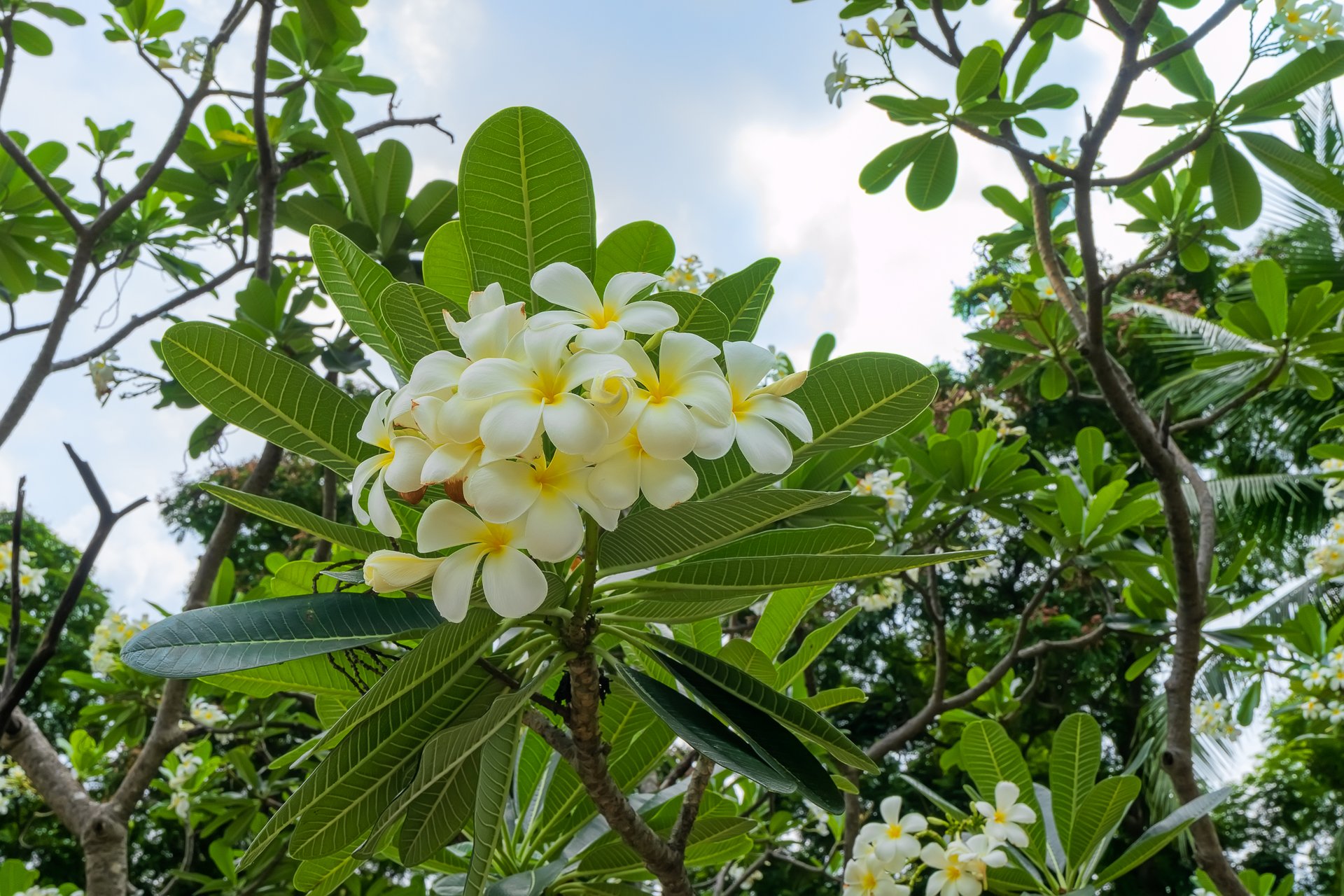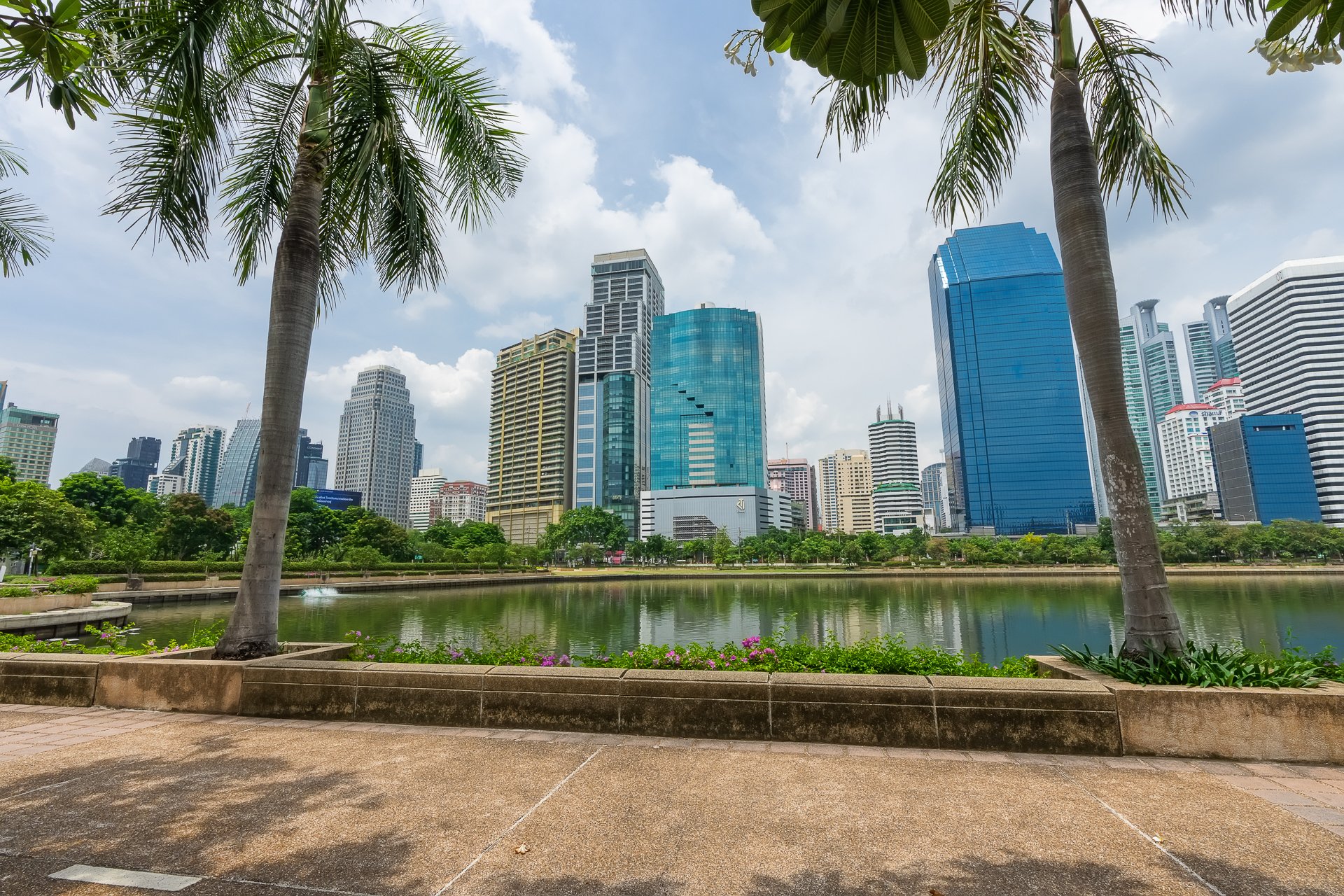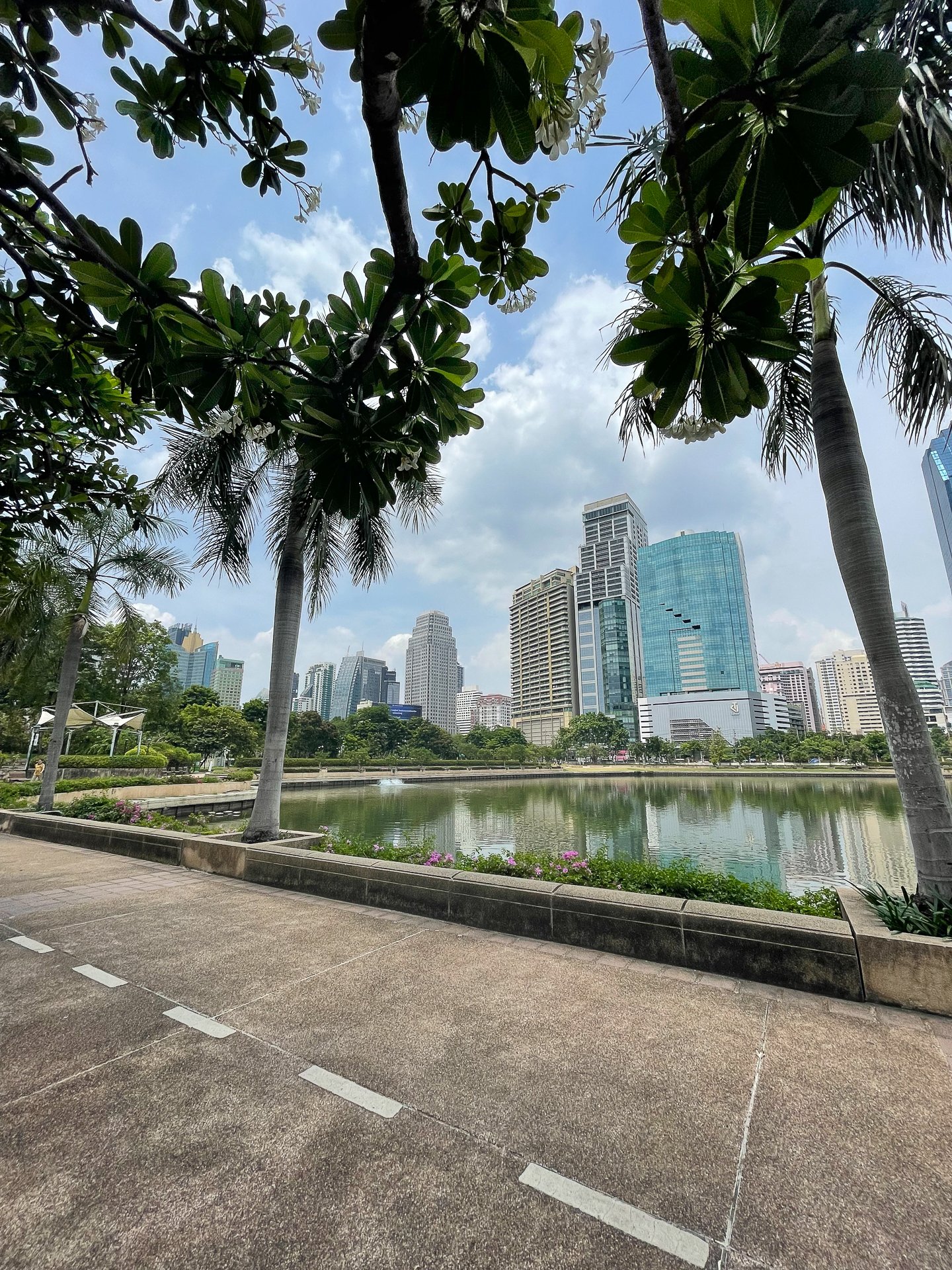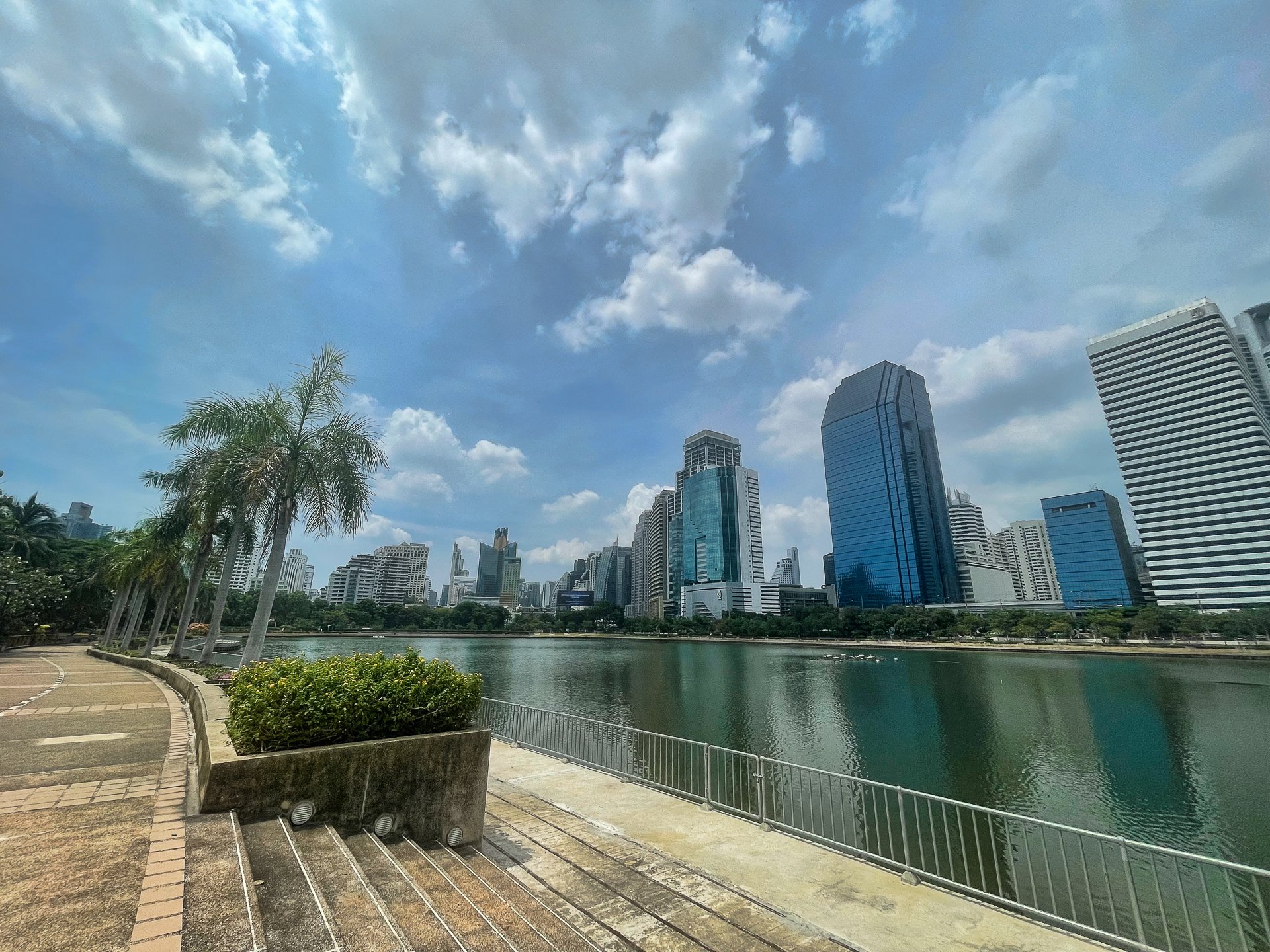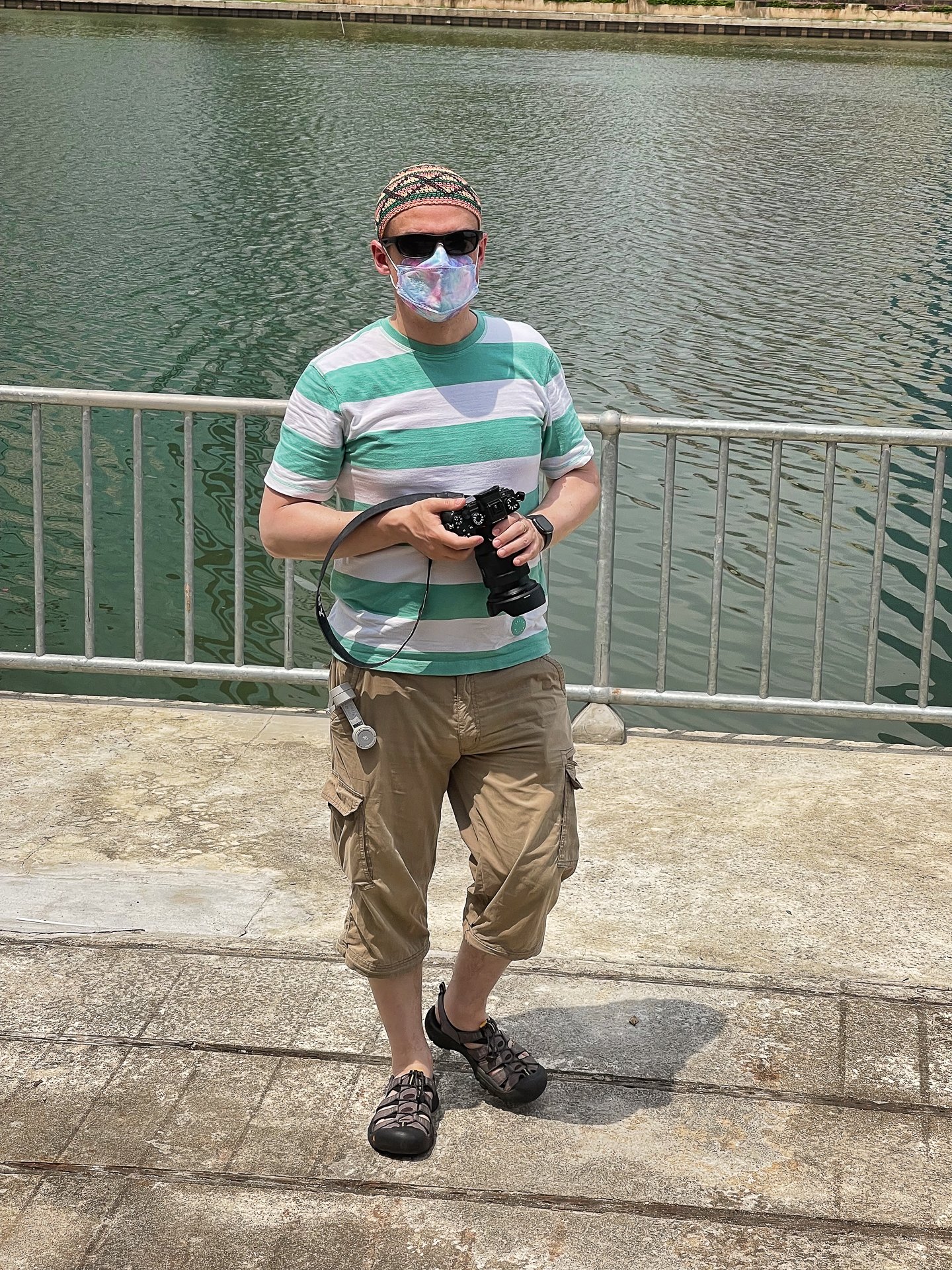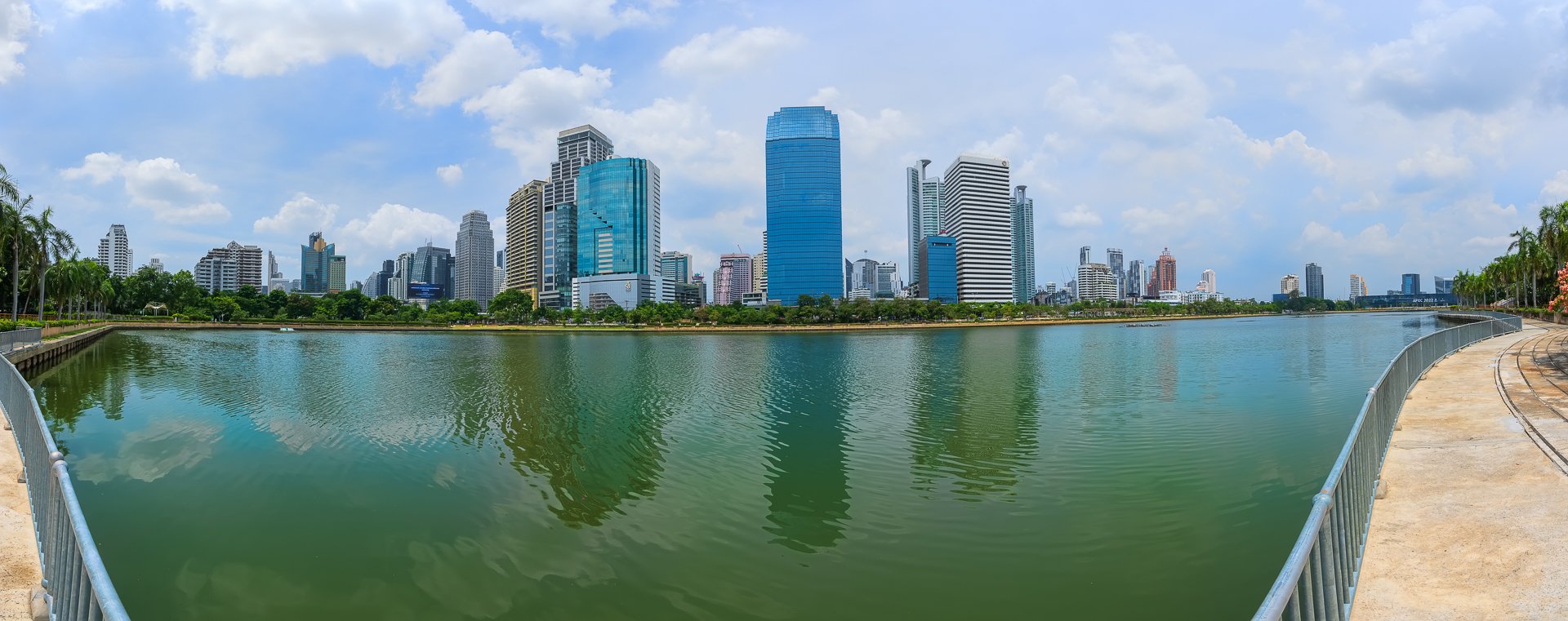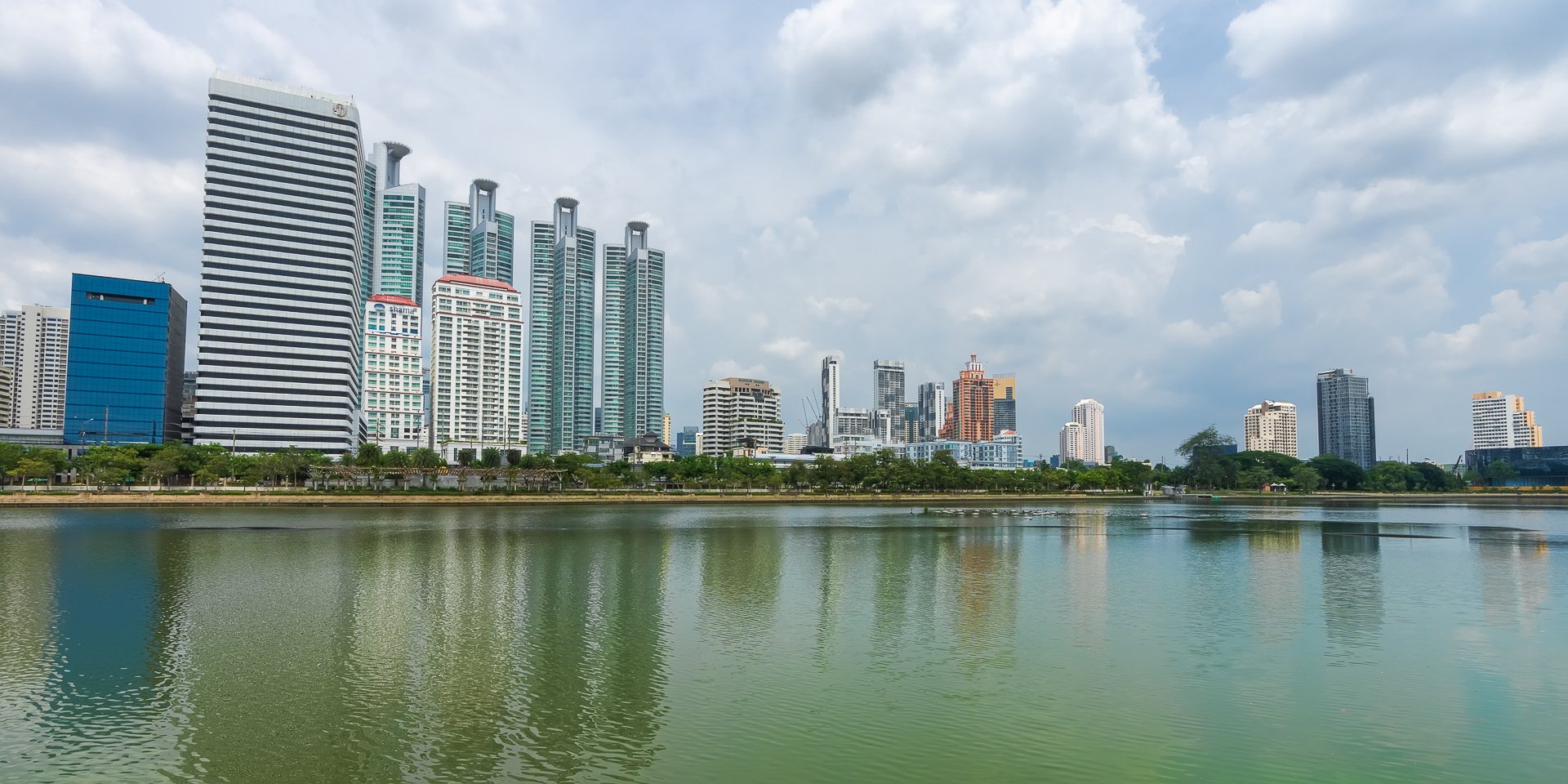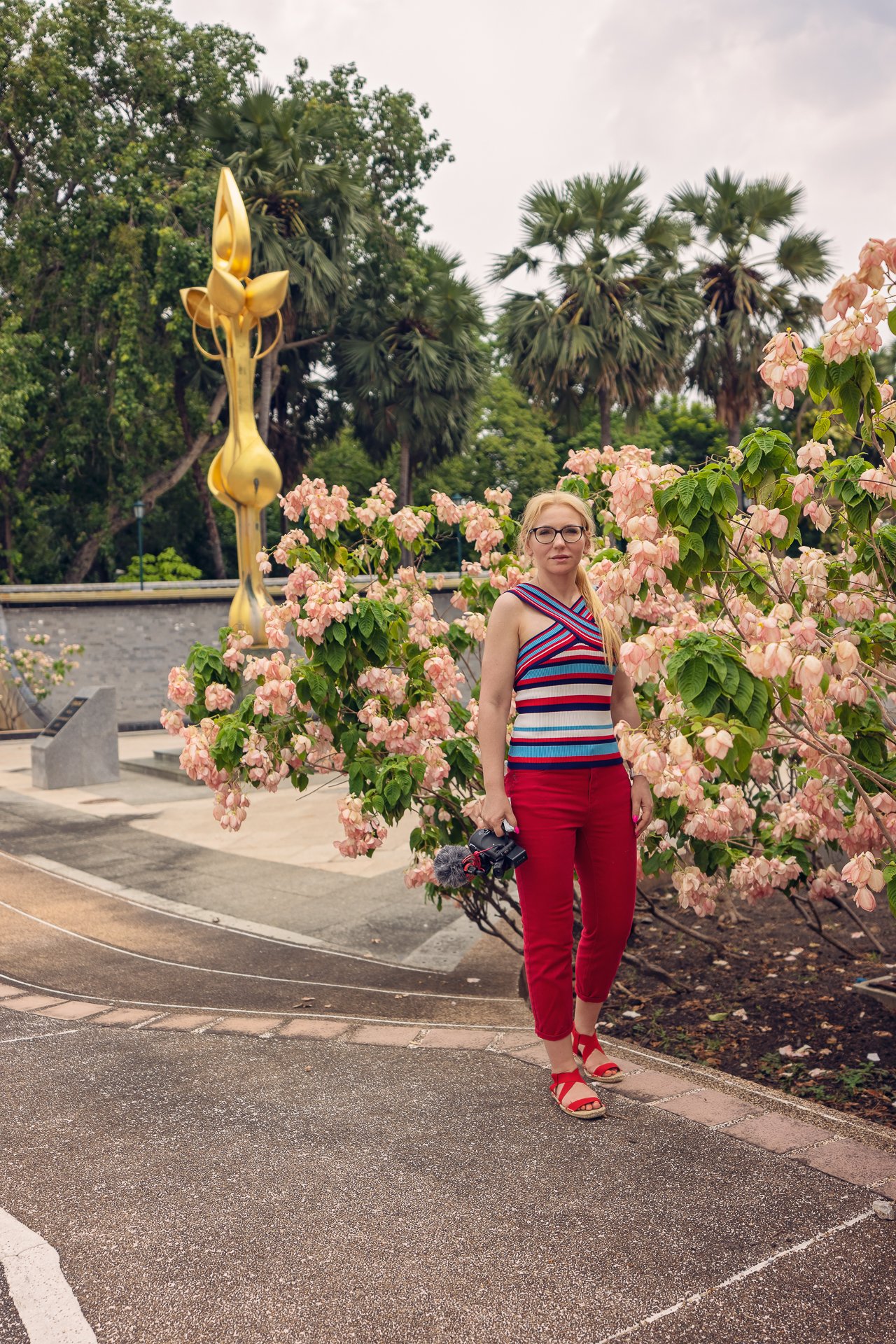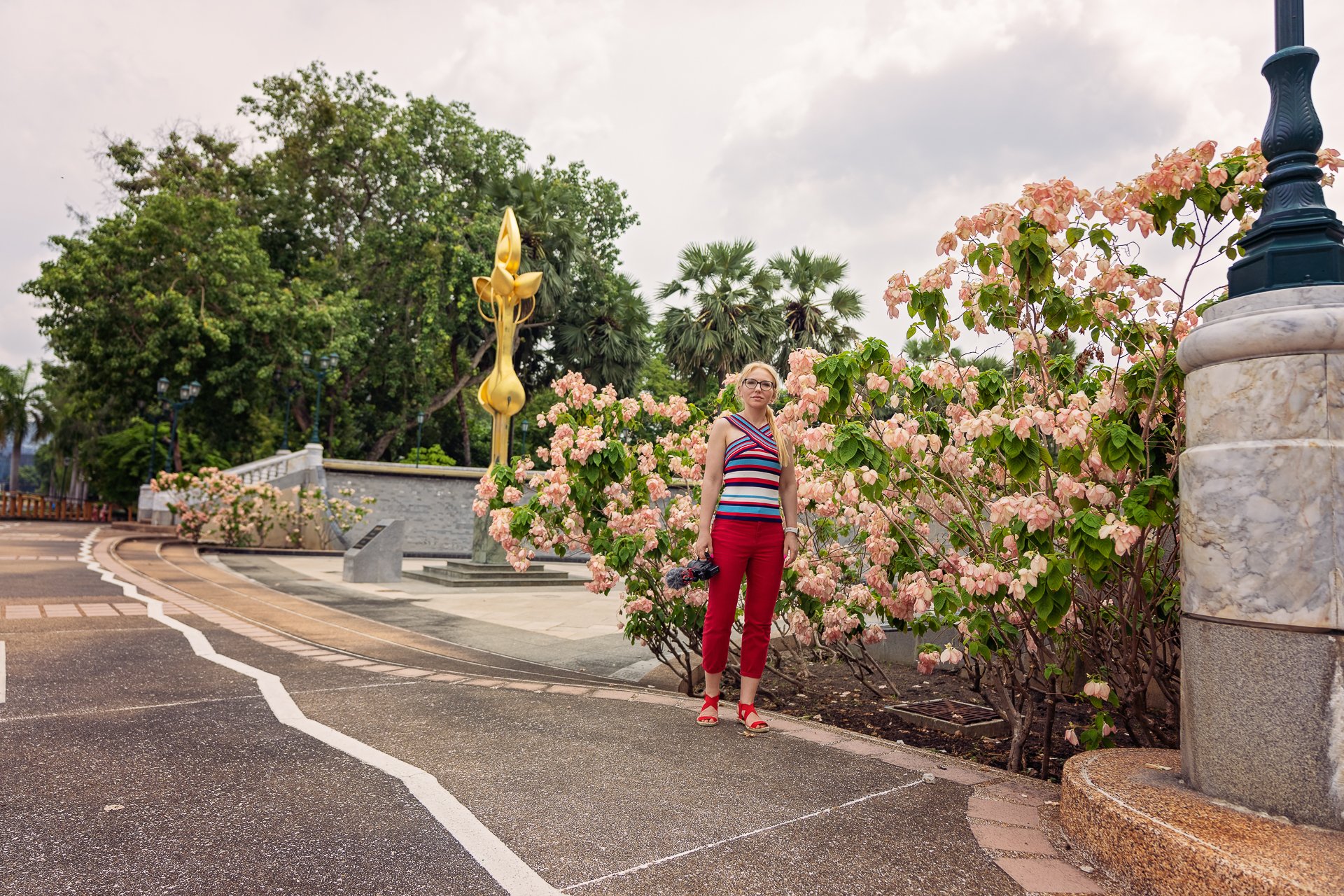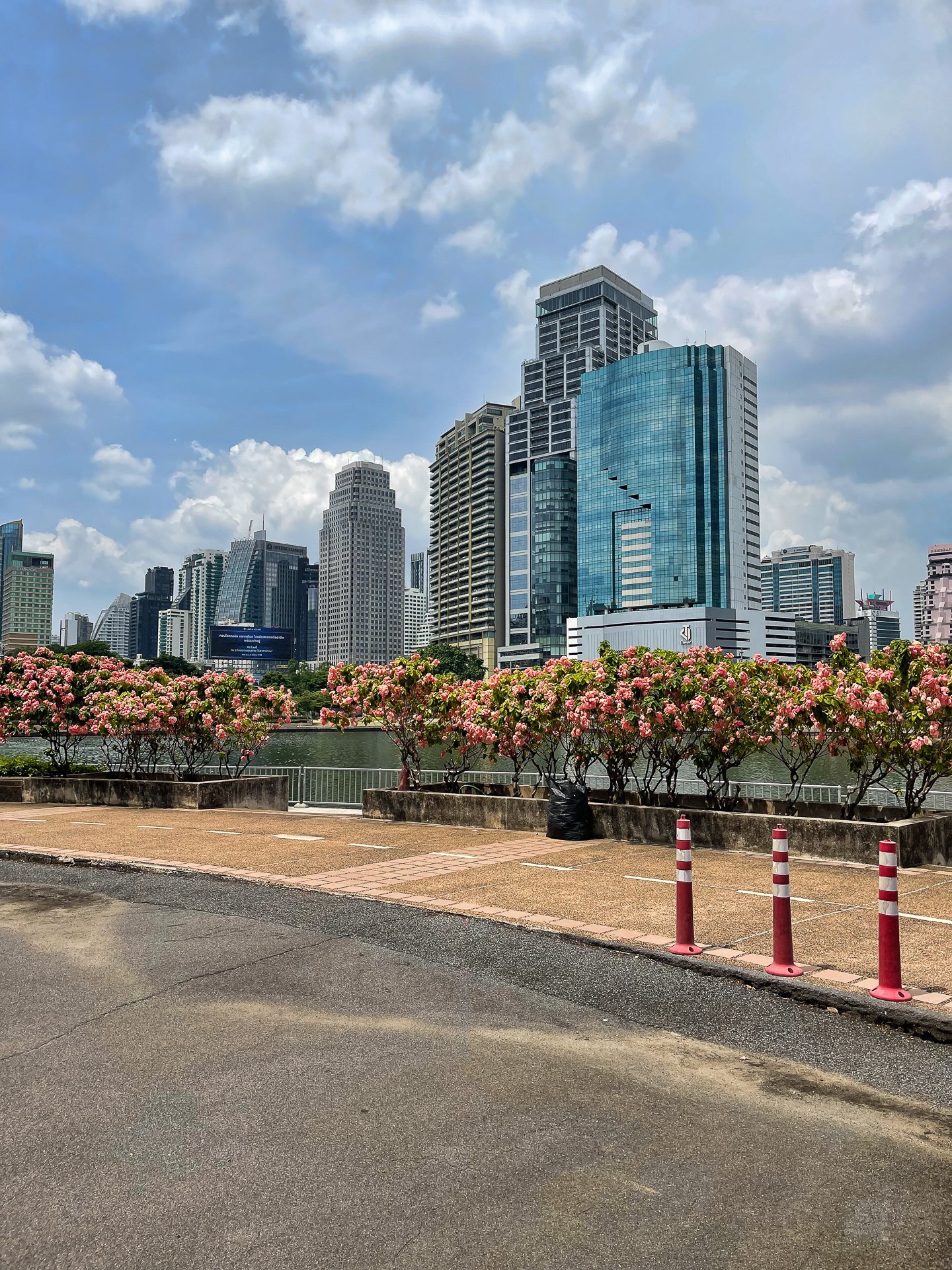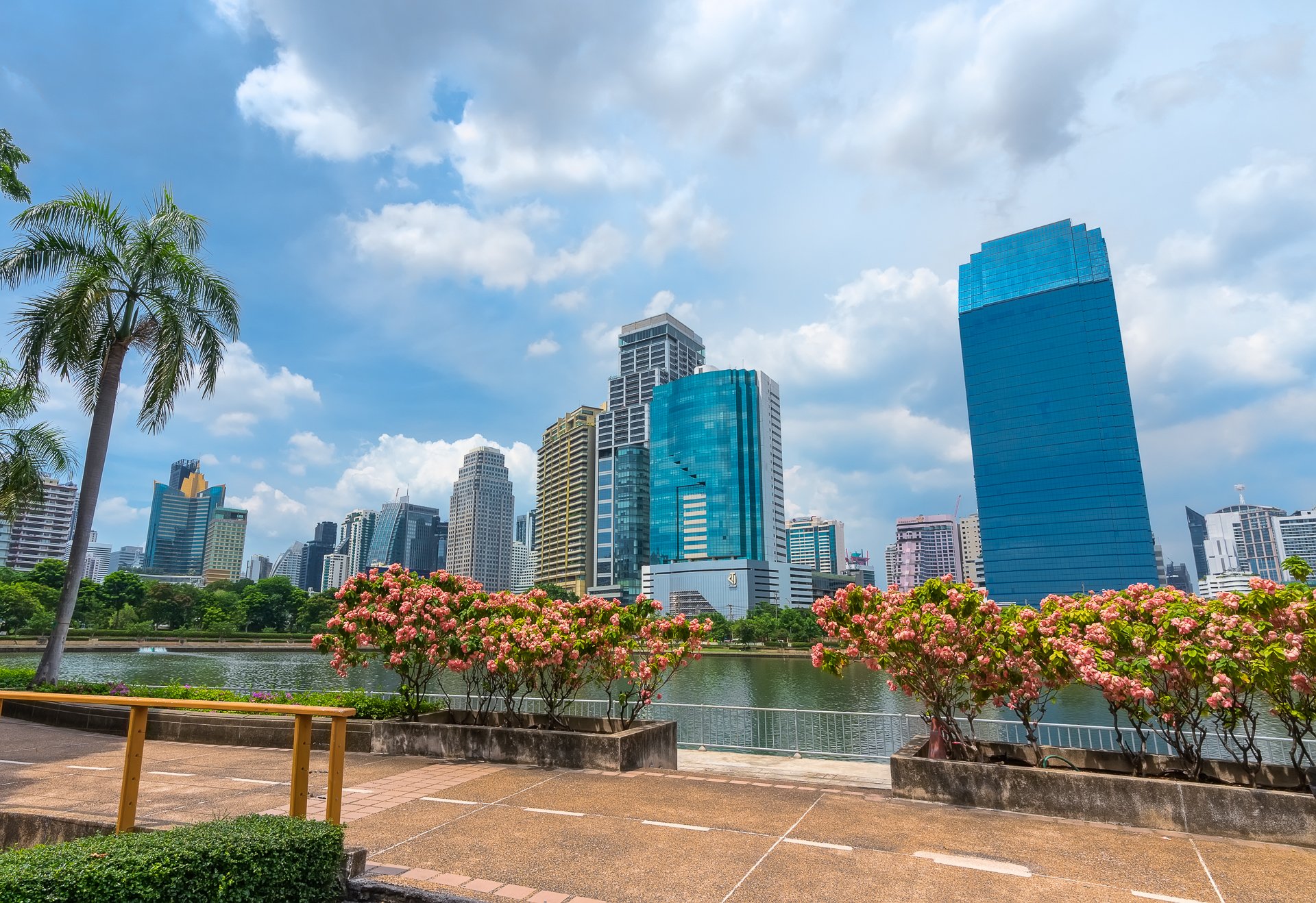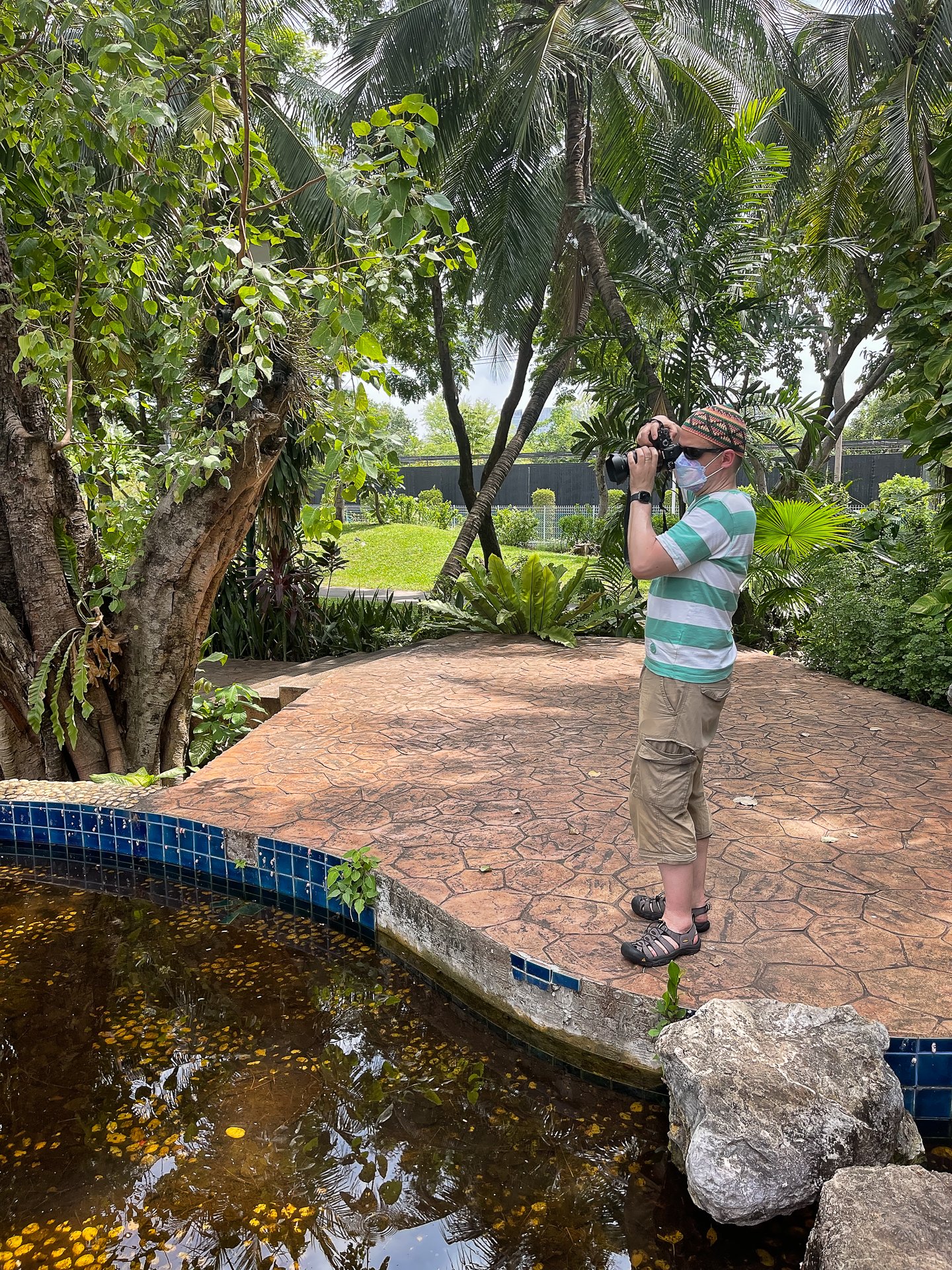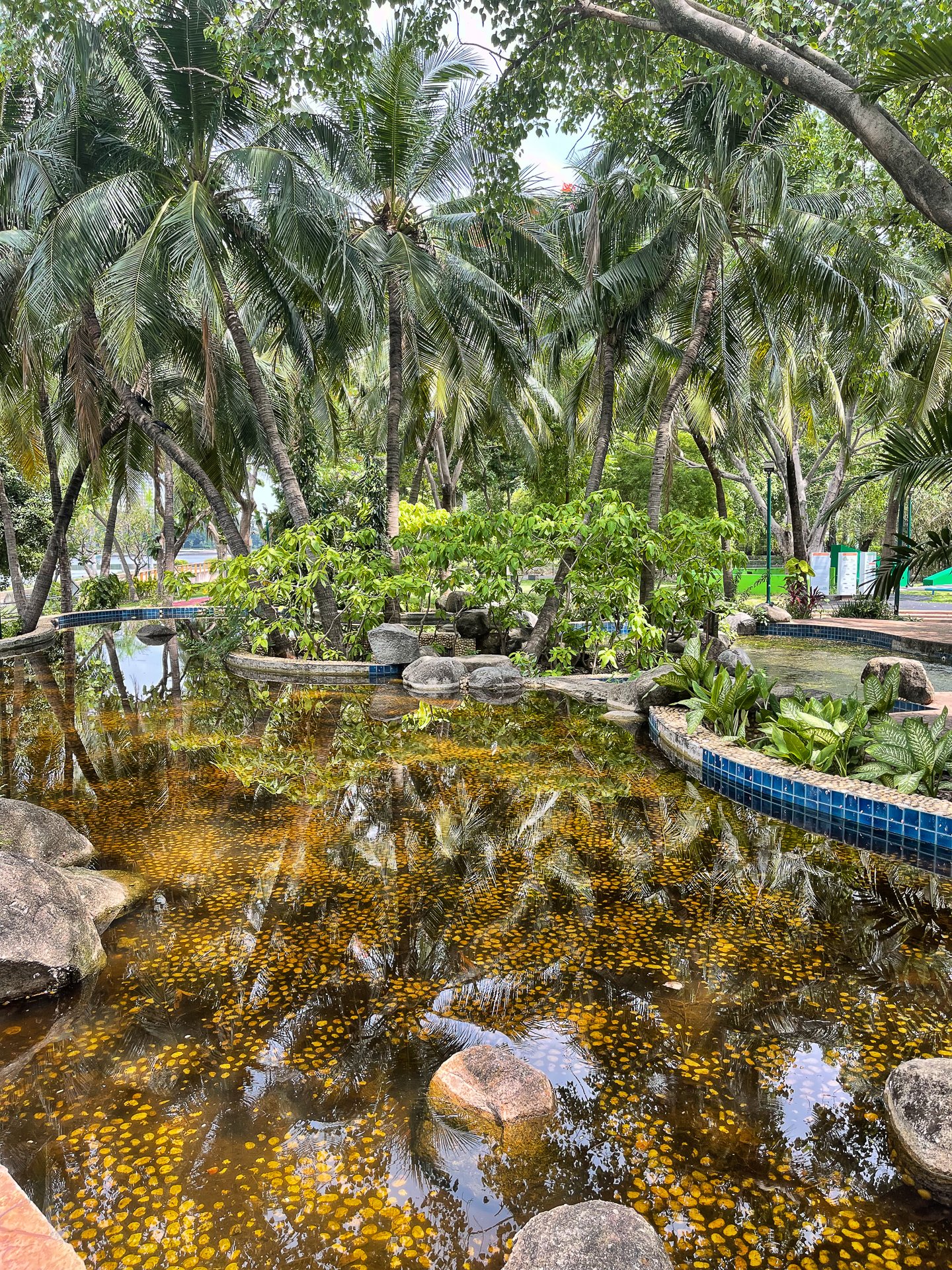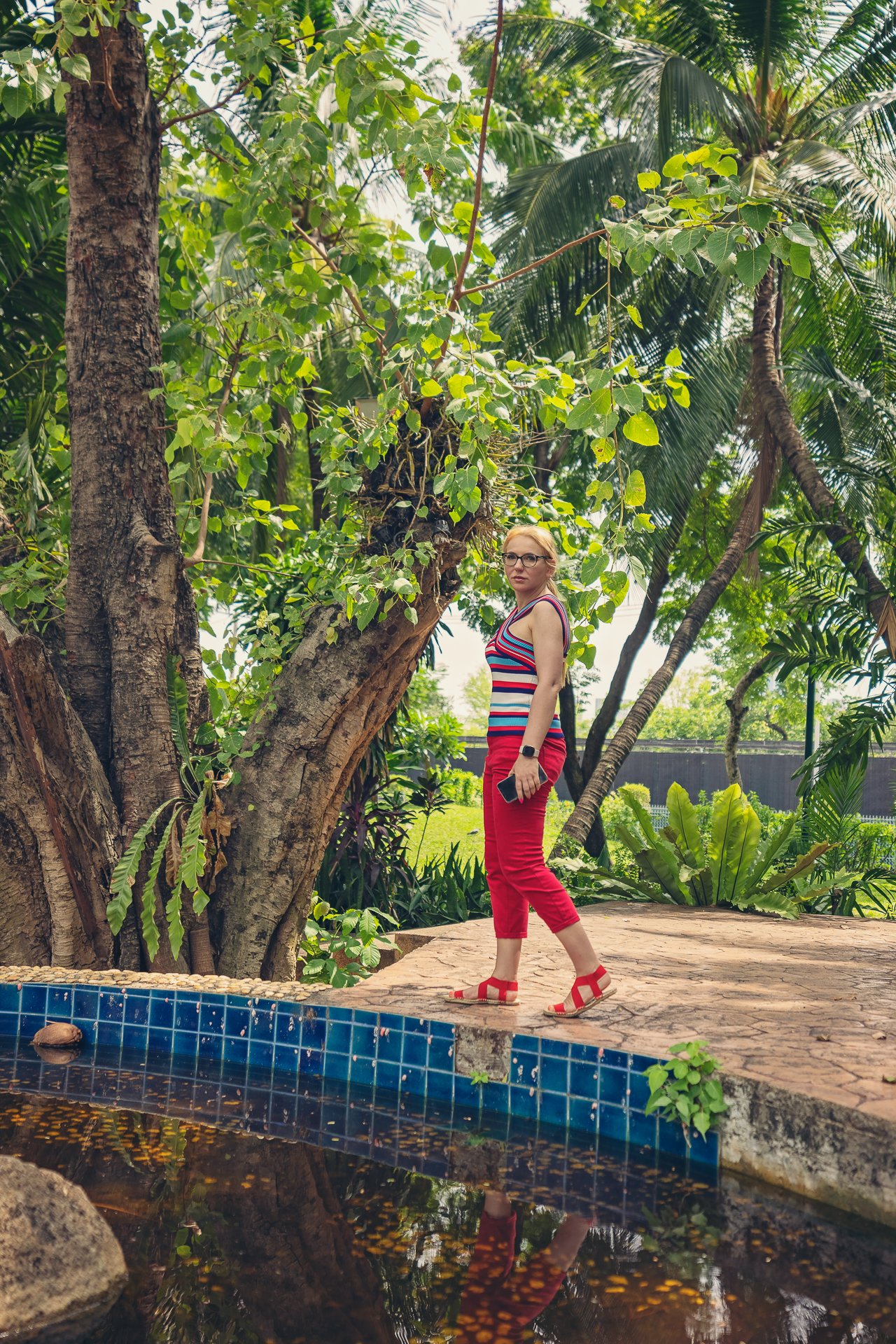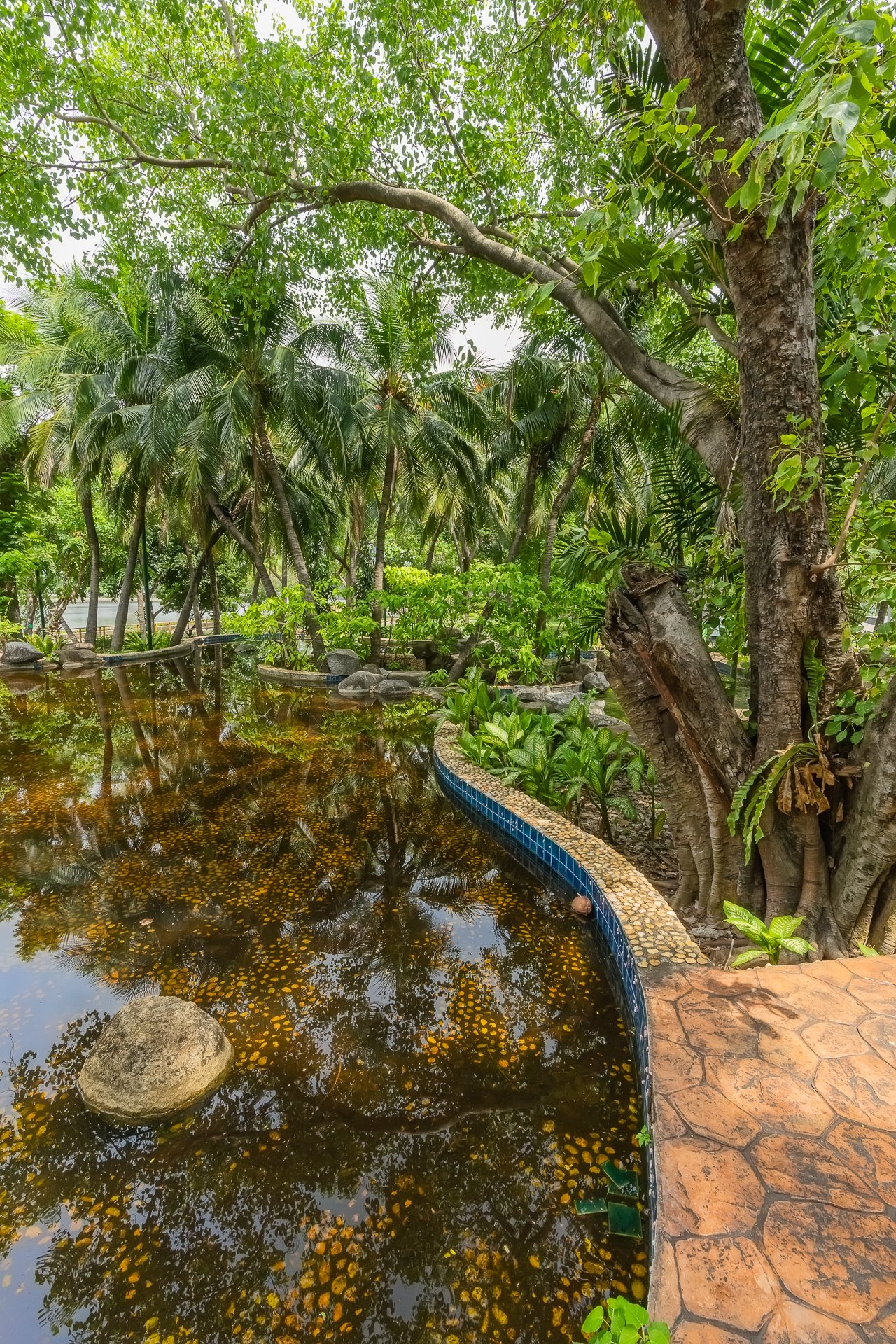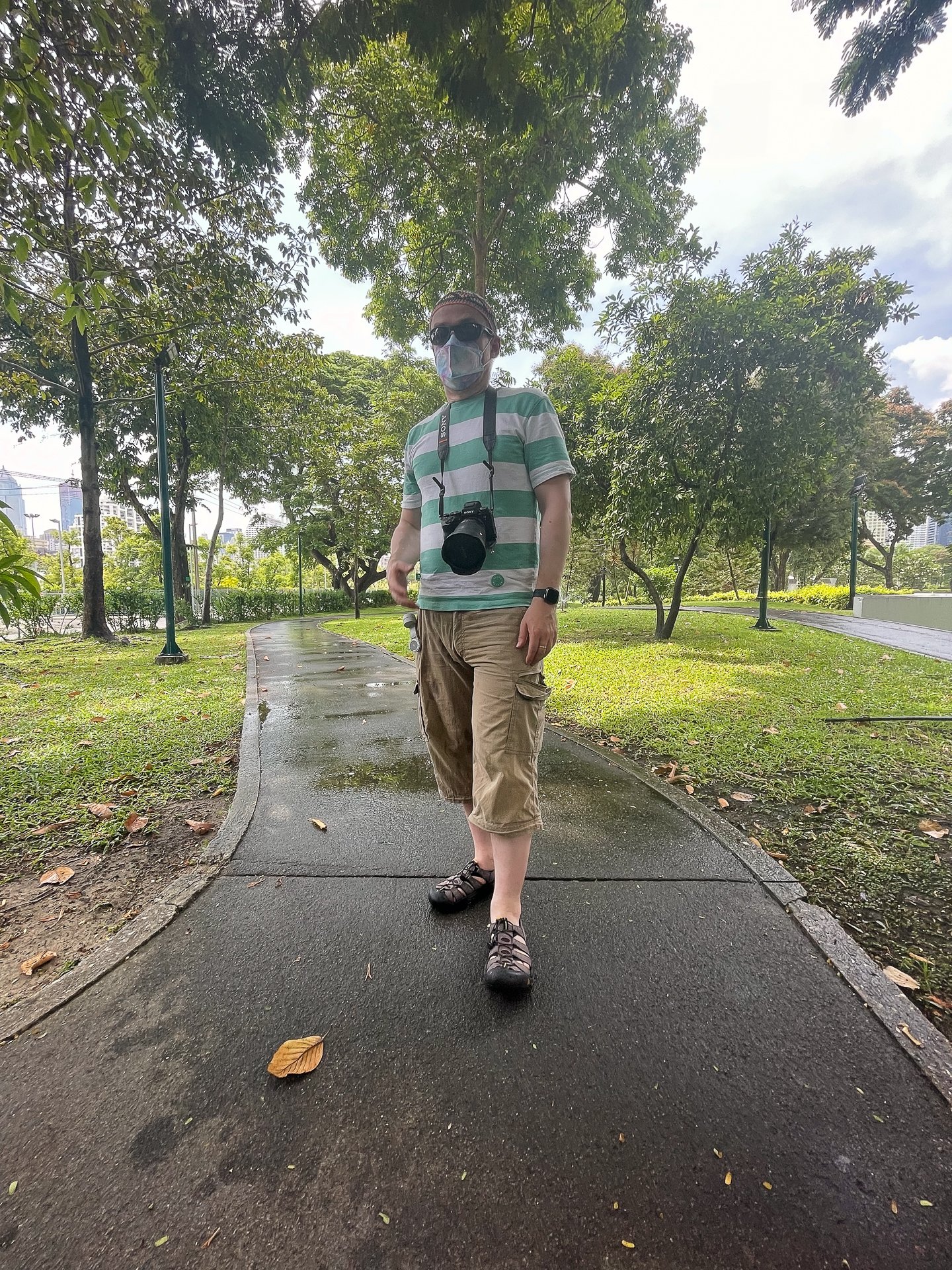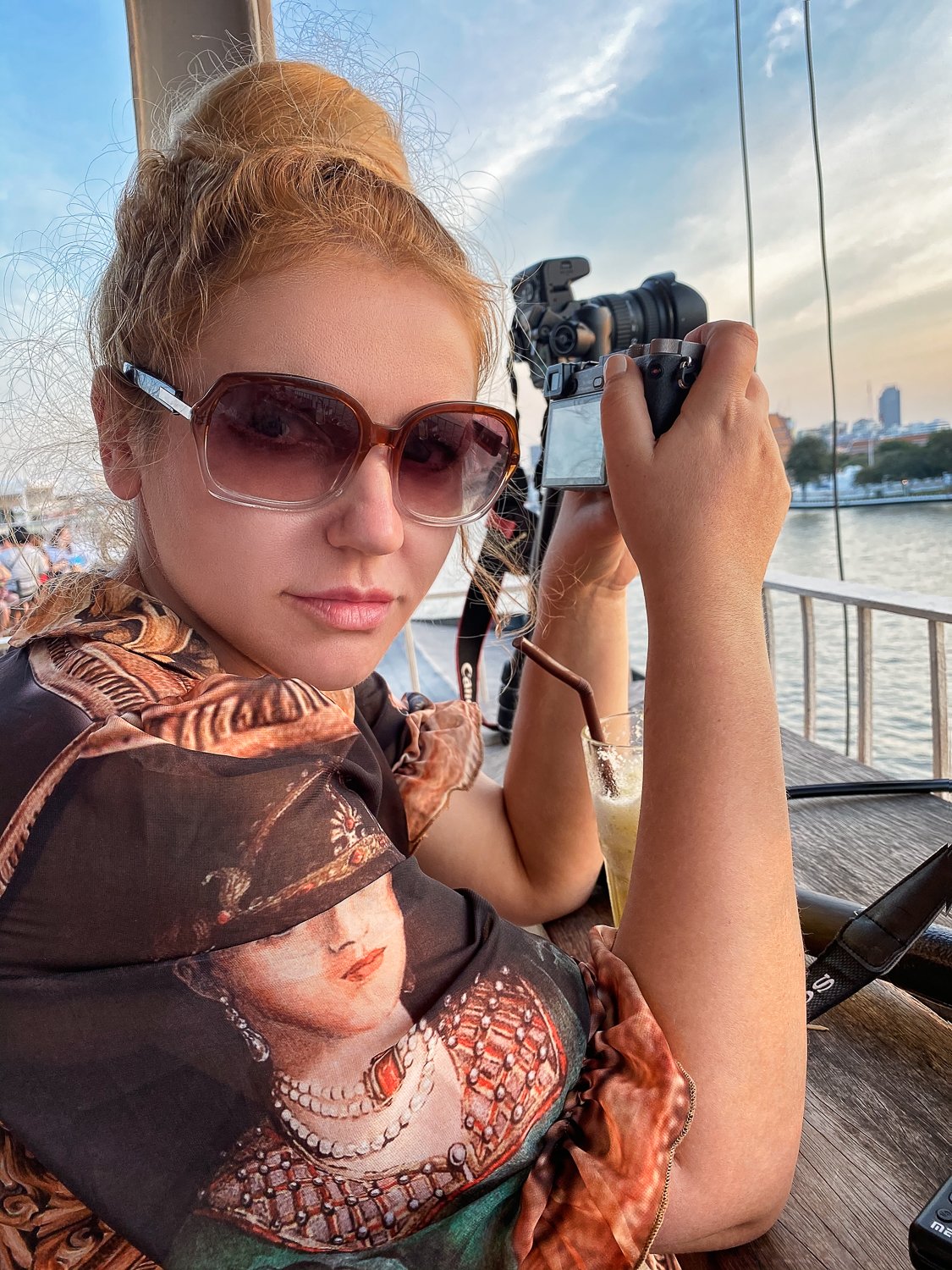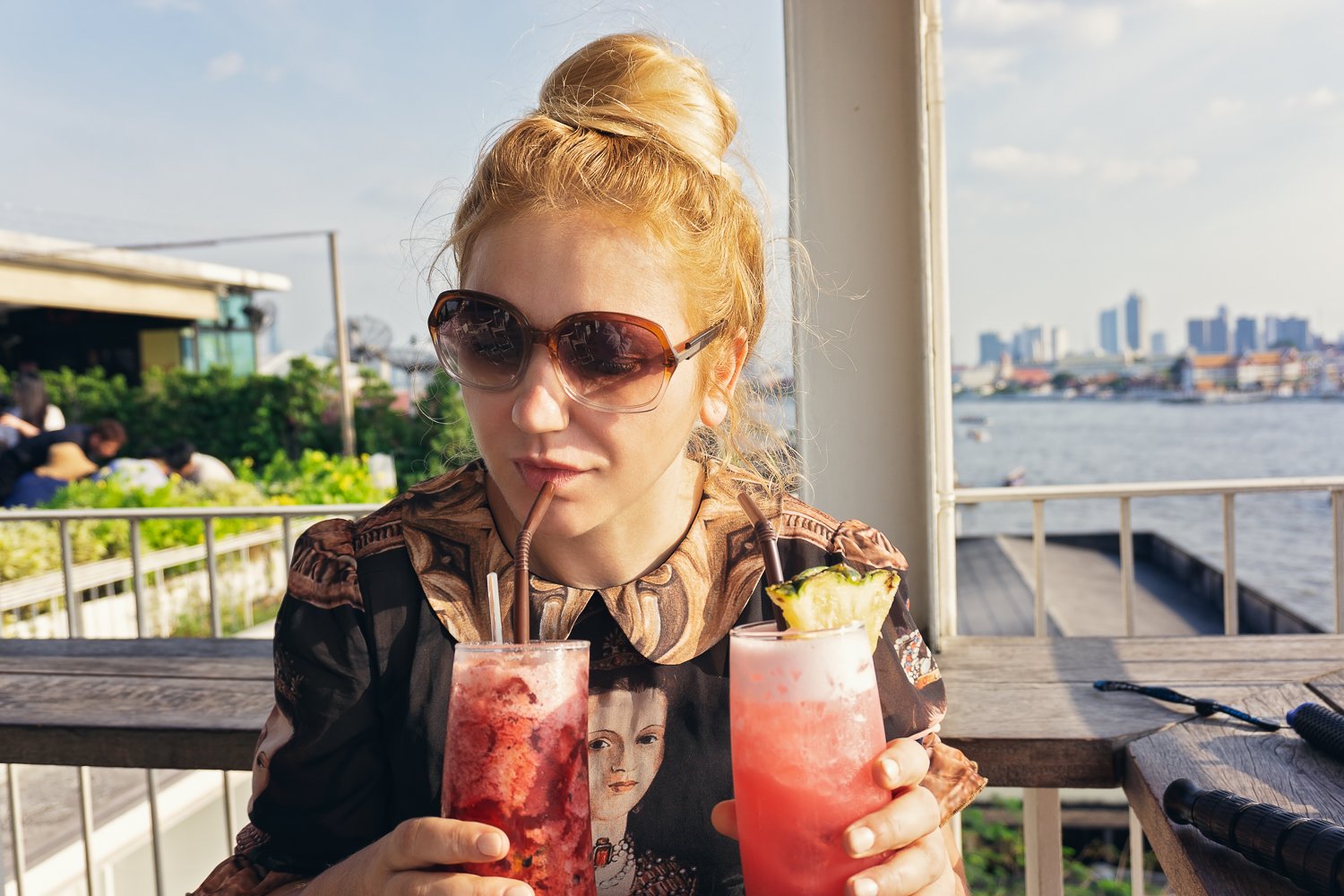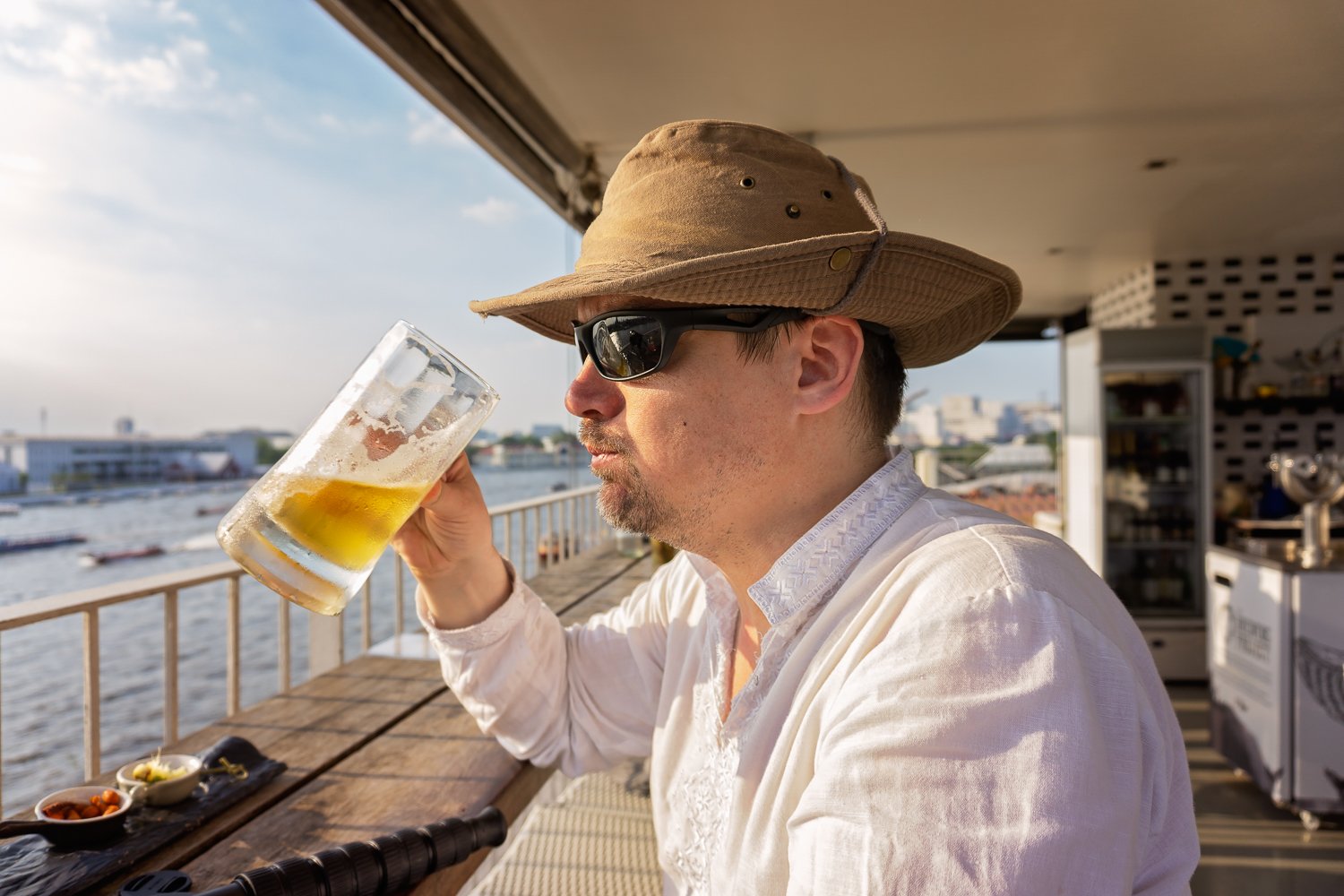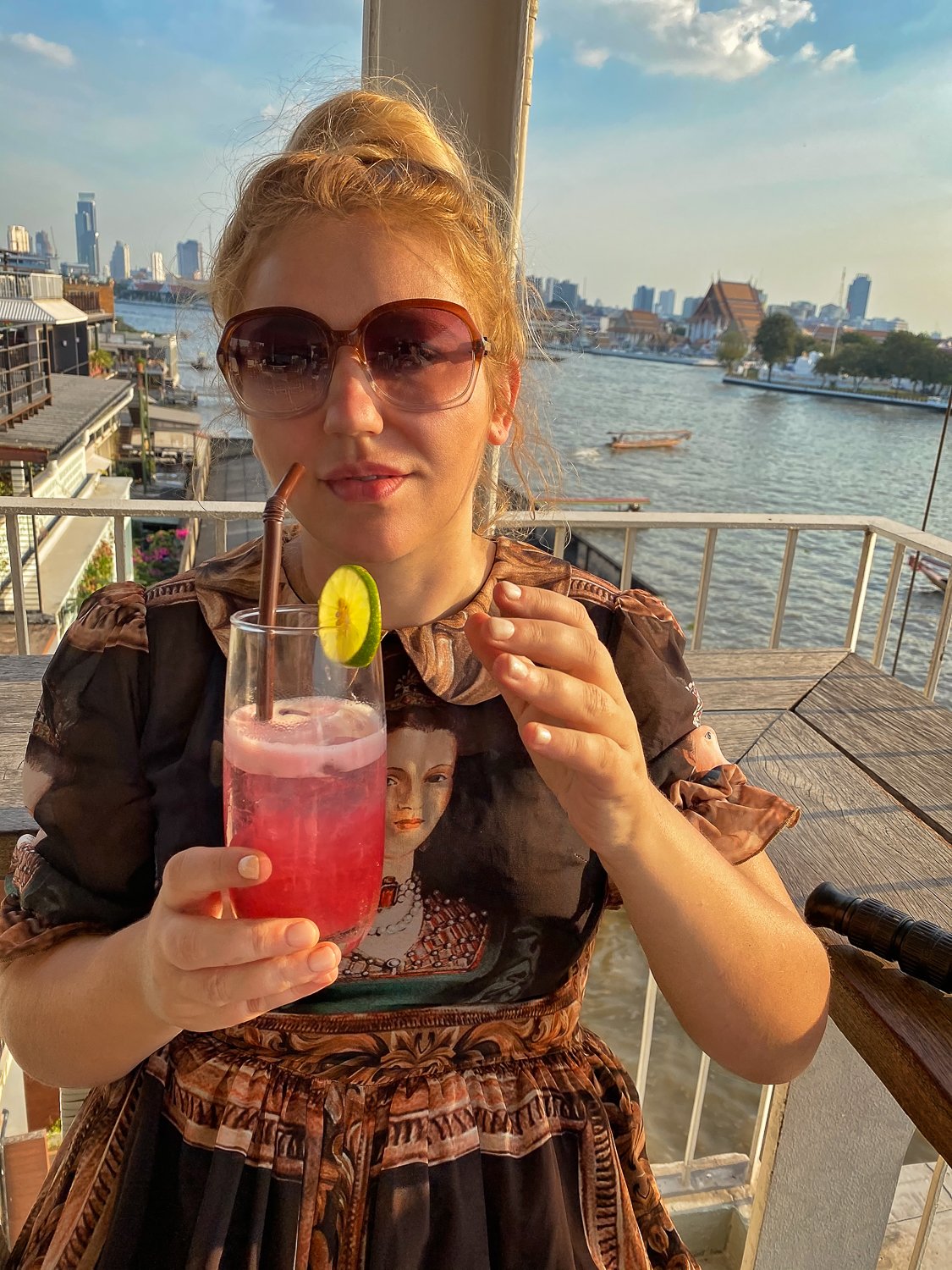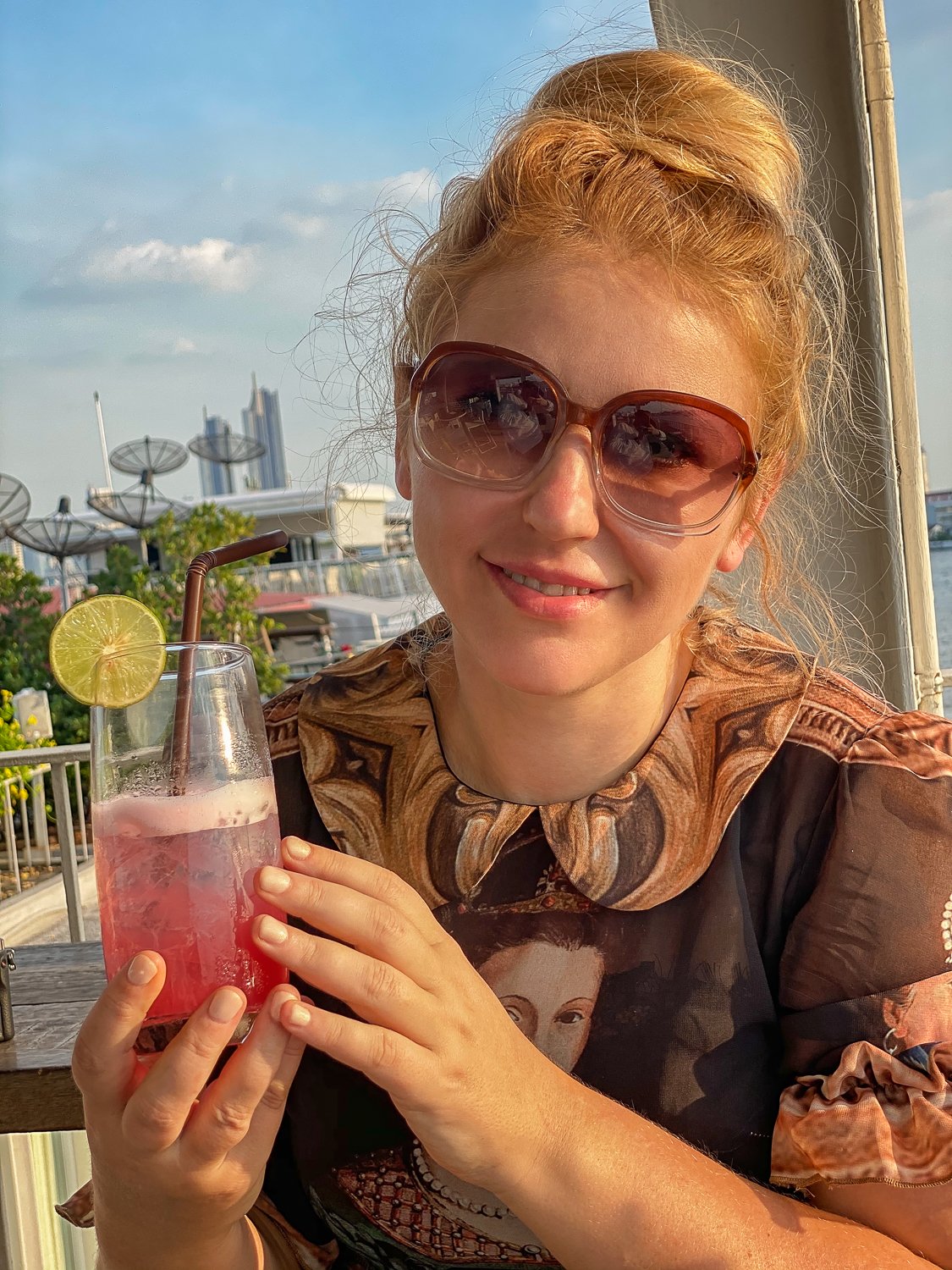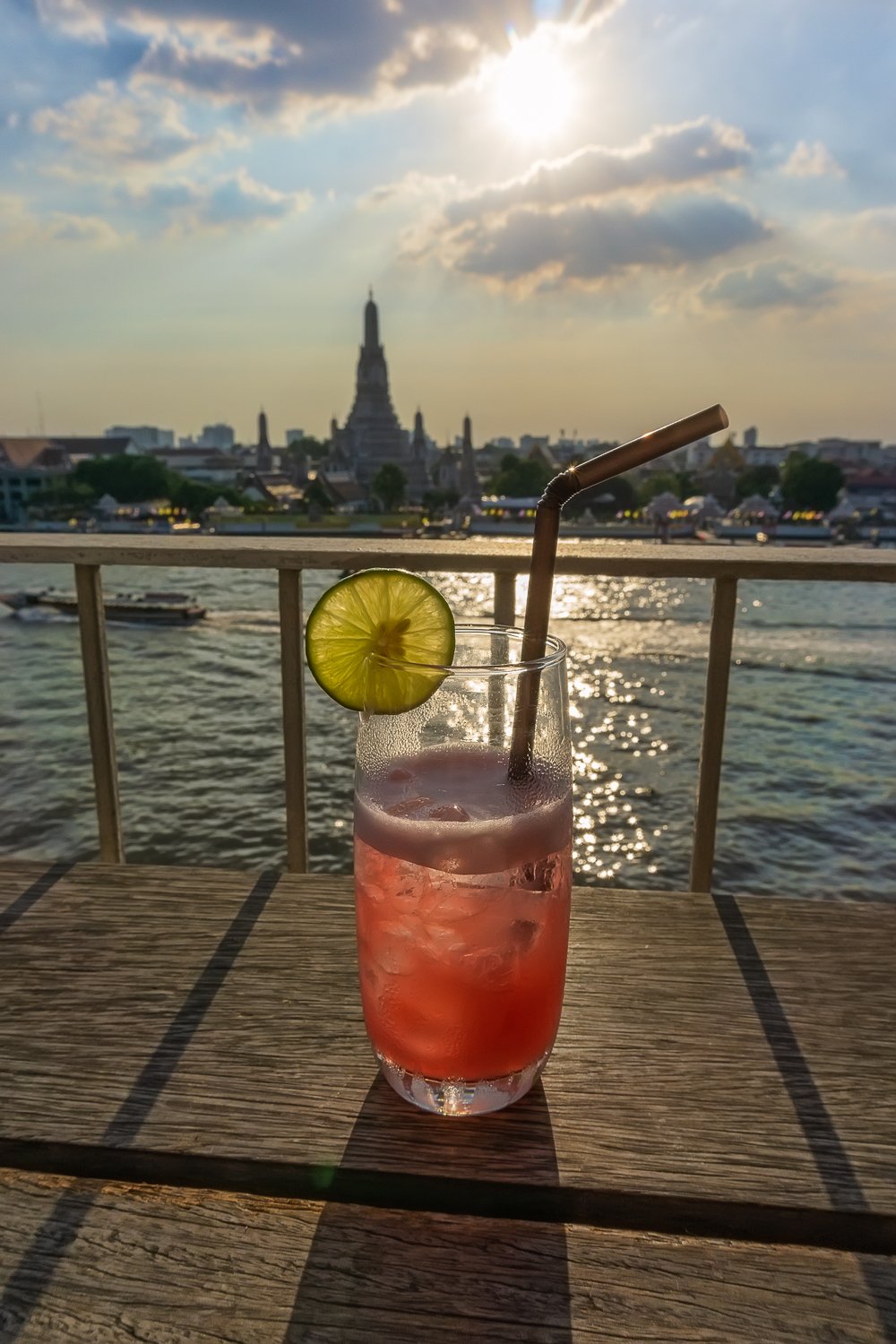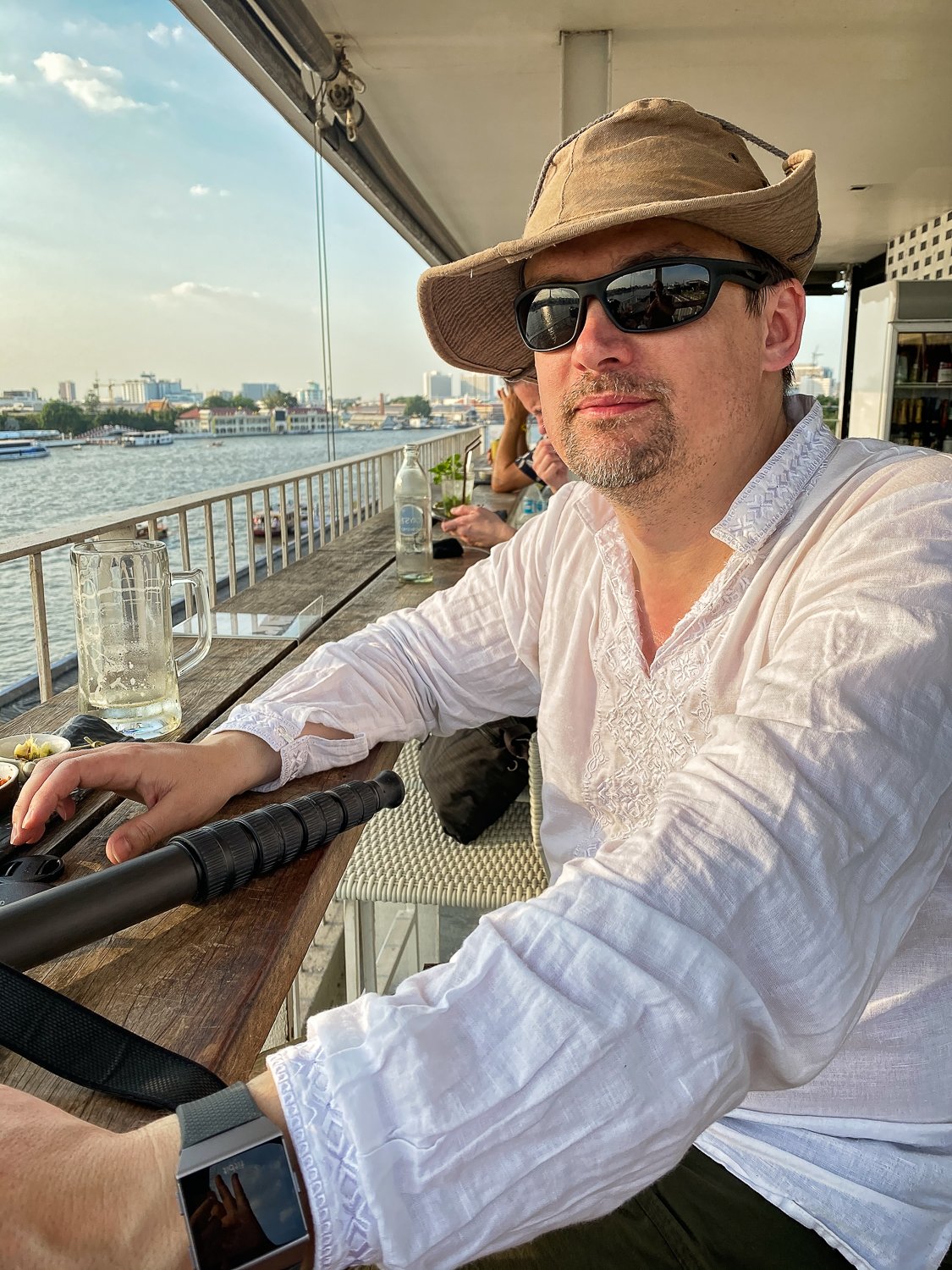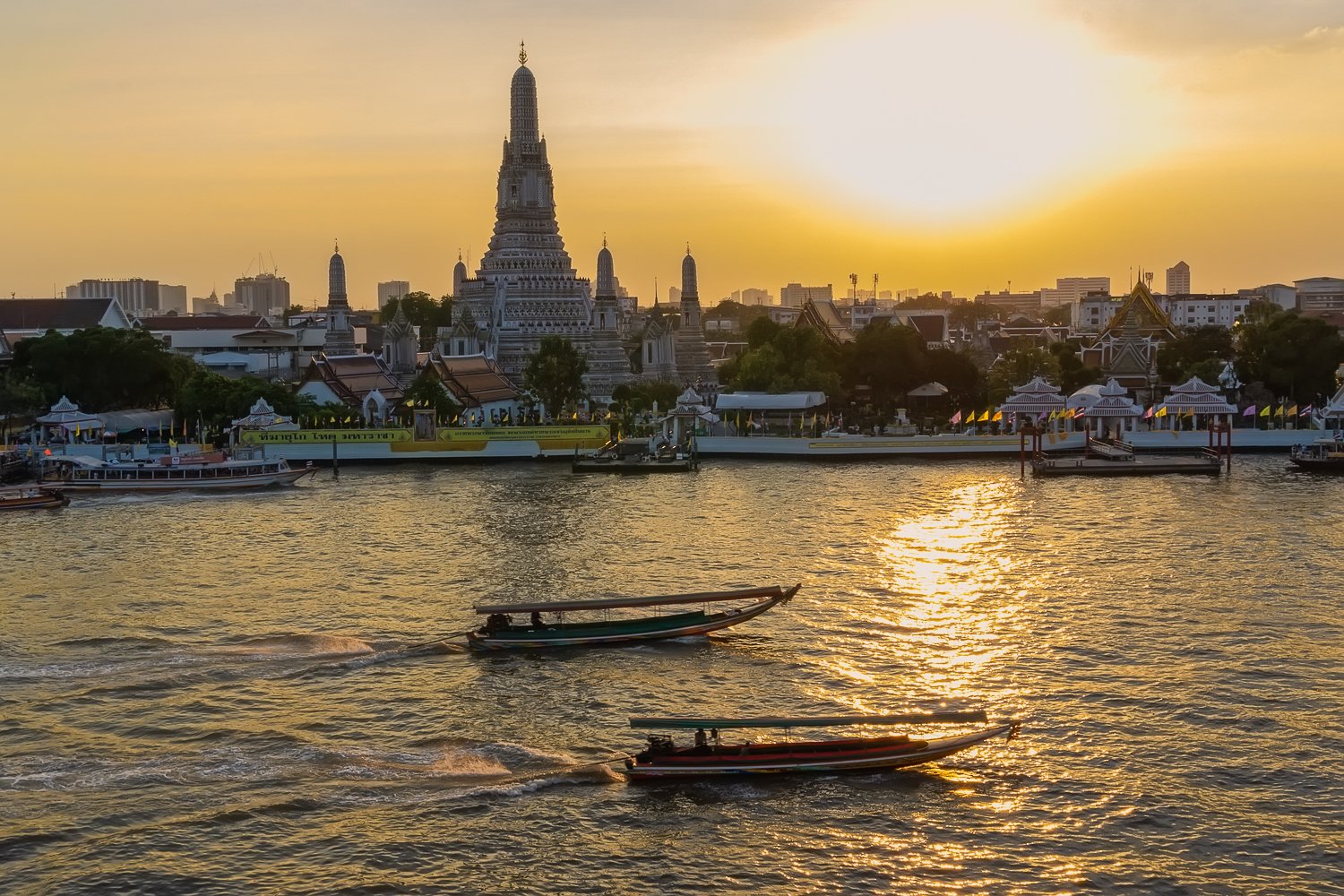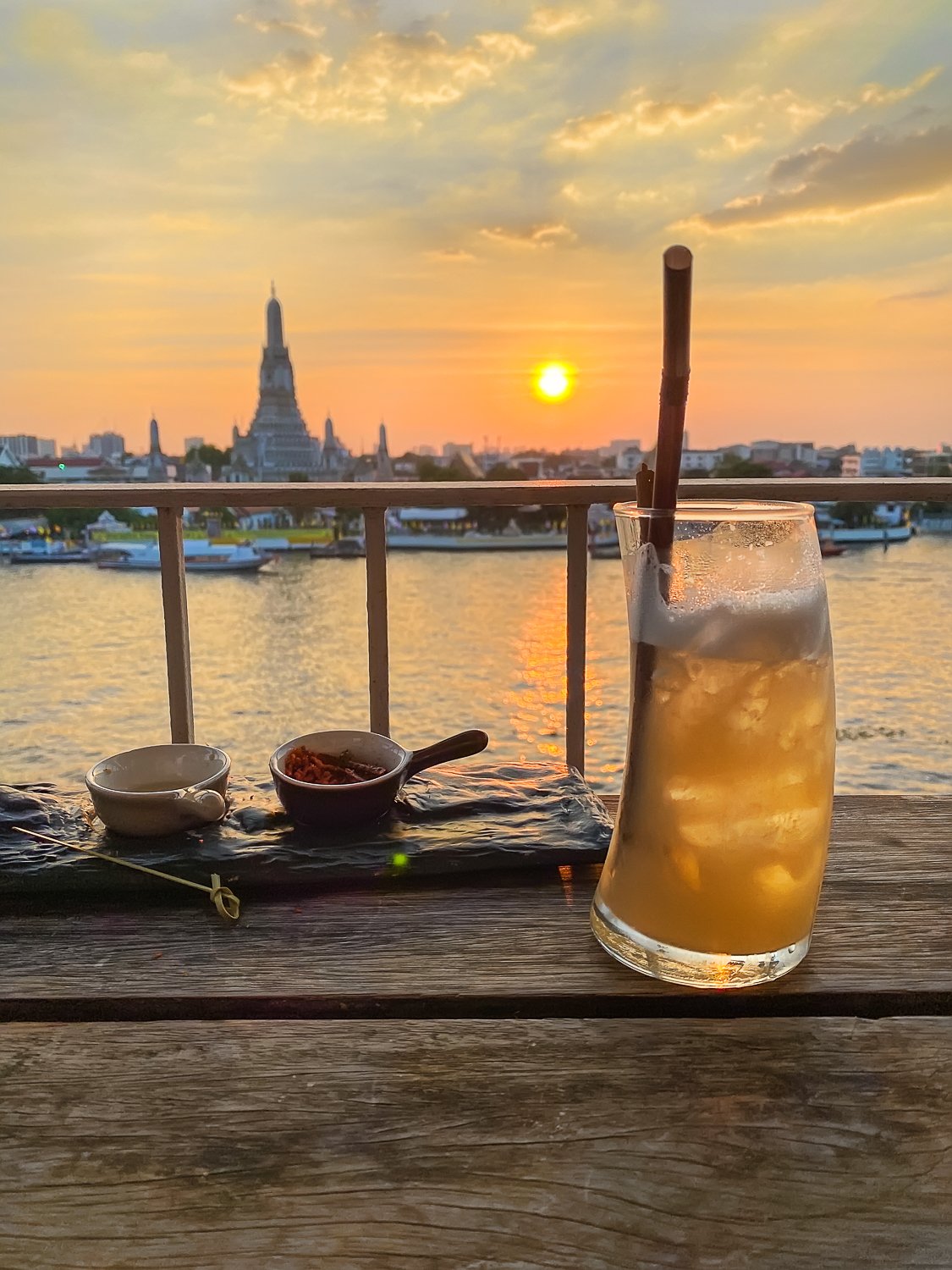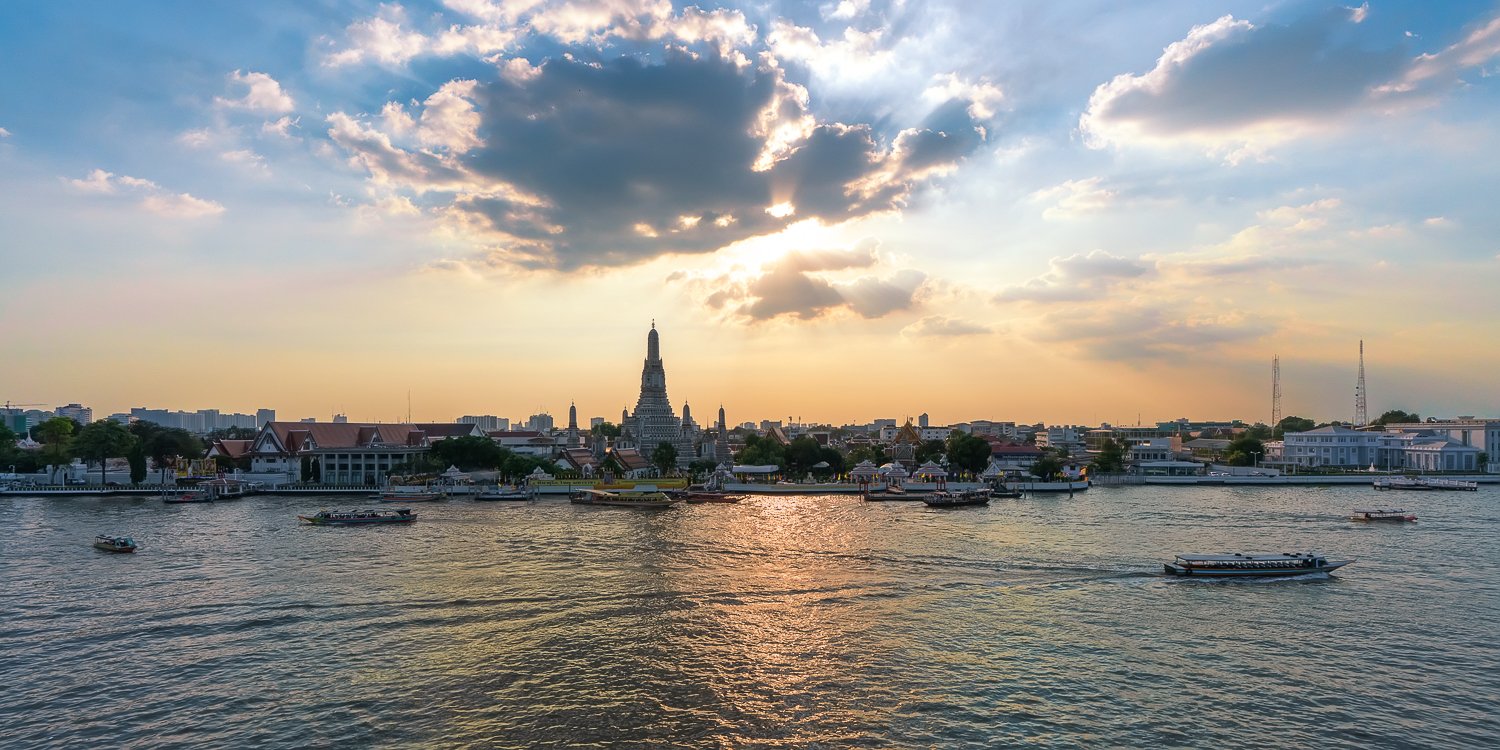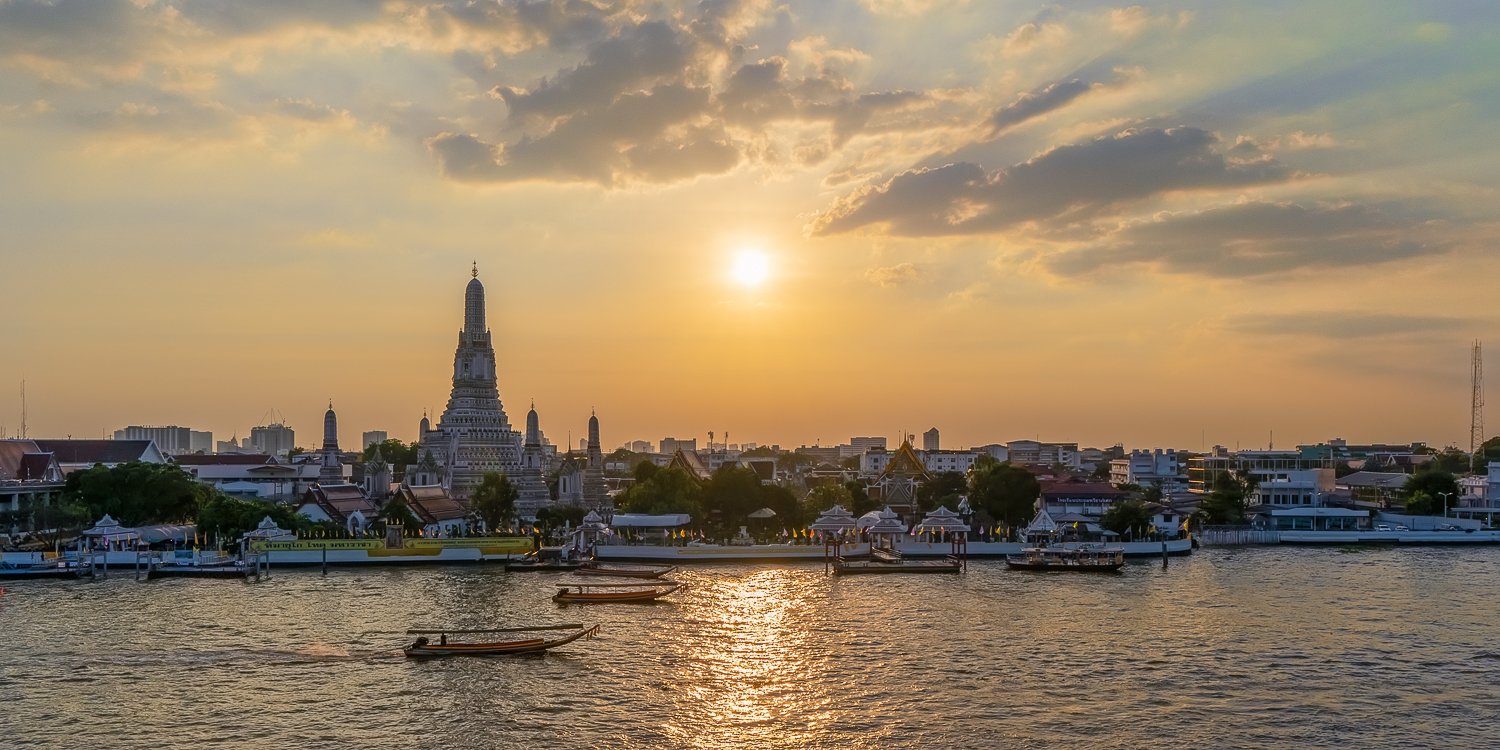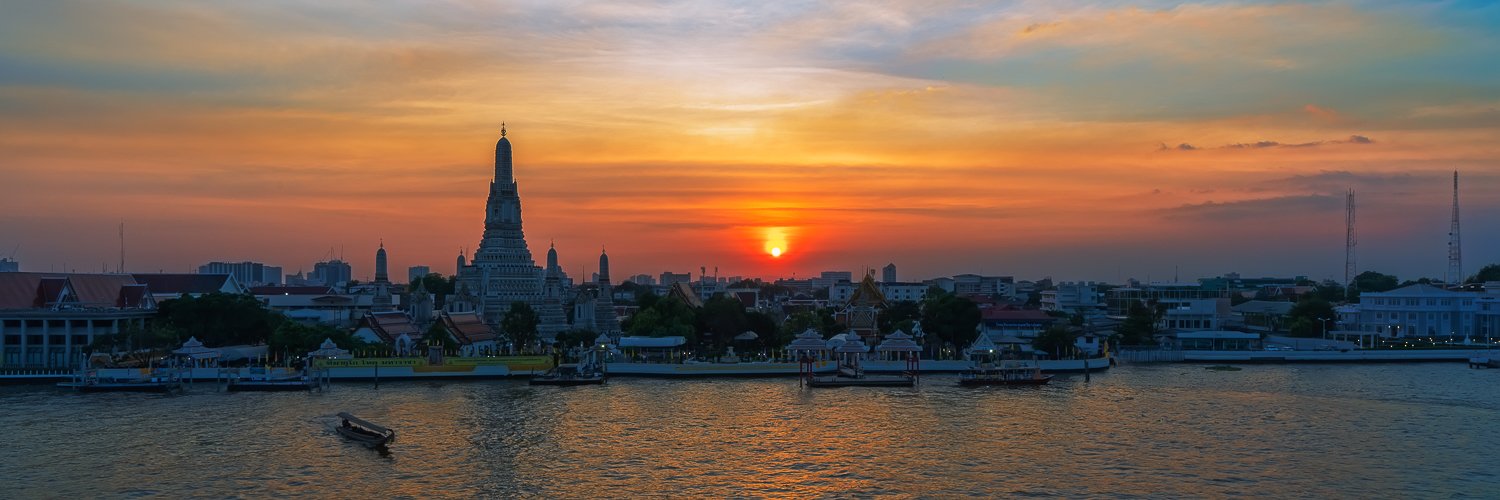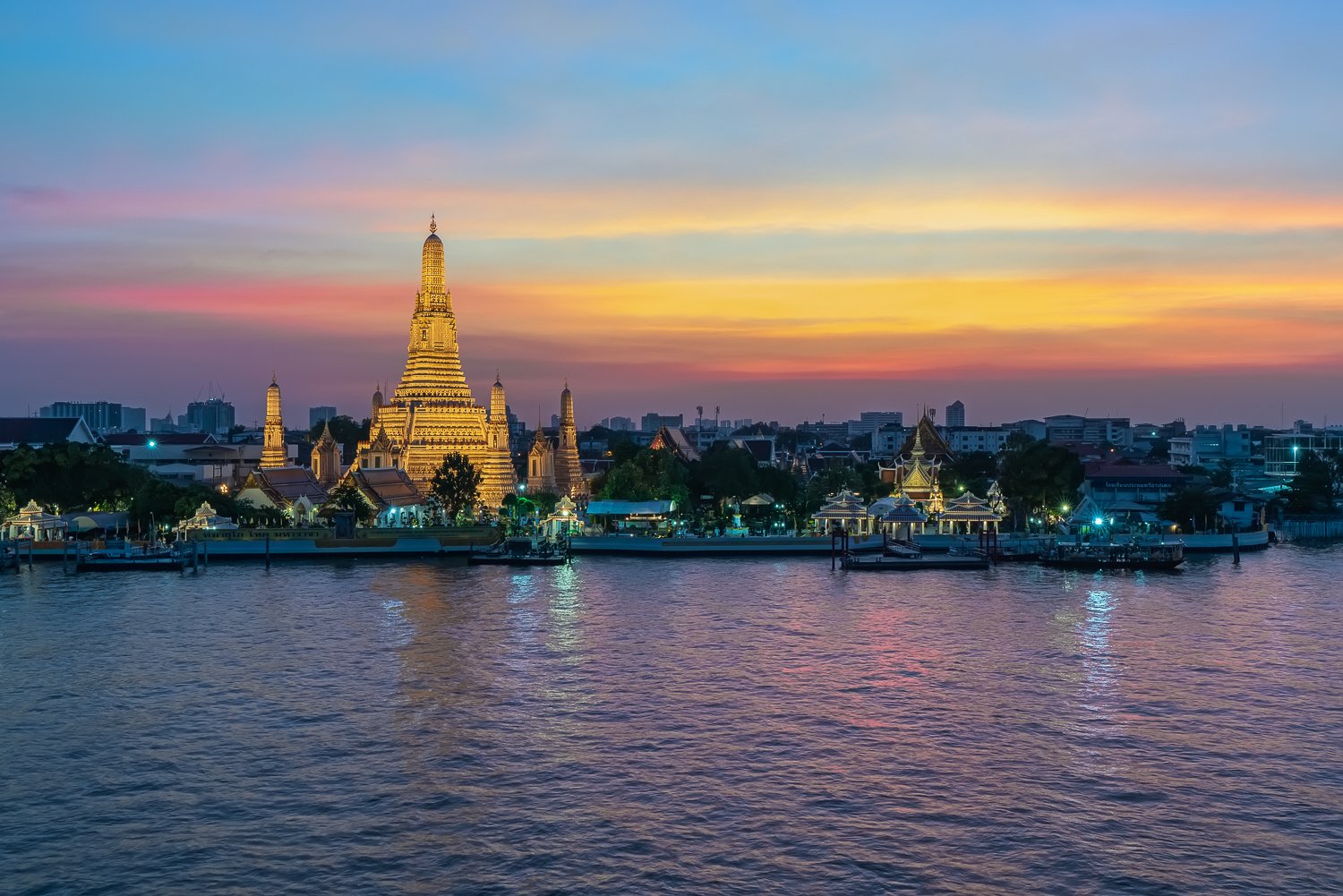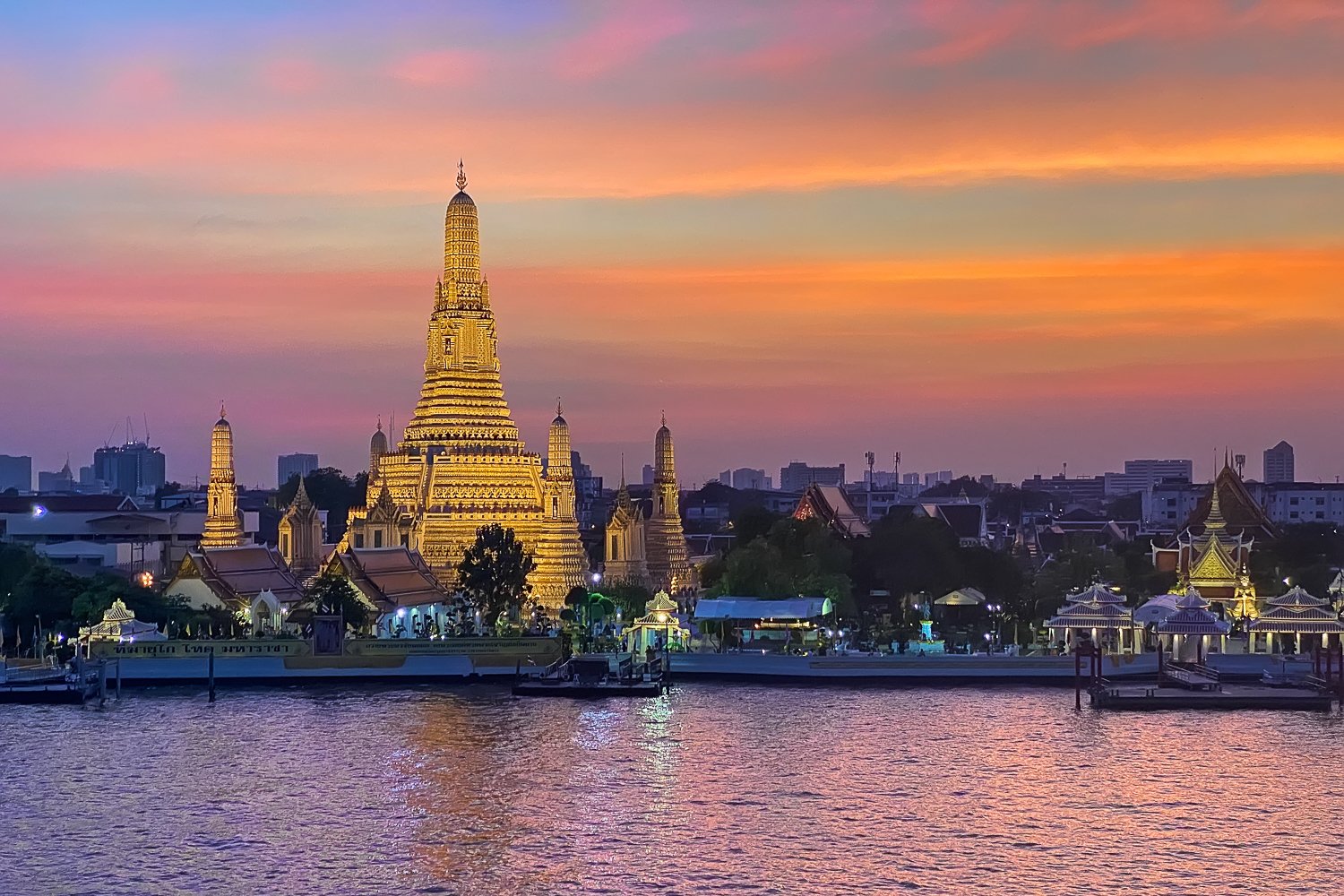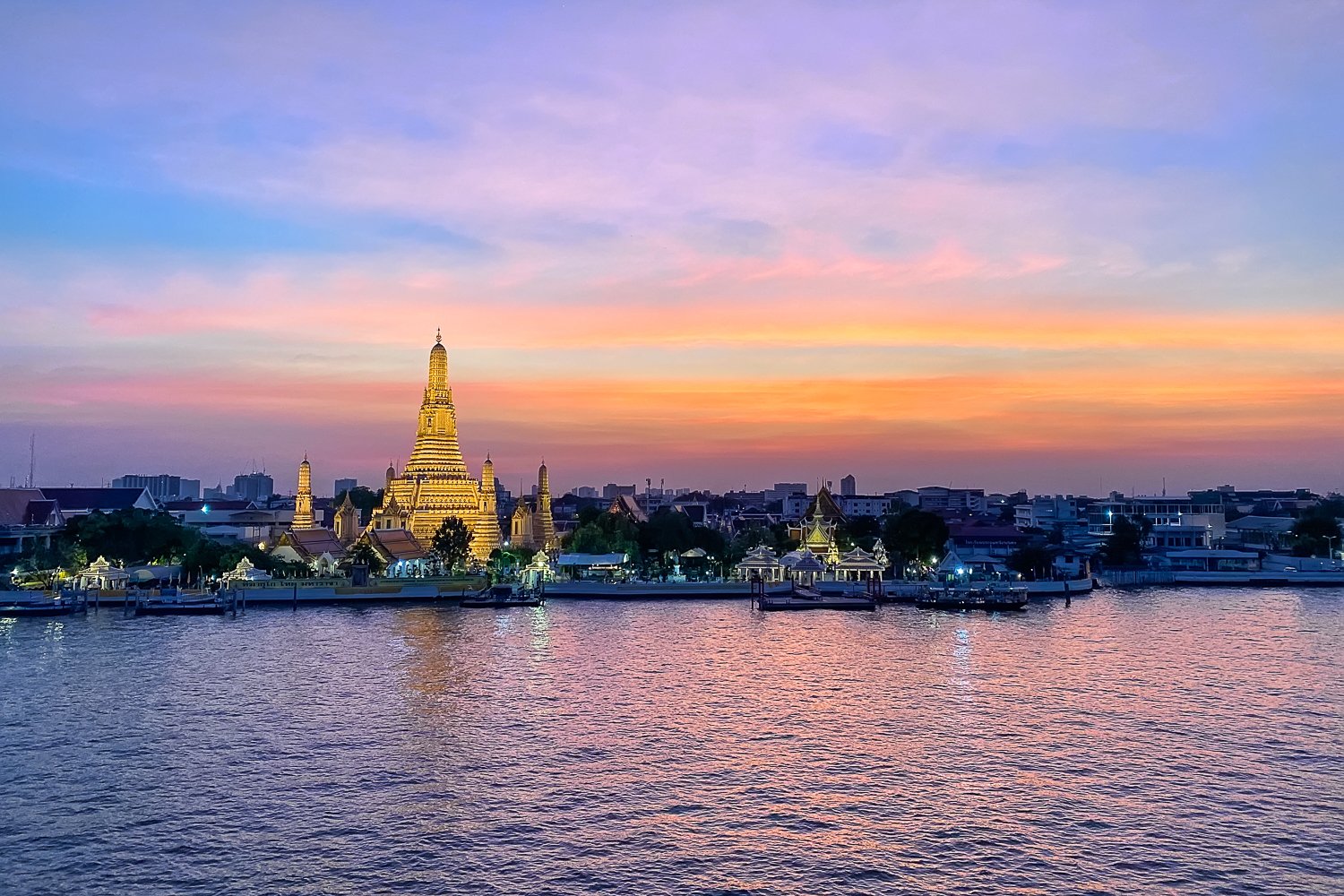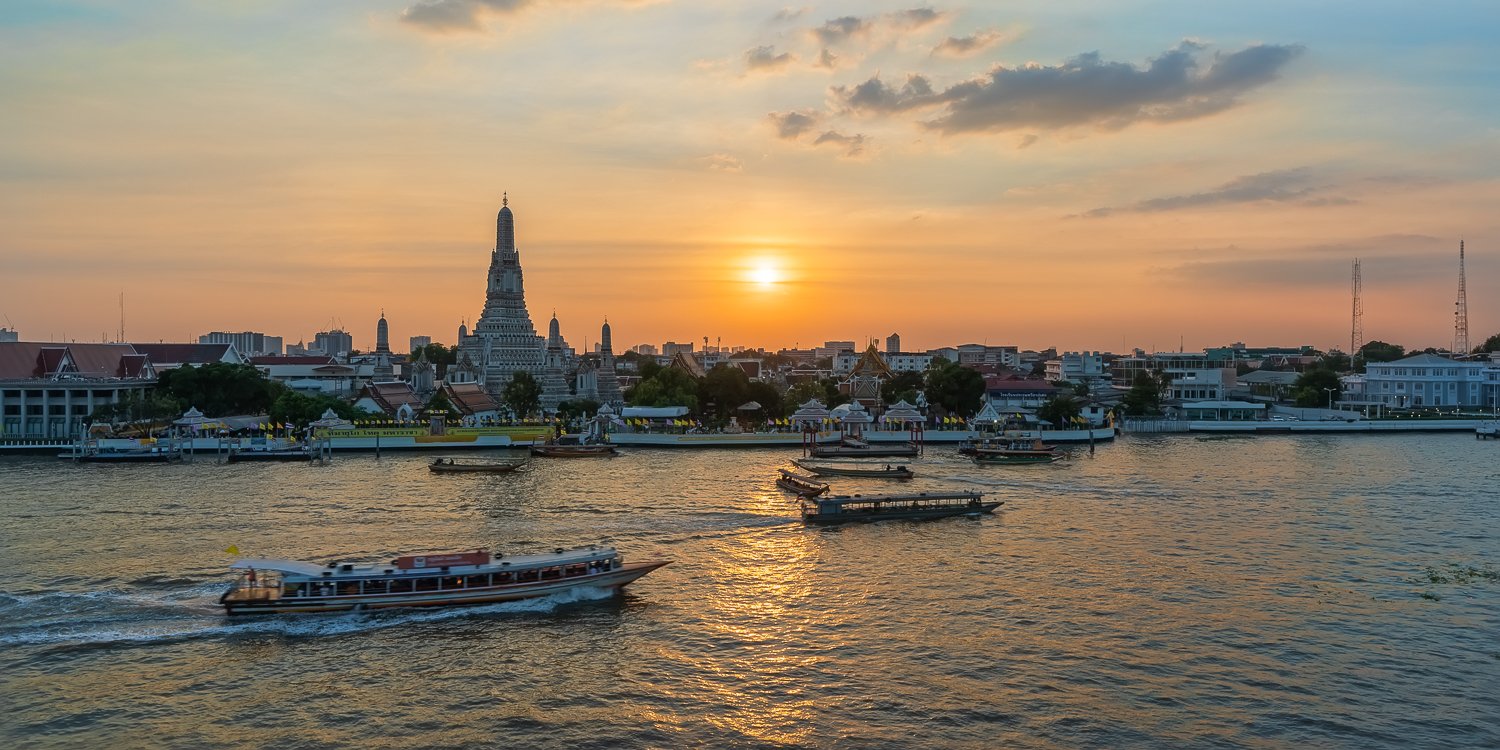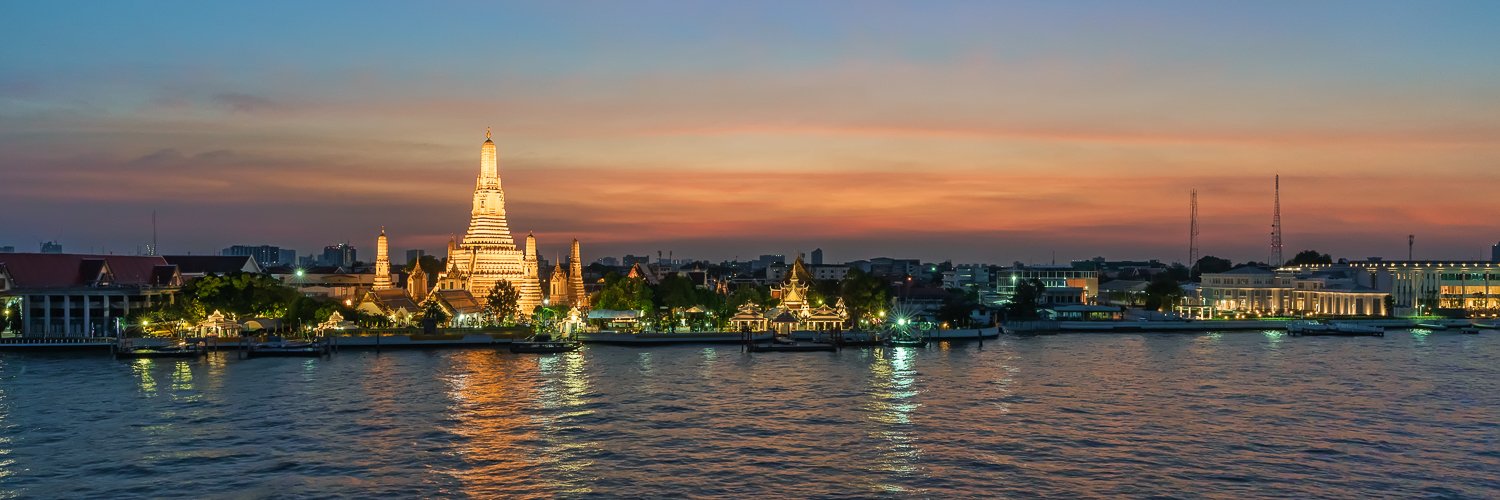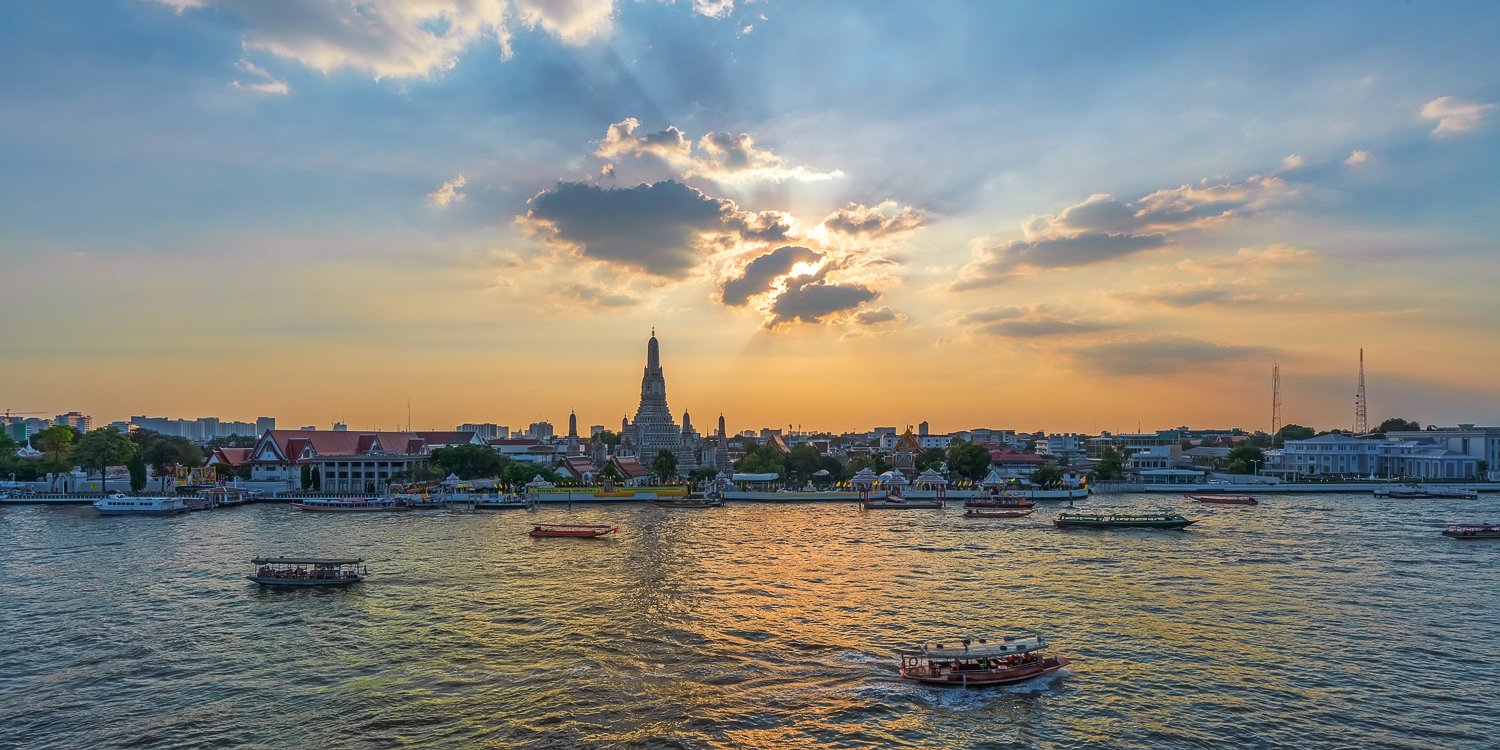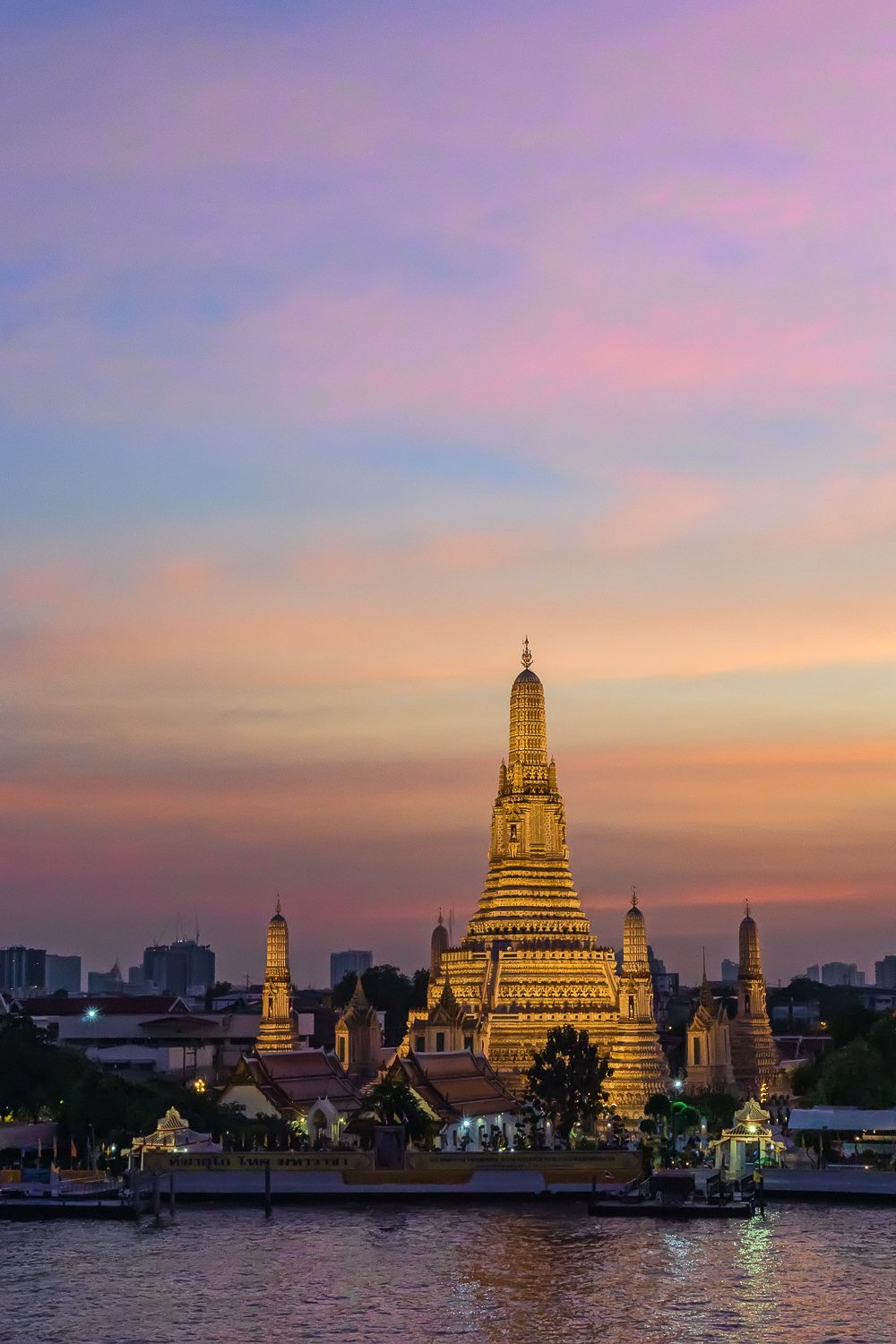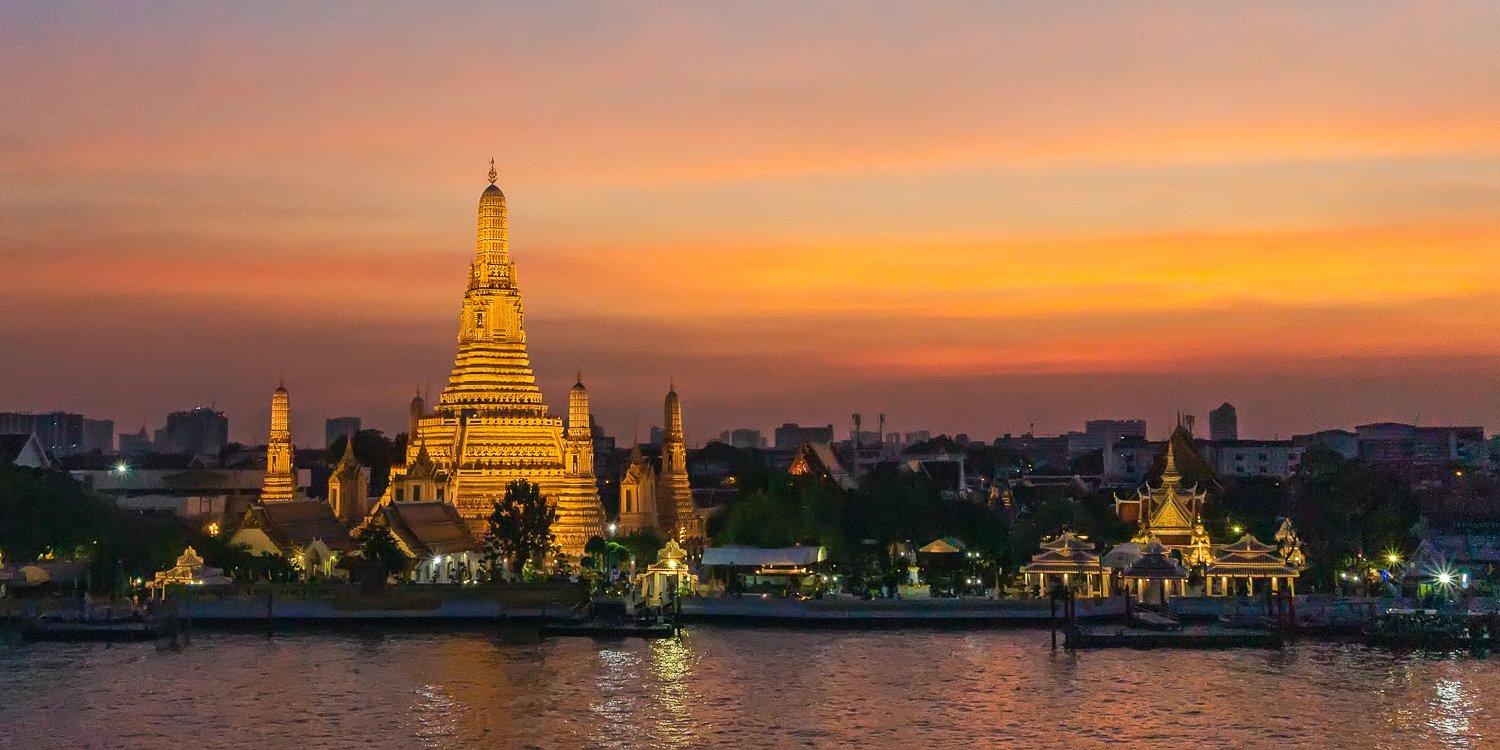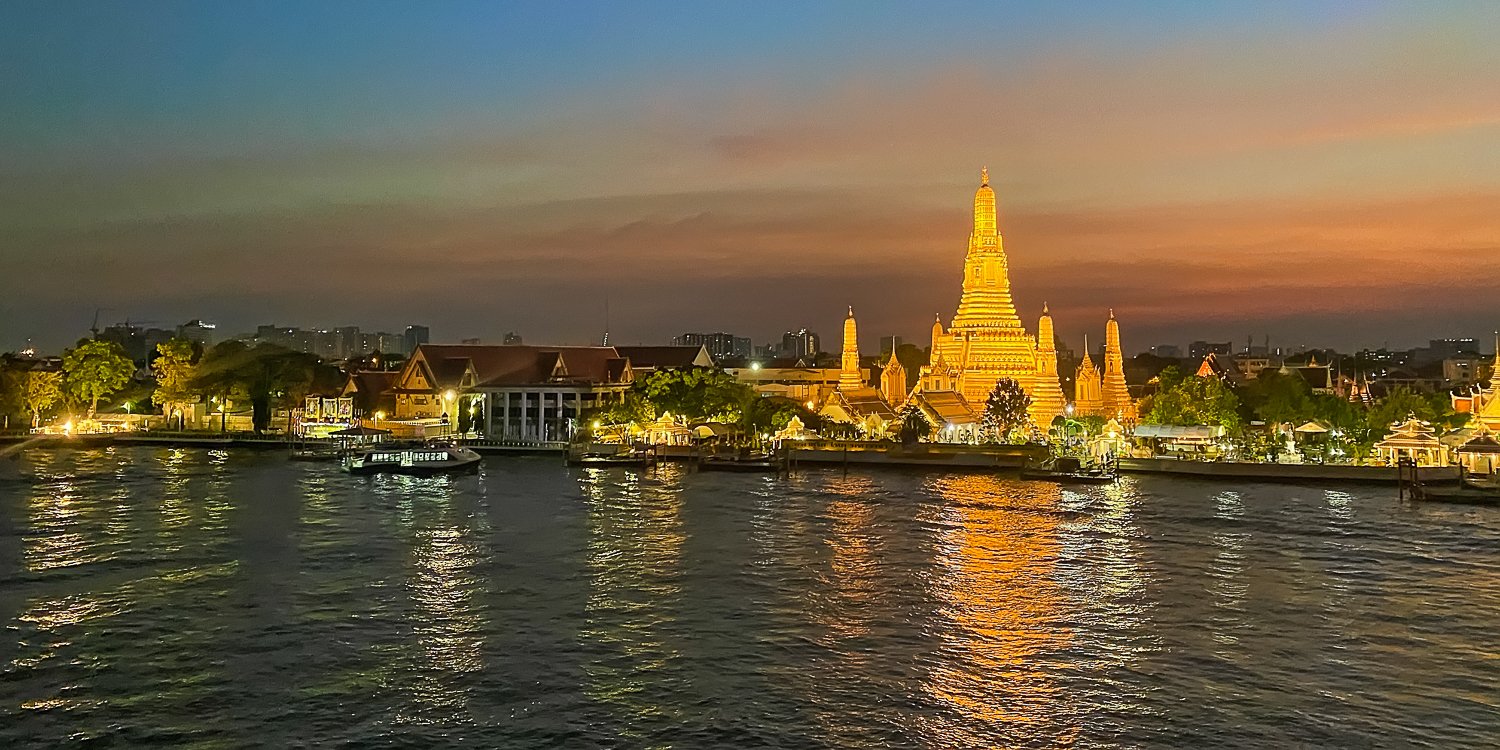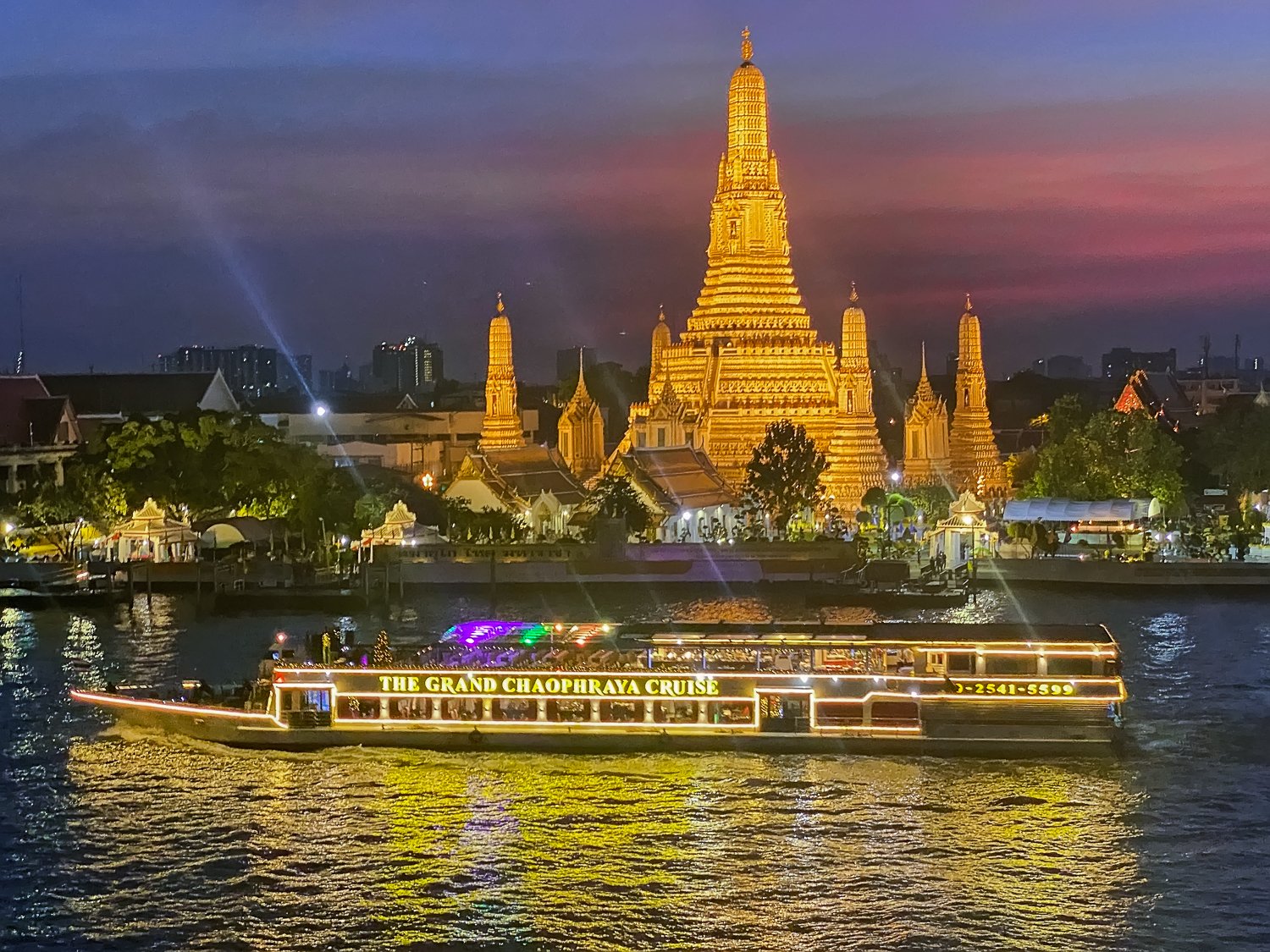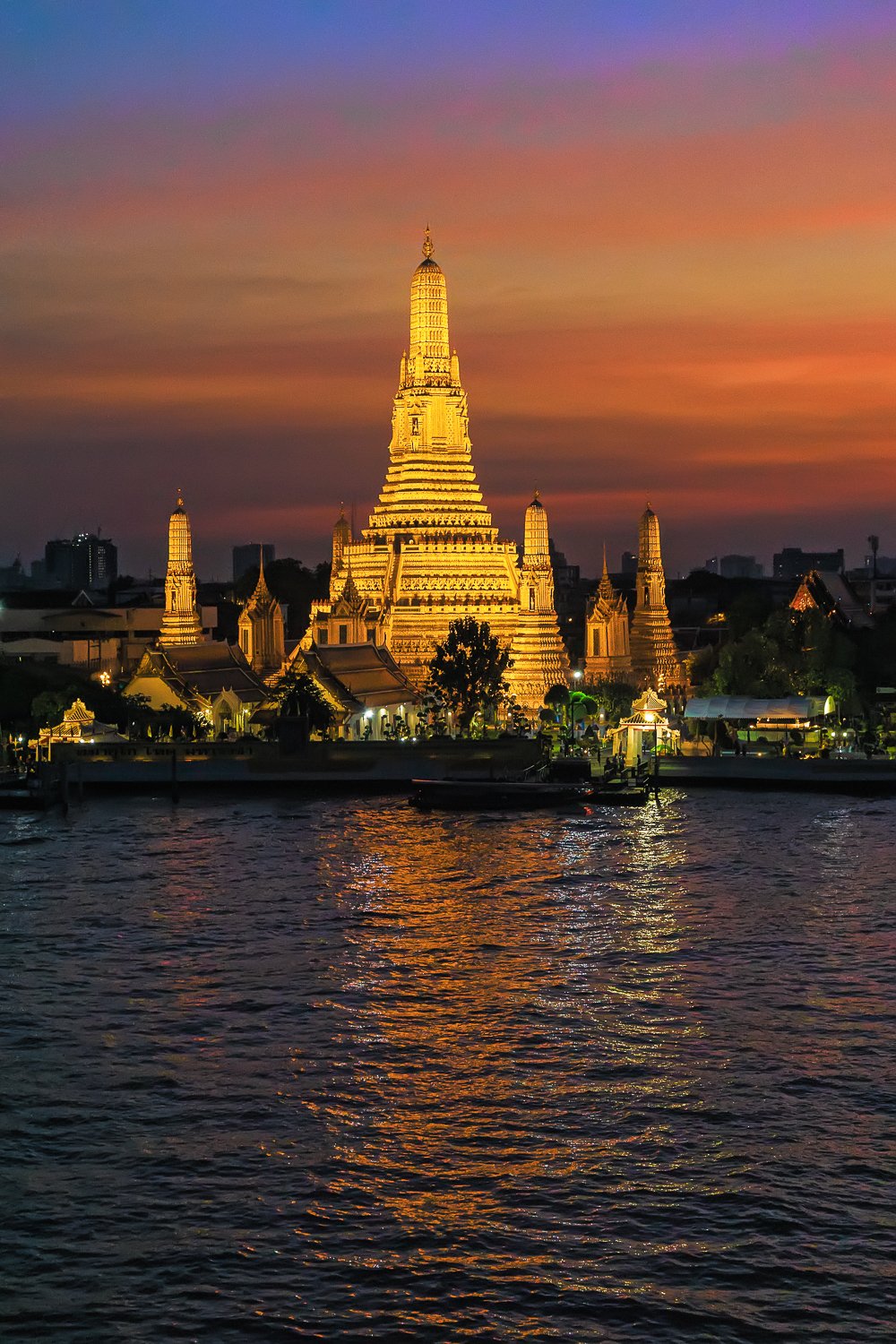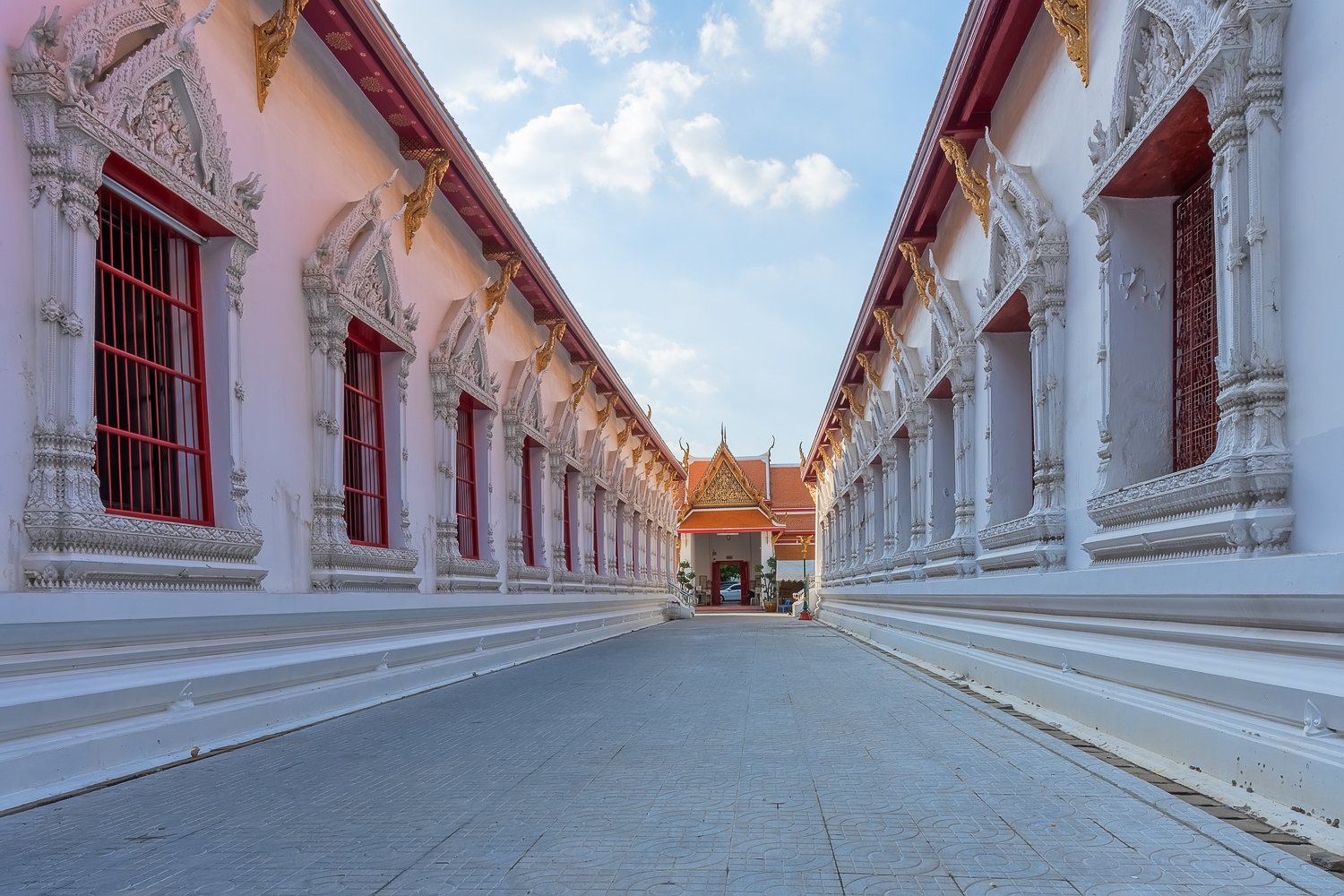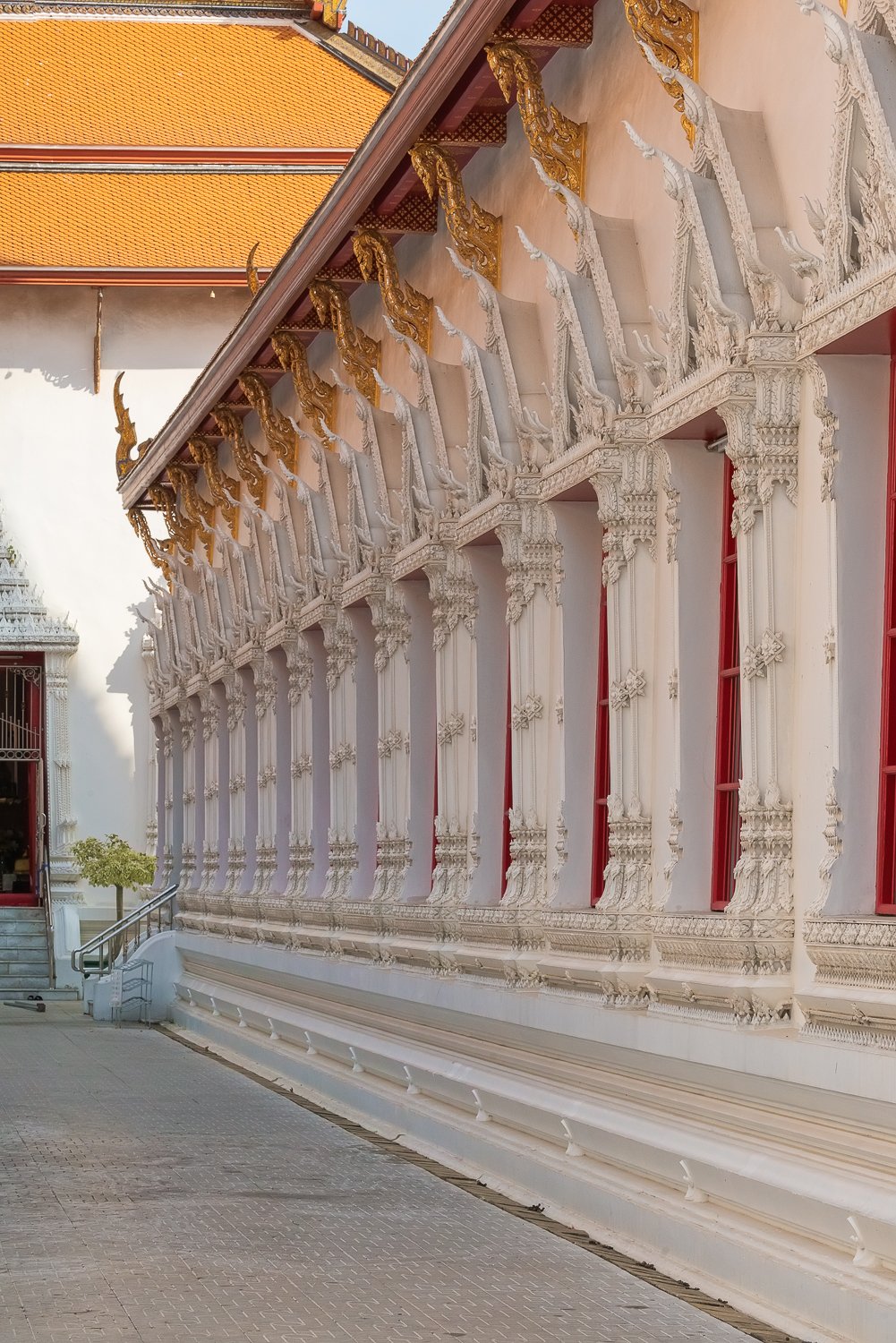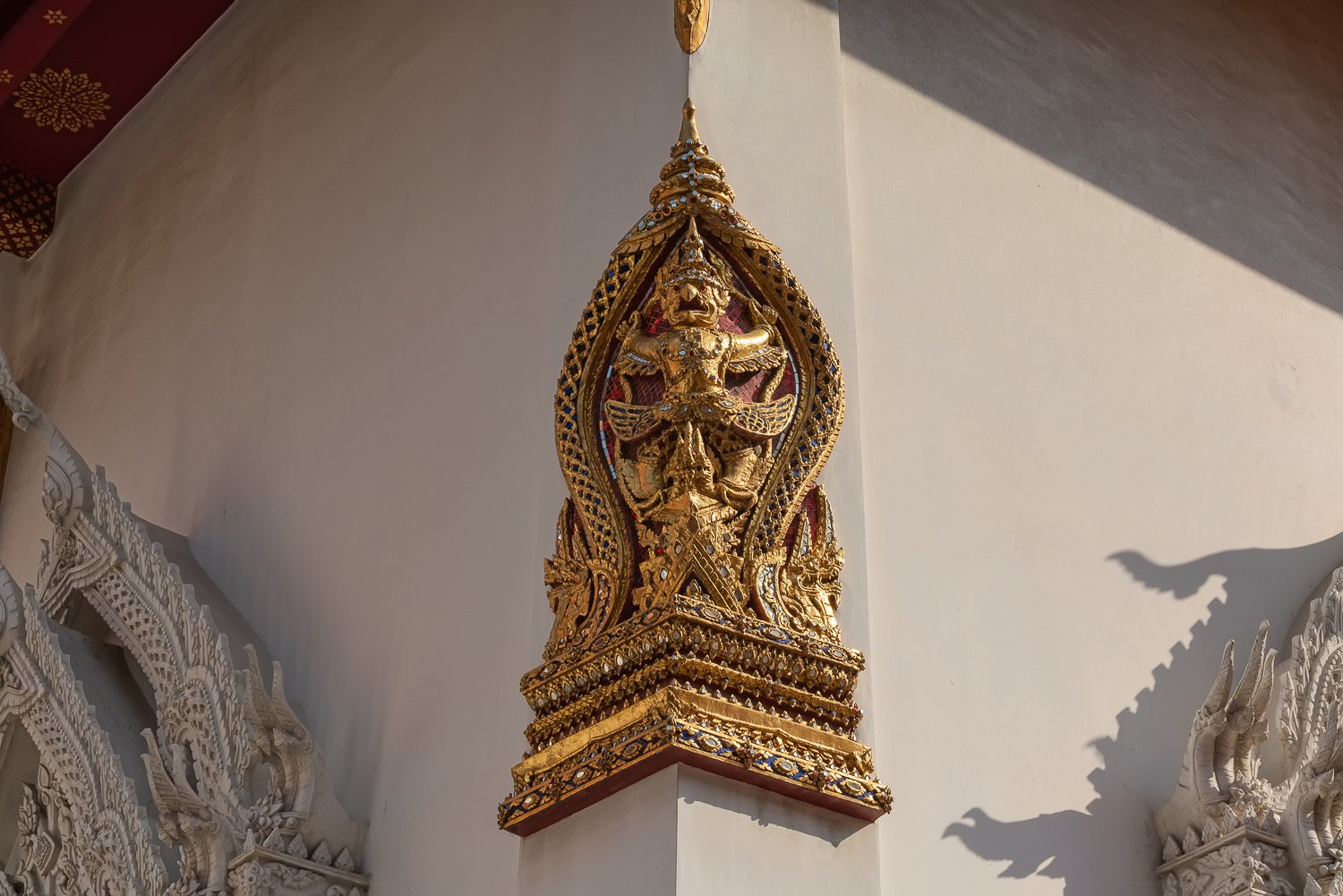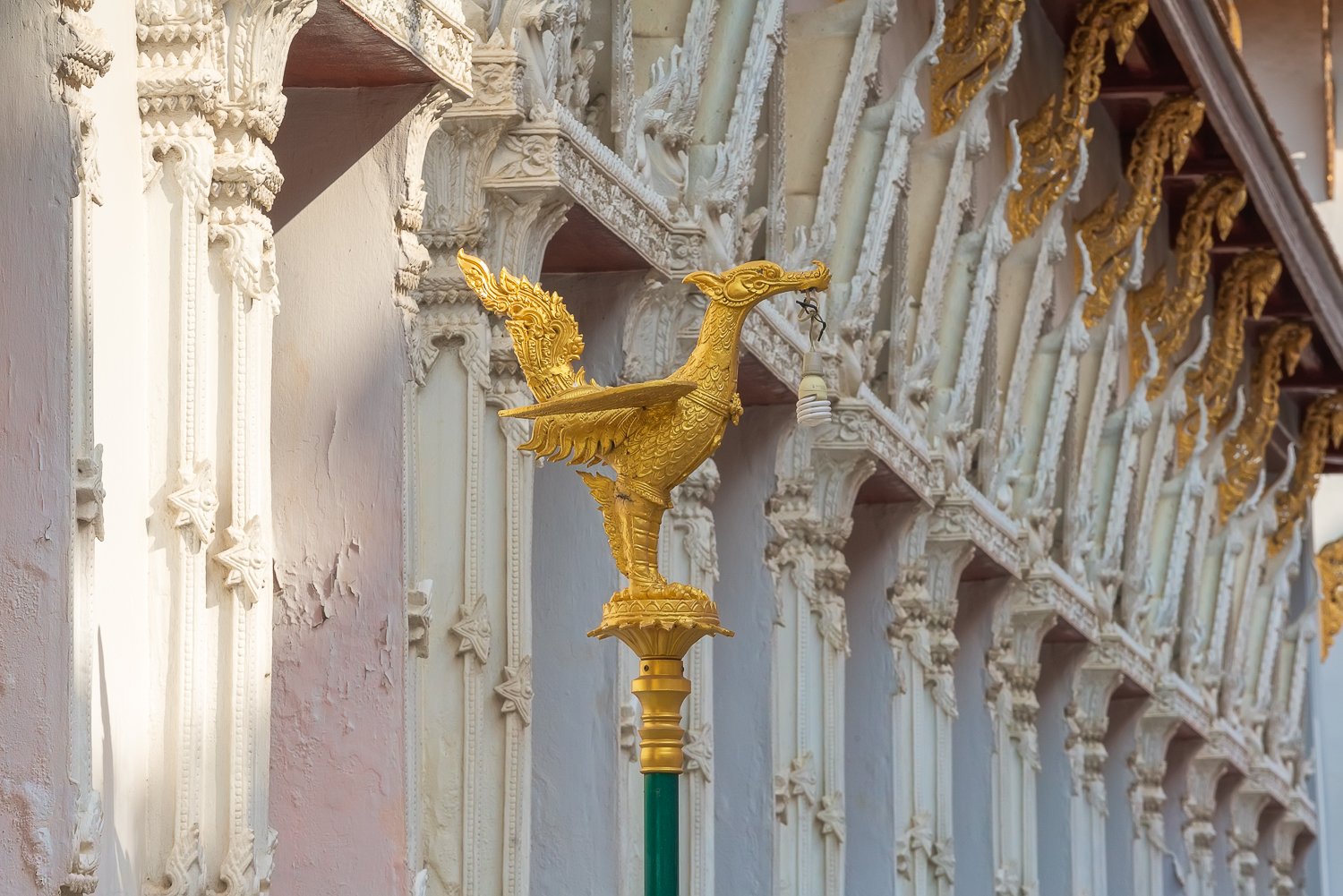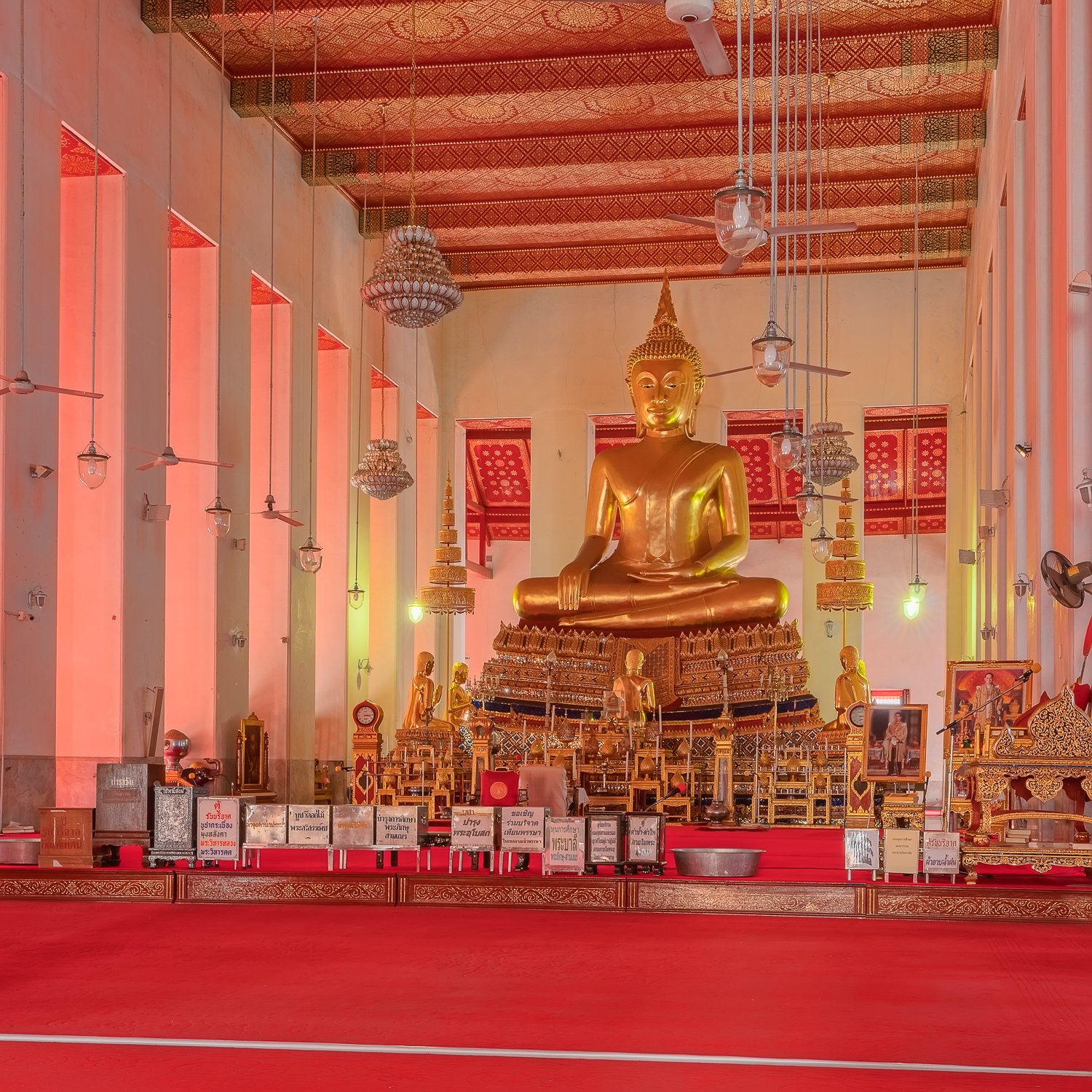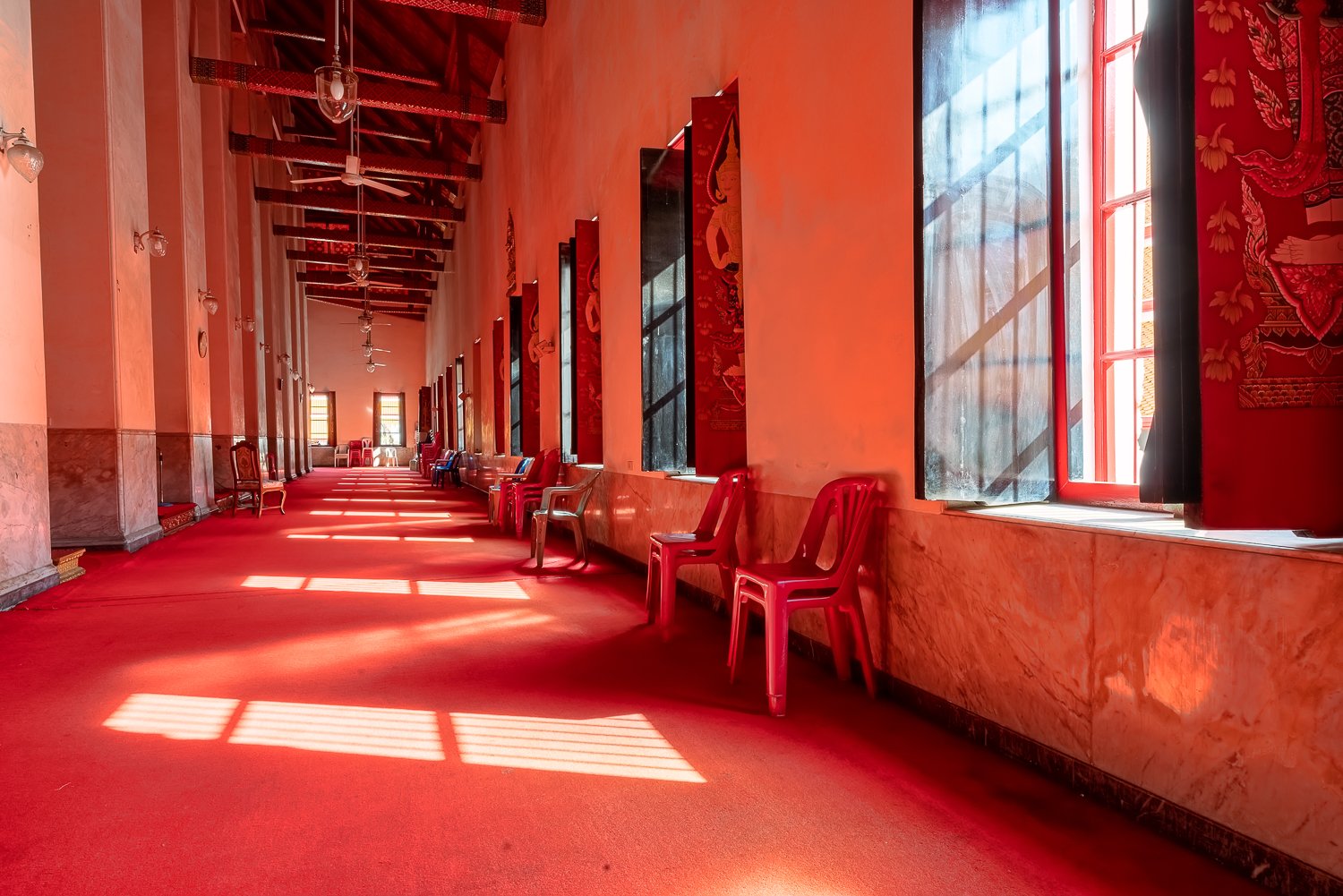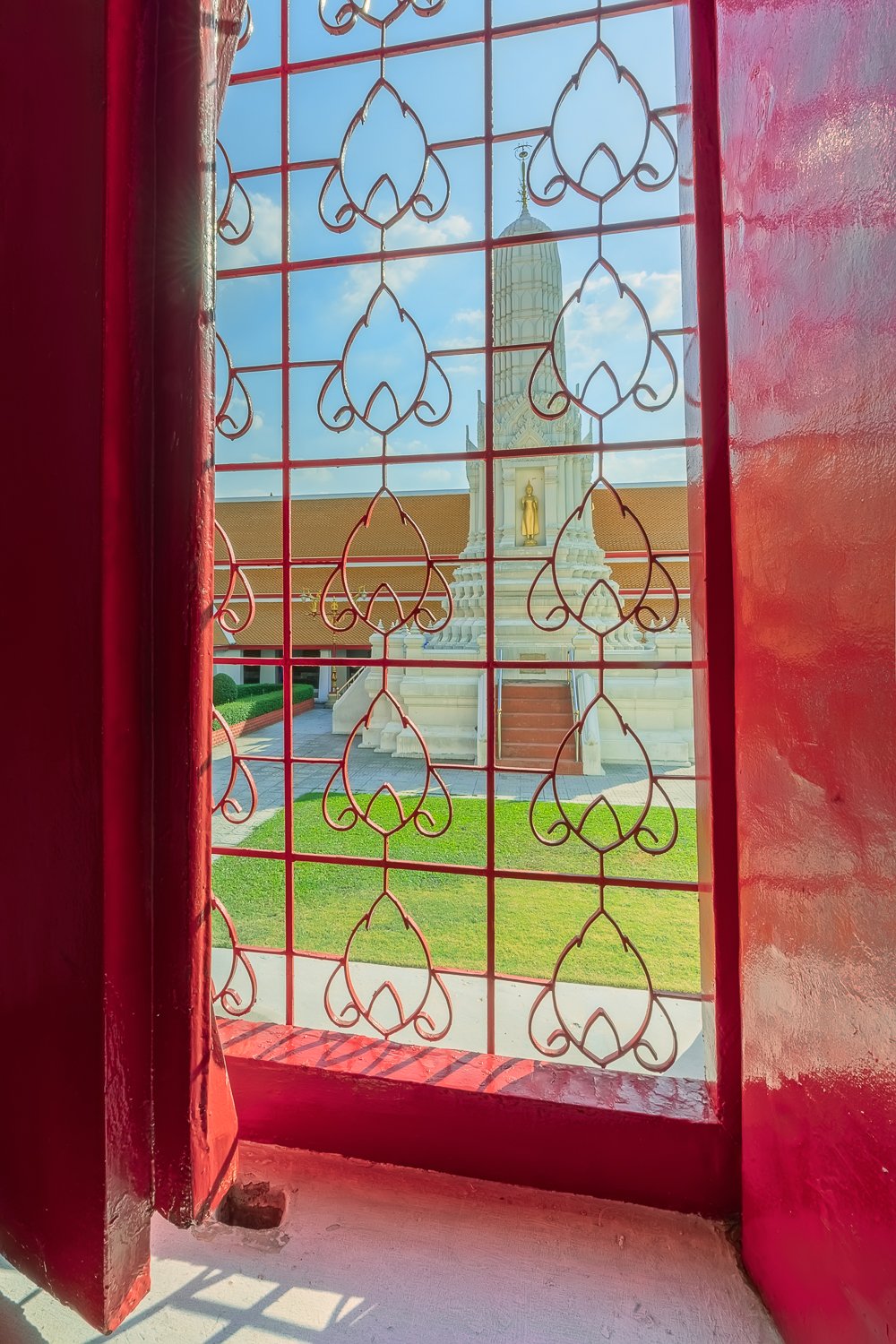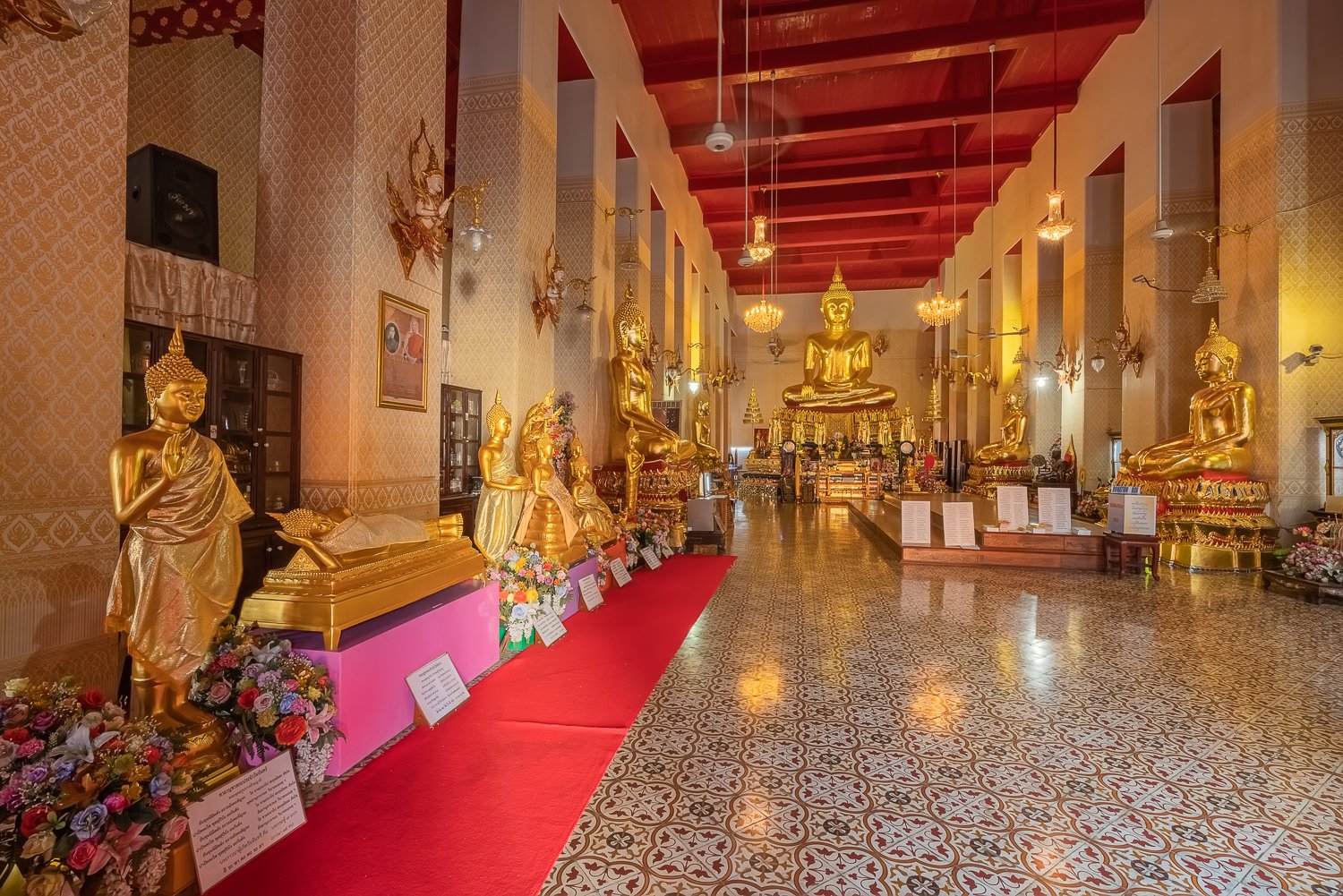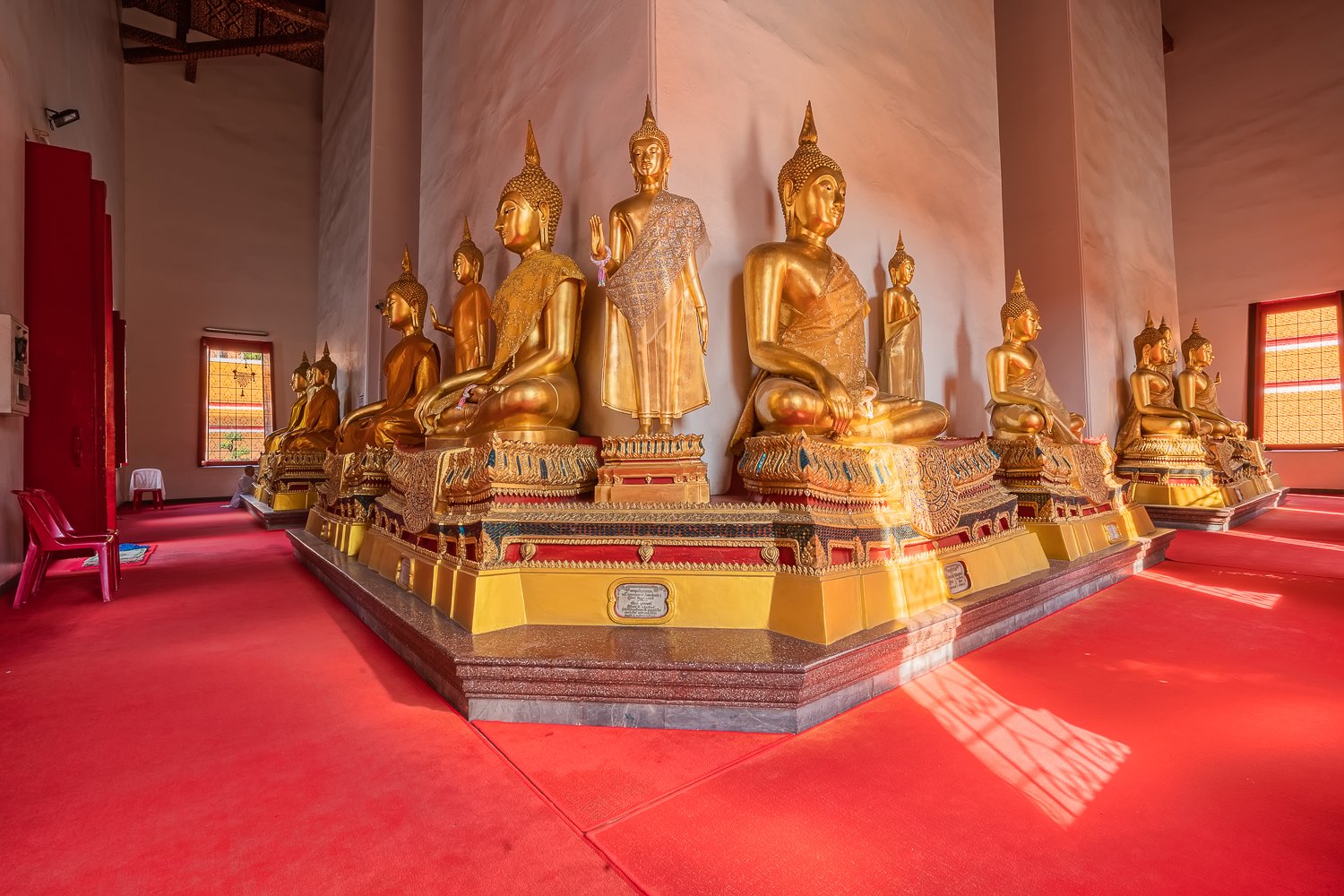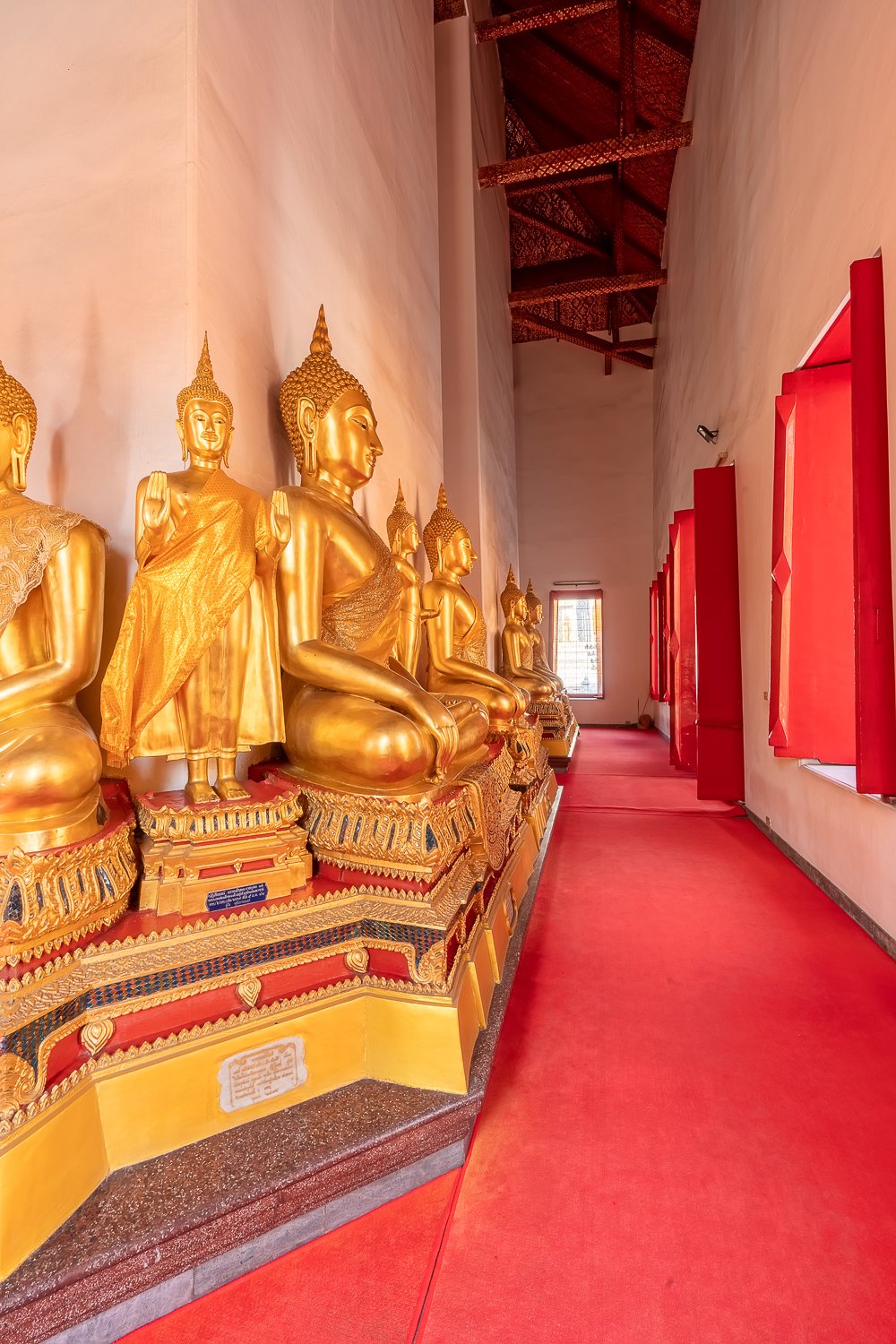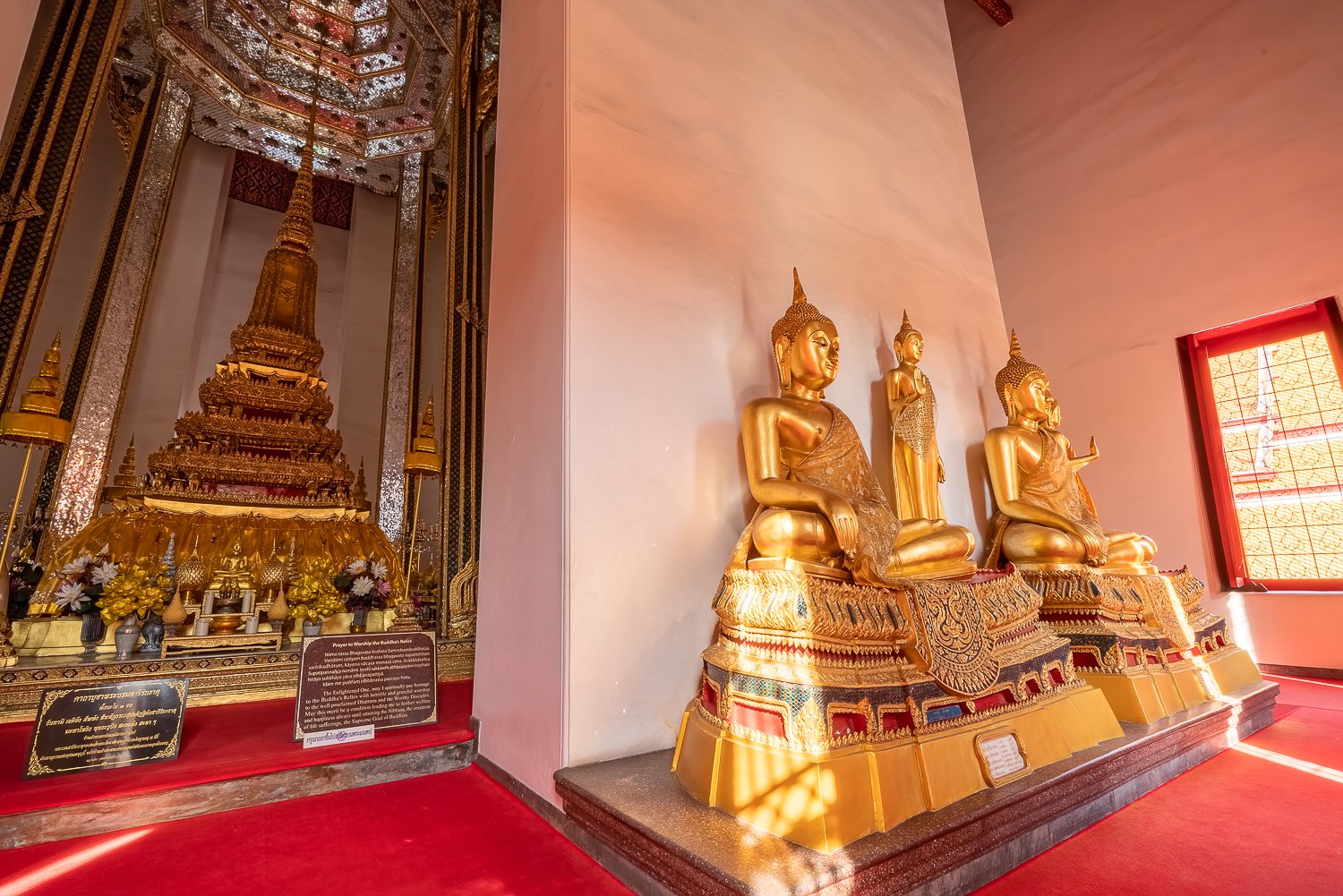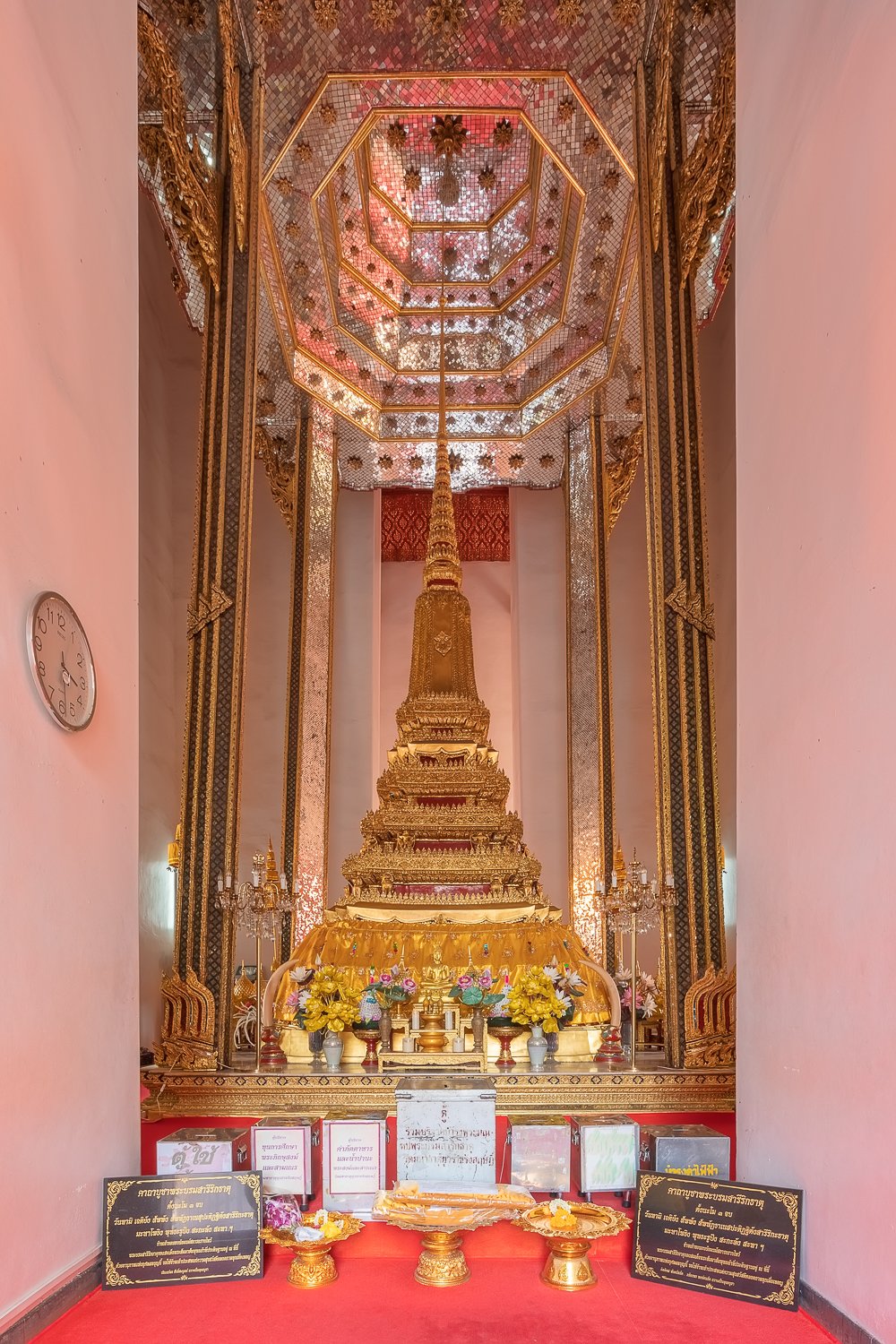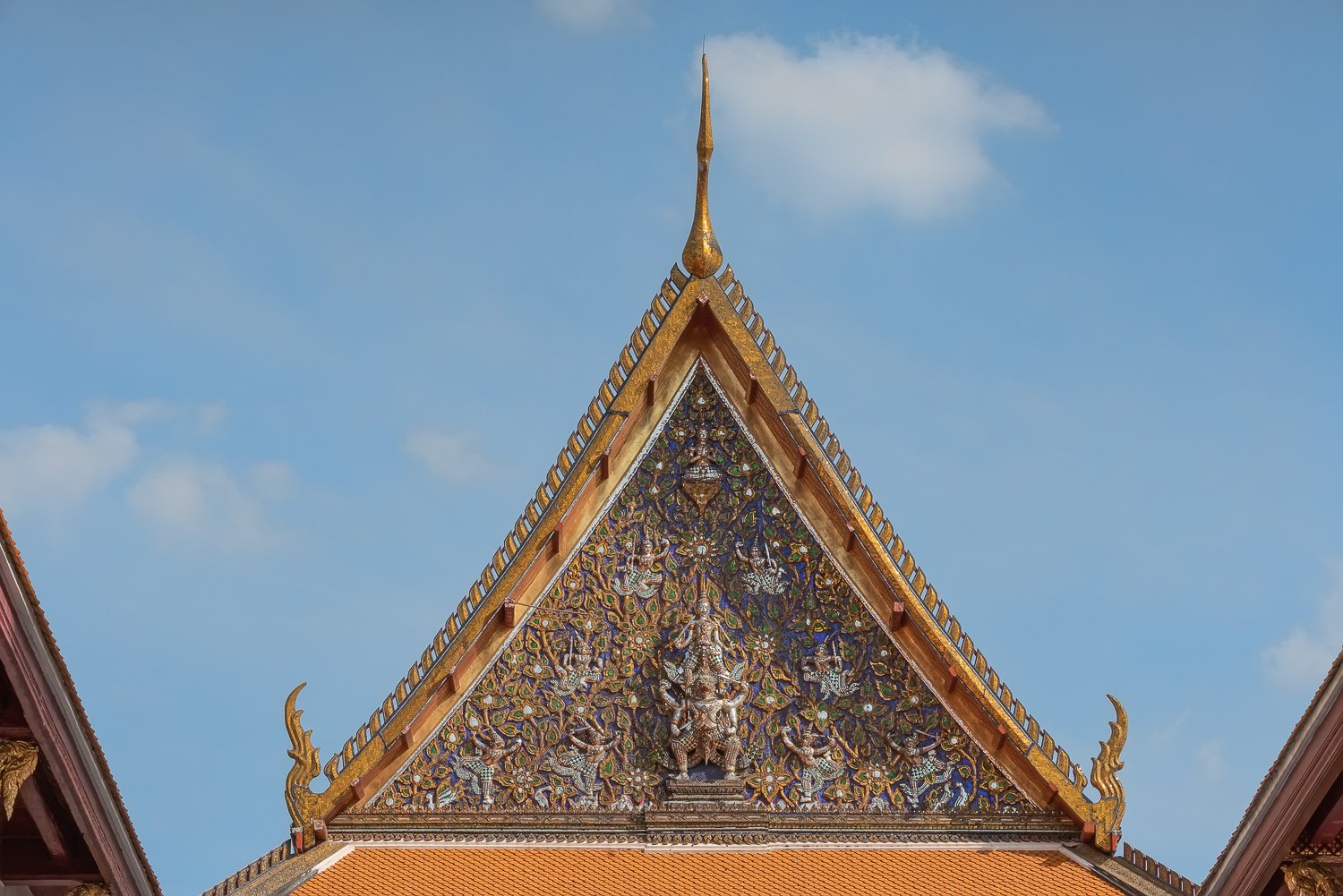Our plan for this evening includes night shoots of the Benchakitti Park. We decide to scout it now so that we can know what to expect later. It is about 30 minutes walk from our hotel and majority of this walk is on a lovely skywalk. We pass the busy highway and from now on, the closer we are to the park the greener it is.
Nasz plan na ten wieczór obejmuje nocne zdjęcia Parku Benchakitti. Idziemy wiec sobie obcykać ten park, żeby później wiedzieć, czego się spodziewać. Do parku mamy około 30 minut spacerem od naszego hotelu, a większość drogi jest na specjalnie zbudowanej dla przechodniów i rowerzystów rampie. Mijamy ruchliwą autostradę i od tej pory im bliżej parku, tym jest bardziej wszystko jest zielone.
It is as if a jungle decided to enter the city, and Bangkok is always full of contrasts. Big, relatively modern houses and hotels are interspersed by small dwellings from wood or even corrugated tin.
Zaczyna być tak, jakby do miasta zdecydowała się wkroczyć dżungla. Bangkok, jak zawsze, jest pełen kontrastów. Duże, stosunkowo nowoczesne domy i hotele przeplatają się z małymi domkami z drewna, a nawet ruderami z blachy falistej.
As we walk alongside a river we suddenly spot a Nessie. I look transfixed at the giant lizard swimming slowly through green waters, like a tiny dinosaur. Soon we will learn that it is a monitor lizard and they are often seen in the park area.
Monitors are some of the world’s biggest lizards and they can grow up to around two metres long and weigh up to 50 kilograms. Water monitor lizards have forked tongues (look carefully at the video clip, and you will notice it at one point), scaly skin, powerful legs, and strong tails. They are carnivores, eating rodents, snakes, fish, birds, and whatever else they can find, including carrion. They do not try to attack people unprovoked (They will be nasty if people try to harm them. But then, who wouldn’t be?).
The sound at the beginning of the video clip is our recording of cicadas.
Idąc wzdłuż rzeki, nagle dostrzegamy Nessie. Patrzymy zafascynowani na olbrzymią jaszczurkę płynącą powoli przez zielone wody, niczym mały dinozaur. Wkrótce dowiemy się, że to odmiana waranów i często widuje się je na terenie wokół parku.
Warany te to jedne z największych jaszczurek na świecie i mogą dorastać do około dwóch metrów długości i ważyć do 50 kilogramów. Warany mają rozwidlony język (widać to w którymś momencie na video clipie poniżej), pokrytą łuskami skórę, mocne nogi i mocne ogony. Są mięsożercami, jedzą gryzonie, węże, ryby, ptaki i wszystko inne, co mogą znaleźć, w tym padlinę. Nie próbują atakować ludzi bez sprowokowania (ale zaatakowane będą agresywne, kto by nie był).
Dźwięk na początku filmiku to nagrane przez nas po drodze do parku cykady.
Part of the park is closed for rebuilding but the beautiful lake surrounded by the tall iconic buildings is accessible. We stroll around, take some pictures, play in between water sprinklers, and then go back to the hotel and have enough time for a gym session and swimming pool laziness before we return to the park for evening shoots.
Część parku jest zamknięta z powodu przebudowy, ale piękne jezioro otoczone wysokimi kultowymi budynkami jest dostępne. Spacerujemy wzdłuż jeziora, robimy zdjęcia, ganiamy między zraszaczami, a potem wracamy do hotelu i mamy jeszcze wystarczająco dużo czasu żeby zrobić trening na siłowni i pozwolić sobie na lenistwo na basenie, zanim wrócimy do parku na wieczorną sesję.

